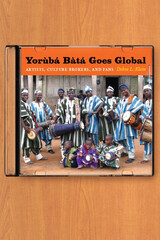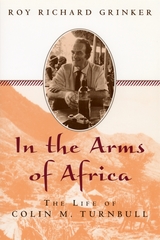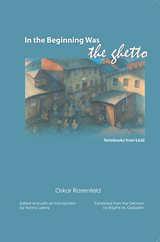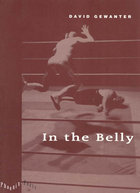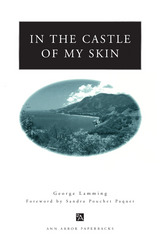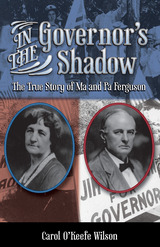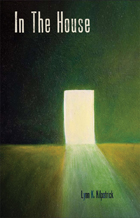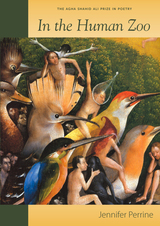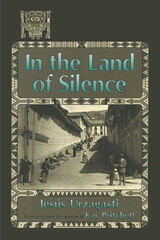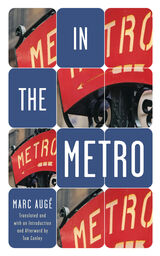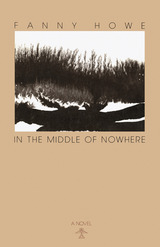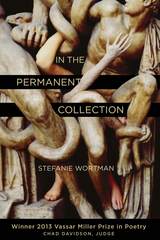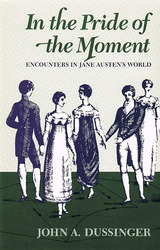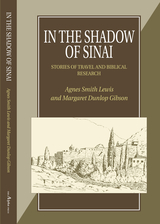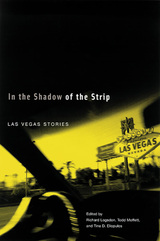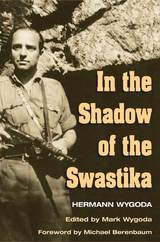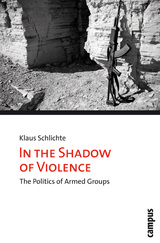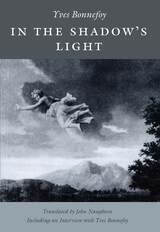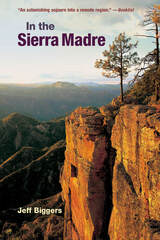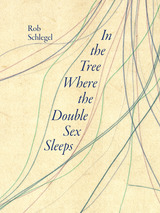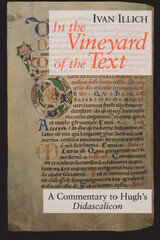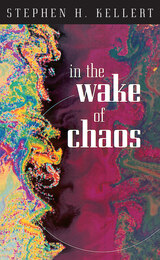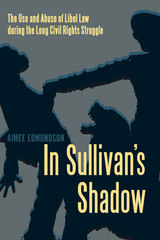 In Sullivan's Shadow: The Use and Abuse of Libel Law during the Long Civil Rights Struggle
Aimee Edmondson
University of Massachusetts Press, 2019 For many years, the far right has sown public distrust in the media as a political strategy, weaponizing libel law in an effort to stifle free speech and silence African American dissent. In Sullivan's Shadow demonstrates that this strategy was pursued throughout the civil rights era and beyond, as southern officials continued to bring lawsuits in their attempts to intimidate journalists who published accounts of police brutality against protestors. Taking the Supreme Court's famous 1964 case New York Times v. Sullivan as her starting point, Aimee Edmondson illuminates a series of fascinating and often astounding cases that preceded and followed this historic ruling.
Drawing on archival research and scholarship in journalism, legal history, and African American studies, Edmondson offers a new narrative of brave activists, bold journalists and publishers, and hardheaded southern officials. These little-known courtroom dramas at the intersection of race, libel, and journalism go beyond the activism of the 1960s and span much of the country's history, beginning with lawsuits filed against abolitionist William Lloyd Garrison and concluding with a suit spawned by the 1988 film Mississippi Burning.
 In Support of Families
Michael Yogman
Harvard University Press, 1986 Families today are experiencing untold pressures and are expected to shoulder enormous burdens at a time when resources for support are becoming ever scarcer. This important book examines the effects of stress on both children and parents and explores various strategies for coping.
The authors—experts in child health and development and in business and social policy—emphasize that the problems of the family and of its members cannot be considered individually. They view the family as a dynamic system whose health is vitally related to its internal relationships and its interactions with other social networks. Stress in this context can be either a positive or a negative influence on the family’s effectiveness in raising children, depending on the personal and public resources available.
The strength of the book lies in its integrated approach to a many-sided problem. The authors provide reviews of research, clinical applications, and theoretical discussions, including several frameworks for understanding the constellation of factors within the family that affect children’s development. They examine specific situations that can present families with formidable challenges: unemployment, divorce, two-career families, single parenthood,teenage pregnancy, demands from the workplace. Some of these situations are traumatic but brief; others, such as chronic illness, require long-term coping strategies. The authors show the similarities that underlie these stressful situations—how they can affect the fabric of family life and the development of the young child.
The emphasis throughout the book is on policy implications: the urgent need for more enlightened and supportive corporate and government involvement. Unless we make the well-being of the family a priority, the number of children in adverse situations will continue to increase. This book will serve as an indispensable guide to psychologists, pediatricians, psychiatrists, educators, business executives, and government officials.
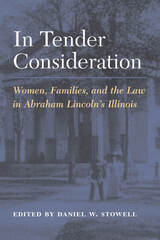 In Tender Consideration: Women, Families, and the Law in Abraham Lincoln's Illinois
Edited by Daniel W. Stowell
University of Illinois Press, 2002 From debt to divorce, from adultery to slander, cases with women as plaintiffs, defendants, or both appeared regularly on docket books in antebellum Illinois. Nearly one-fifth of Abraham Lincoln's cases involved women as litigants, and during the twenty-five years of his legal career thousands of women appeared in Illinois courts, as litigants, criminal defendants, witnesses, and spectators. Drawing on the rich resources of The Law Practice of Abraham Lincoln: Complete Documentary Edition, a DVD version of Lincoln's complete legal papers, In Tender Consideration scans the full range of family woes that antebellum Americans took to the law. Deserted wives, destitute widows, jilted brides with illegitimate children, and slandered women brought their cases before the courts, often receiving a surprising degree of sympathy and support. Through the stories of dozens of individuals who took legal action to obtain a divorce, contest a will, prosecute a rapist, or assert rights to family property, this volume illuminates the legal status of women and children in Illinois and their experiences with the law in action. Contributors document how the courts viewed children and how they responded to inheritance, custody, and other types of cases involving children or their interests. These cases also highlight Lincoln's life in law, placing him more clearly within the context of the legal culture in which he lived and raising intriguing questions about the influence of his legal life on his subsequent political one.
 In the Absence of Clocks
Jacob Shores-Arguello
Southern Illinois University Press, 2012 In the fascinating collection of poems, In the Absence of Clocks, poet Jacob Shores-Arguello takes readers on an illuminating voyage through Ukrainian life. Set during the turmoil of the 2004 Orange Revolution, when the country trembled in the wake of political corruption and public outrage, Shores-Arguello’s lyrics of a revolution provide a glimpse into a world at once foreign and familiar. Throughout the collection are the iconic images and myriad juxtapositions of Ukrainian life. wolves howling in the snow and bakers pounding early-morning loaves of bread; farmlands and cities alike rocked by political transformation; gypsies and protesters; opulent images of Byzantium and the concrete ghosts of Chernobyl—all meet here at the crossroads of East and West, democracy and communism, reality and mythology. As the narrator travels across the Ukraine, he does much more than cross the distances between Horlivka and Odessa or Kiev and the Black Sea. As the tides of change swirl around him, they mirror his own search for a cultural identity and history.
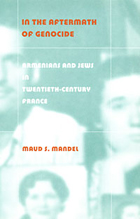 In the Aftermath of Genocide: Armenians and Jews in Twentieth-Century France
Maud S. Mandel
Duke University Press, 2003 France is the only Western European nation home to substantial numbers of survivors of the World War I and World War II genocides. In the Aftermath of Genocide offers a unique comparison of the country’s Armenian and Jewish survivor communities. By demonstrating how—in spite of significant differences between these two populations—striking similarities emerge in the ways each responded to genocide, Maud S. Mandel illuminates the impact of the nation-state on ethnic and religious minorities in twentieth-century Europe and provides a valuable theoretical framework for considering issues of transnational identity. Investigating each community’s response to its violent past, Mandel reflects on how shifts in ethnic, religious, and national affiliations were influenced by that group’s recent history. The book examines these issues in the context of France’s long commitment to a politics of integration and homogenization—a politics geared toward the establishment of equal rights and legal status for all citizens, but not toward the accommodation of cultural diversity. In the Aftermath of Genocide reveals that Armenian and Jewish survivors rarely sought to shed the obvious symbols of their ethnic and religious identities. Mandel shows that following the 1915 genocide and the Holocaust, these communities, if anything, seemed increasingly willing to mobilize in their own self-defense and thereby call attention to their distinctiveness. Most Armenian and Jewish survivors were neither prepared to give up their minority status nor willing to migrate to their national homelands of Armenia and Israel. In the Aftermath of Genocide suggests that the consolidation of the nation-state system in twentieth-century Europe led survivors of genocide to fashion identities for themselves as ethnic minorities despite the dangers implicit in that status.
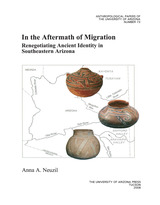 In the Aftermath of Migration: Renegotiating Ancient Identity in Southeastern Arizona
Anna A. Neuzil
University of Arizona Press, 2008 The Safford and Aravaipa valleys of Arizona have always lingered in the wings of Southwestern archaeology, away from the spotlight held by the more thoroughly studied Tucson and Phoenix Basins, the Mogollon Rim area, and the Colorado Plateau. Yet these two valleys hold intriguing clues to understanding the social processes, particularly migration and the interaction it engenders, that led to the coalescence of ancient populations throughout the Greater Southwest in the fourteenth and fifteenth centuries A.D. Because the Safford and Aravaipa valleys show cultural influences from diverse areas of the pre-Hispanic Southwest, particularly the Phoenix Basin, the Mogollon Rim, and the Kayenta and Tusayan region, they serve as a microcosm of many of the social changes that occurred in other areas of the Southwest during this time.
This research explores the social changes that took place in the Safford and Aravaipa valleys during the thirteenth through the fifteenth centuries A.D. as a result of an influx of migrants from the Kayenta and Tusayan regions of northeastern Arizona. Focusing on domestic architecture and ceramics, the author evaluates how migration affects the expression of identity of both migrant and indigenous populations in the Safford and Aravaipa valleys and provides a model for research in other areas where migration played an important role.
Archaeologists interested in the Greater Southwest will find a wealth of information on these little-known valleys that provides contextualization for this important and intriguing time period, and those interested in migration in the ancient past will find a useful case study that goes beyond identifying incidents of migration to understanding its long-lasting implications for both migrants and the local people they impacted.
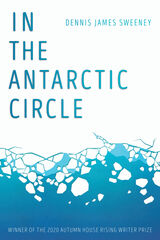 In the Antarctic Circle
Dennis James Sweeney
Autumn House Press, 2021 This collection addresses issues of identity as two people find themselves living in an uncommon landscape. Through hybrid narrative prose poems, Hank and an unnamed narrator try to navigate their relationship and understand their identities amid a landscape that offers them almost nothing. The continent at first seems empty, but something emerges in the vacuum of Antarctica. The narrator’s gender skips and changes, and the characters’ self-awareness grows into a sort of horror. Dennis James Sweeney’s poems consider the fullness of emptiness, revealing attempts to love and grow when surrounded by a white and frigid landscape that seems to go on forever.
The space of these poems is something beyond the Antarctic of scientific exploration, the icy outpost that has served for so long as a masculine proving ground for polar explorers. This is the Antarctica of domestic disharmony, of love amid loneliness, where two people encounter themselves in the changeless breadth at the end of the world.
In the Antarctic Circle is the winner of the Autumn House Press 2020 Rising Writer Prize in Poetry.
 In the Antarctic Circle
Dennis James Sweeney
Autumn House Press, 2021 This collection addresses issues of identity as two people find themselves living in an uncommon landscape. Through hybrid narrative prose poems, Hank and an unnamed narrator try to navigate their relationship and understand their identities amid a landscape that offers them almost nothing. The continent at first seems empty, but something emerges in the vacuum of Antarctica. The narrator’s gender skips and changes, and the characters’ self-awareness grows into a sort of horror. Dennis James Sweeney’s poems consider the fullness of emptiness, revealing attempts to love and grow when surrounded by a white and frigid landscape that seems to go on forever.
The space of these poems is something beyond the Antarctic of scientific exploration, the icy outpost that has served for so long as a masculine proving ground for polar explorers. This is the Antarctica of domestic disharmony, of love amid loneliness, where two people encounter themselves in the changeless breadth at the end of the world.
In the Antarctic Circle is the winner of the Autumn House Press 2020 Rising Writer Prize in Poetry.
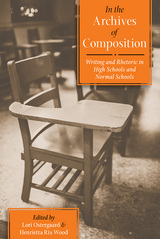 In the Archives of Composition: Writing and Rhetoric in High Schools and Normal Schools
Lori Ostergaard
University of Pittsburgh Press, 2015 In the Archives of Composition offers new and revisionary narratives of composition and rhetoric’s history. It examines composition instruction and practice at secondary schools and normal colleges, the two institutions that trained the majority of U.S. composition teachers and students during the nineteenth and twentieth centuries. Drawing from a broad array of archival and documentary sources, the contributors provide accounts of writing instruction within contexts often overlooked by current historical scholarship. Topics range from the efforts of young women to attain rhetorical skills in an antebellum academy, to the self-reflections of Harvard University students on their writing skills in the 1890s, to a close reading of a high school girl’s diary in the 1960s that offers a new perspective on curriculum debates of this period. Taken together, the chapters begin to recover how high school students, composition teachers, and English education programs responded to institutional and local influences, political movements, and pedagogical innovations over a one-hundred-and-thirty-year span.
In the Arms of Africa: The Life of Colin Turnbull
Roy Richard Grinker
University of Chicago Press, 2001 Colin Turnbull made a name for himself with The Forest People, his acclaimed study of African Pygmies. His second book, however, The Mountain People, ignited a swirl of controversy within anthropology and tainted Turnbull's reputation as a respected anthropologist.
In this scrupulously researched biography, Roy Richard Grinker charts the rise and fall of this colorful and controversial man—from his Scottish family and British education to travels in Africa and his great love affair with Joe Towles. Grinker, noted for his own work on the Pygmies, herein gives readers a fascinating account of Turnbull's life and work.
Originally published by St. Martin's Press
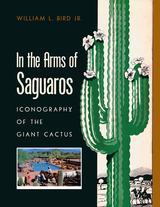 In the Arms of Saguaros: Iconography of the Giant Cactus
William L. Bird Jr.
University of Arizona Press, 2023 An essential—and monumental—member of the Sonoran Desert ecosystem, the saguaro cactus has become the quintessential icon of the American West.
In the Arms of the Saguaros shows how, from the botanical explorers of the nineteenth century to the tourism boosters in our own time, saguaros and their images have fulfilled attention-getting needs and expectations. Through text and lavish images, this work explores the saguaro’s growth into a western icon from the early days of the American railroad to the years bracketing World War II, when Sun Belt boosterism hit its zenith and proponents of tourism succeed in moving the saguaro to the center of the promotional frame.
This book explores how the growth of tourism brought the saguaro to ever-larger audiences through the proliferation of western-themed imagery on the American roadside. The history of the saguaro’s popular and highly imaginative range points to the current moment in which the saguaro touches us as a global icon in art, fashion, and entertainment.
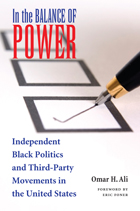 In the Balance of Power: Independent Black Politics and Third-Party Movements in the United States
Omar H. Ali
Ohio University Press, 2008
Historically, most black voters in the United States have aligned themselves with one of the two major parties: the Republican Party from the time of the Civil War to the New Deal and, since the New Deal—and especially since the height of the modern civil rights movement—the Democratic Party. However, as In the Balance of Power convincingly demonstrates, African Americans have long been part of independent political movements and have used third parties to advance some of the most important changes in the United States, notably the abolition of slavery, the extension of voting rights, and the enforcement of civil rights.
Since the early nineteenth century, there has been an undercurrent of political independence among African Americans. They helped develop the Liberty Party in the 1840s and have continued to work with third parties to challenge the policies of the two major parties. But despite the legal gains of the modern civil rights movement, elements of Jim Crow remain deeply embedded in our electoral process.
In the Balance of Power presents a history and analysis of African American third-party movements that can help us better understand the growing diversity among black voters today.
In the Balance of Power: Independent Black Politics and Third-Party Movements in the United States
Omar H. Ali
Ohio University Press, 2020 REVISED AND EXPANDED EDITION Reveals the multiple independent political tactics and strategies that African Americans have used to expand democracy and uphold civil and political rights since the founding of the nation. This new edition of Ali’s groundbreaking narrative includes an epilogue by independent political analyst and leader Jacqueline Salit. New material addresses the historic presidencies of both Barack Obama and Donald Trump, as well as the rising tide of independent and anti-party sentiments.
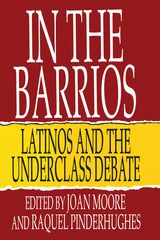 In the Barrios: Latinos and the Underclass Debate
Joan Moore
Russell Sage Foundation, 1993 The image of the "underclass," framed by persistent poverty, long-term joblessness, school dropout, teenage pregnancy, and drug use, has become synonymous with urban poverty. But does this image tell us enough about how the diverse minorities among the urban poor actually experience and cope with poverty? No, say the contributors to In the Barrios. Their portraits of eight Latino communities—in New York, Los Angeles, Miami, Houston, Chicago, Albuquerque, Laredo, and Tucson—reveal a far more complex reality. In the Barrios responds directly to current debates on the origins of the "underclass" and depicts the cultural, demographic, and historical forces that have shaped poor Latino communities. These neighborhoods share many hardships, yet they manifest no "typical" form of poverty. Instead, each group adapts its own cultural and social resources to the difficult economic circumstances of American urban life. The editors point to continued immigration as an issue of overriding importance in understanding urban Latino poverty. Newcomers to concentrated Latino areas build a local economy that provides affordable amenities and promotes ethnic institutional development. In many of these neighborhoods, a network of emotional as well as economic support extends across families and borders. The first major assessment of inner-city Latino communities in the United States, In the Barrios will change the way we approach the current debate on urban poverty, immigration, and the underclass.
In the Beginning: First Novels in Mystery Series
Mary Jean Demarr
University of Wisconsin Press, 1995 This volume contains fourteen essays by authoritative academics studying the field of mystery and detective fiction. The essays all concentrate on the first novels in established series, analyzing ways in which the opening books of the series do or do not create patterns followed in succeeding novels.
In the Beginning Was the Ghetto: Notebooks from Lodz
Oskar Rosenfeld
Northwestern University Press, 2002 From February 1942 to July 1944, Oskar Rosenfeld served in the statistics department of the Lodz ghetto. A playwright and journalist, he kept his own notes on life and conditions in the ghetto for a fictionalized account he hoped to write one day. Though Rosenfeld eventually perished at Auschwitz, In the Beginning Was the Ghetto projects his voice at last to the wider world.
In the Belly
David Gewanter
University of Chicago Press, 1996 "Gewanter's poetry offers a sense of obstacles, and of obstacles not overcome but ridden and thus dealt with, and is nowhere better illustrated than in 'Conduct of Our Loves.' Read this poem in the book store and you will want to buy the book."—Thom Gunn
In the Black Window: NEW AND SELECTED POEMS
Michael Van Walleghen
University of Illinois Press, 2004 The title of Michael Van Walleghen's new collection evokes thematic preoccupations that have shadowed him throughout his long career. Appearing as a phrase in the poems themselves, In the Black Window more generally points to Van Walleghen's enduring interest in the intersection between inner and outer worlds of experience--those liminal moments in other worlds where we become aware of ourselves. We live at once in a strictly personal, material dimension but also in a distinctly spiritual one. Yet, when looking from a lighted kitchen into a night-black window on a winter evening, we might perhaps become suddenly aware not only of our own reflection, but also of our complicity in some deeper mystery altogether.
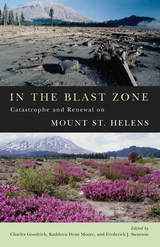 In the Blast Zone: Catastrophe and Renewal on Mt. St. Helens
Charles Goodrich
Oregon State University Press, 2008 As it erupted in 1980, Mount St. Helens captured the attention of the region, nation, and world, and it continues to fascinate us today: a constant reminder that we live in volcano country. In lucid prose and poetry by some of America's leading writers and scientists, In the Blast Zone explores this story of destruction and renewal in all its human, geological, and ecological dimensions. Most popular accounts of the momentous eruption have focused on the devastation it caused. More recent scientific work on Mount St. Helens tells a story of unexpectedly rapid and varied ecological and geological change.
In the Blast Zone is the first book to present a cross-pollination of literary and scientific perspectives on the mountain's history of cataclysm and renewal. Most of the contributors to this volume camped together on Mount St. Helens for four days, hiking, observing, and sharing ideas. They asked the question: What can this radically altered landscape tell us about nature and how to live our lives? In the Blast Zone collects some of their answers. While introducing ecological and geological insights, it also tells compelling stories about how science and literature inform our lives and our relationship to nature.
These writings will startle readers with new recognition of the matchless gifts of Mount St. Helens: the gifts of beauty, of illumination, of hope. The Contributors Gary Braasch, John Calderazzo, Christine Colasurdo, Charlie Crisafulli, John Daniel, Jerry Franklin, Charles Goodrich, Robin Kimmerer, Ursula K. LeGuin, Tim McNulty, Kathleen Dean Moore, Nalini Nadkarni, Robert Michael Pyle, Scott Russell Sanders, James Sedell, Gary Snyder, Kim Stafford, Frederick J. Swanson, Tony Vogt, Ann Zwinger, Susan Zwinger
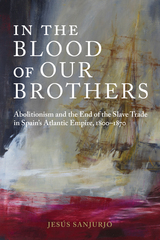 In the Blood of Our Brothers: Abolitionism and the End of the Slave Trade in Spain's Atlantic Empire, 1800–1870
Jesús Sanjurjo
University of Alabama Press, 2021 Finalist for the Paul E. Lovejoy Book Prize
Details the abolition of the slave trade in the Atlantic World to the 1860s Throughout the nineteenth century, very few people in Spain campaigned to stop the slave trade and did even less to abolish slavery. Even when some supported abolition, the reasons that moved them were not always humanitarian, liberal, or egalitarian. How abolitionist ideas were received, shaped, and transformed during this period has been ripe for study. Jesús Sanjurjo’s In the Blood of Our Brothers: Abolitionism and the End of the Slave Trade in Spain’s Atlantic Empire, 1800–1870 provides a comprehensive theory of the history, the politics, and the economics of the persistence and growth of the slave trade in the Spanish empire even as other countries moved toward abolition. Sanjurjo privileges the central role that British activists and diplomats played in advancing the abolitionist cause in Spain. In so doing, he brings to attention the complex and uneven development of abolitionist and antiabolitionist discourses in Spain’s public life, from the beginning of the nineteenth century to the end of the transatlantic trade. His delineation of the ideological and political tension between Spanish liberalism and imperialism is crucial to formulating a fuller explanation of the reasons for the failure of anti–slave trade initiatives from 1811 to the 1860s. Slave trade was tied to the notion of inviolable property rights, and slavery persisted and peaked following three successful liberal revolutions in Spain. Visit https://inthebloodofourbrothers.com/ for more information.
 In The Box Called Pleasure
Kim Addonizio
University of Alabama Press, 1999 The unique product of a poet with a gift for a kind of fiction that is full of formal bravado, strange incident, and a stranger but very human pathos These gutsy and post feminist stories will elicit the shock of recognition from women and may reveal to men something about the further regions of the female psyche. By turns graphic and funny, these urban tales present characters who are teetering on the edge. Indifferent or absent lovers, too much alcohol, too many cigarettes, obsession, paranoia, a desire that is always fresh in spite of the facts—this is the macabre landscape of these very unusual and unrestrained works. In "Reading Sontag," Addonizio invades and recasts Susan Sontag's essay "The Pornographic Imagination" while describing a monumentally failed relationship. In "The Gift," a woman finds a dildo on the street and is magically transformed into a man.These are fictions to prepare us for the real millennium.
In the Castle of My Skin
George Lamming
University of Michigan Press, 1992 Nearly forty years after its initial publication, George Lamming's In the Castle of My Skin is considered a classic narrative of the Black colonial experience. This poetic autobiographical novel juxtaposes the undeveloped, unencumbered life of a small Caribbean island with the materialism and anxiety of the twentieth century. Written when Lamming was twenty-three and residing in England, In the Castle of My Skin poignantly chronicles the author's life from his ninth to his nineteenth year. Through the eyes of a young boy the experiences of colonial education, class tensions, and natural disaster are interpreted and reinterpreted, mediated through the presence of the old villagers and friends who leave for the mainland. One of the leading Black writers of the twentieth century, George Lamming is the author of numerous works exploring the colonial experience.
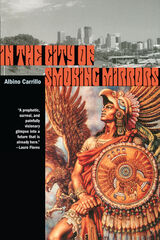 In the City of Smoking Mirrors
Albino Carrillo
University of Arizona Press, 2004 Huitzilopochtli has returned. Aztec destroyer, god of sun and war. He of the hummingbird. Son of Coatlique, Our Lady of the Serpent Skin. But you can call him H. H. is reborn in the sprawling suburbs of an American metroplex in the late twentieth century, a place where "the future is a cartoon of the future." Life in suburbia is hard for an Aztec god: H. falls in and out of love, works downtown as an oficinista, raises children, and learns to command the awesome power of modern electronic media. Then one indifferent summer's day H. is seriously wounded by the police—in a case of mistaken identity, of course—and faces death once more.
In the City of Smoking Mirrors relates H.'s adventures as he hovers between life and death, revisiting his homeland and ancestors. He issues letters and edicts—to the faithful, to his dead amigos—and chronicles his circumnavigation of the Land of the Dead and "what he saw there that made him write this book." In tantalizing verse that walks the edge of dream, Albino Carrillo takes readers on a lyrical exploration of a dark netherworld, a quest for hope in a universe overshadowed by impending doom—a place where "The demons you'll have to defeat on your inward journey / Are like so many little yellow hornets buzzing about / Window screens in summer, angry but looking / For anything sweet, any way out . . . ." Through the unforgettable persona of Huitzilopochtli, Carrillo shows us the transitory nature of our passions and wounds as he chisels a new headstone for our times.
 In the Company of Books: Literature and Its "Classes" in Nineteenth-Century America
Sarah Wadsworth
University of Massachusetts Press, 2006 A vital feature of American culture in the nineteenth century was the growing awareness that the literary marketplace consisted not of a single, unified, relatively homogeneous reading public but rather of many disparate, overlapping reading communities differentiated by interests, class, and level of education as well as by gender and stage of life. Tracing the segmentation of the literary marketplace in nineteenth-century America, this book analyzes the implications of the subdivided literary field for readers, writers, and literature itself.
With sections focusing on segmentation by age, gender, and cultural status, In the Company of Books analyzes the ways authors and publishers carved up the field of literary production into a multitude of distinct submarkets, differentiated their products, and targeted specific groups of readers in order to guide their book-buying decisions. Combining innovative approaches to canonical authors such as Nathaniel Hawthorne, Louisa May Alcott, Mark Twain, and Henry James with engaging investigations into the careers of many lesser-known literary figures, Sarah Wadsworth reveals how American writers responded to—and contributed to—this diverse, and diversified, market.
In the Company of Books contends that specialized editorial and marketing tactics, in concert with the narrative strategies of authors and the reading practices of the book-buying public, transformed the literary landscape, leading to new roles for the book in American culture, the innovation of literary genres, and new relationships between books and readers. Both an exploration of a fragmented print culture through the lens of nineteenth-century American literature and an analysis of nineteenth-century American literature from the perspective of this subdivided marketplace, this wide-ranging study offers fresh insight into the impact of market forces on the development of American literature.
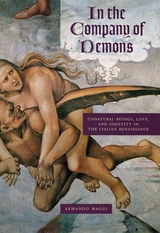 In the Company of Demons: Unnatural Beings, Love, and Identity in the Italian Renaissance
Armando Maggi
University of Chicago Press, 2006 Who are the familiar spirits of classical culture and what is their relationship to Christian demons? In its interpretation of Latin and Greek culture, Christianity contends that Satan is behind all classical deities, semi-gods, and spiritual creatures, including the gods of the household, the lares and penates.But with In the Company of Demons, the world’s leading demonologist Armando Maggi argues that the great thinkers of the Italian Renaissance had a more nuanced and perhaps less sinister interpretation of these creatures or spiritual bodies.
Maggi leads us straight to the heart of what Italian Renaissance culture thought familiar spirits were. Through close readings of Giovan Francesco Pico della Mirandola, Strozzi Cigogna, Pompeo della Barba, Ludovico Sinistrari, and others, we find that these spirits or demons speak through their sudden and striking appearances—their very bodies seen as metaphors to be interpreted. The form of the body, Maggi explains, relies on the spirits’ knowledge of their human interlocutors’ pasts. But their core trait is compassion, and sometimes their odd, eerie arrivals are seen as harbingers or warnings to protect us. It comes as no surprise then that when spiritual beings distort the natural world to communicate, it is vital that we begin to listen.
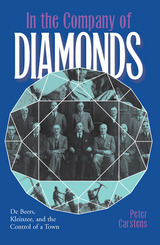 In the Company of Diamonds: De Beers, Kleinzee, and the Control of a Town
Peter Carstens
Ohio University Press, 2001 After the 1925 discovery of diamonds in the semi-desert of the northwest coast of South Africa, De Beers Consolidated Mines Ltd. virtually proclaimed its dominion over the whole region. In the town of Kleinzee, the company owns all the real estate and infrastructure, and controls and administers both the town and the industry. Peter Carstens’s In the Company of Diamonds draws a stark and startling portrait of this closed community, one that analyzes the power and hegemonic techniques used to acquire that power and maintain it. As a prototypical company town, Kleinzee is subordinated to the industry and will of the owners. Employees and workers are variously differentiated and ordered according to occupation, ethnic variation, and other social criteria, a pattern reflected most markedly in the allocation of housing. Managers live in large, ranch-style houses, while contract workers are lodged in single-sex compounds. As a community type, company towns like Kleinzee are not entirely unique, and Professor Carstens successfully draws a number of structural parallels with other closed and incomplete social formations such as Indian reservations, military bases, colleges, prisons, and mental hospitals.
 In the Company of Generals: The World War I Diary of Pierpont L. Stackpole
Edited & Intro by Robert H. Ferrell
University of Missouri Press, 2009 Pierpont Stackpole was a Boston lawyer who in January 1918 became aide to Lieutenant General Hunter Liggett, soon to be commander of the first American corps in France. Stackpole’s diary, published here for the first time, is a major eyewitness account of the American Expeditionary Forces’ experience on the Western Front, offering an insider’s view into the workings of Liggett’s commands, his day-to-day business, and how he orchestrated his commands in trying and confusing situations. Hunter Liggett did not fit John J. Pershing’s concept of the trim and energetic officer, but Pershing entrusted to him a corps and then an army command. Liggett assumed leadership of the U.S. First Army in mid-October of 1918, and after reorganizing, reinforcing, and resting, the battle-weary troops broke through the German lines in a fourth attack at the Meuse-Argonne—accomplishing what Pershing had failed to do in three previous attempts. The victory paved the way to armistice on November 11. Liggett has long been a shadowy figure in the development of the American high command. He was “Old Army,” a veteran of Indian wars who nevertheless kept abreast of changes in warfare and more than other American officers was ready for the novelties of 1914–1918. Because few of his papers have survived, the diary of his aide—who rode in the general’s staff car as Liggett unburdened himself about fellow generals and their sometimes abysmal tactical notions—provides especially valuable insights into command within the AEF. Stackpole’s diary also sheds light on other figures of the war, presenting a different view of the controversial Major General Clarence Edwards than has recently been recorded and relating the general staff’s attitudes about the flamboyant aviation figure Billy Mitchell. General Liggett built the American army in France, and the best measure of his achievement is this diary of his aide. That record stands here as a fascinating and authentic look at the Great War.
 In the Company of Grace: A Veterinarian's Memoir of Trauma and Healing
Jody Lulich
University of Minnesota Press, 2023 The son of a Black mother and white father overcomes family trauma to find the courage of compassion in veterinary practice
Rising to accept a prestigious award, Jody Lulich wondered what to say. Explain how he’d been attracted to veterinary medicine? Describe how caring for helpless, voiceless animals in his own shame and pain provided a lifeline, a chance to heal himself as well? Lulich tells his story in In the Company of Grace, a memoir about finding courage in compassion and strength in healing—and power in finally confronting the darkness of his youth. Lulich’s white father and Black mother met at a civil rights rally, but love was no defense against their personal demons. His mother’s suicide, in his presence when he was nine years old, and his sometimes brutal father’s subsequent withdrawal set Lulich on a course from the South Side of Chicago to the Tuskegee School of Veterinary Medicine in Alabama to an endowed chair at the University of Minnesota, forever searching for the approval and affection that success could not deliver. Though shadowed by troubling secrets, his memoir also features scenes of surprising light and promise—of the neighbors who take him in, a brother’s unlikely effort to save Christmas, his mother’s memories of the family’s charmed early days, bright moments (and many curious details) of veterinary practice. Most consequentially, at Tuskegee Lulich rents a room in the home of a seventy-five-year-old Black woman named Grace, whose wholehearted adoption of him—and her own stories of the Jim Crow era—finally gives him a sense of belonging and possibility. Completing his book amid the furor over George Floyd’s murder, Lulich reflects on all the ways that race has shaped his life. In the Company of Grace is a moving testament to the power of compassion in the face of seemingly overwhelming circumstances.
 In the Company of Mushrooms: A Biologist's Tale
Elio Schaechter
Harvard University Press, 1997 We might slice them into a salad, savor them in a sauce, wonder at their power to intoxicate or poison, marvel at their multifarious presence in the forest--but few of us realize that mushrooms, humbly thriving on decay, are crucial to life on Earth as we know it. In this book a distinguished biologist, long intrigued by the secret life of fungi, reveals the power of these curious organisms--not quite animal, not quite plant--to enchant and instruct, to nourish and make way for all sorts of superior forms of nature.
In a style at once learned and quirky, personal and commanding, Elio Schaechter imparts the fascinating minutiae and the weighty implications of his subject--a primarily microscopic life form that nonetheless accounts for up to two tons of matter for every human on the planet. He shows us how fungi, the great decomposers, recycle most of the world's vegetable matter--from a blade of grass to a strapping tree--and thus prevent us from sinking under ever-accumulating masses of decaying matter.
With the same expertise and contagious enthusiasm that he brings to the biology of mushrooms, Schaechter conveys the allure of the mushroom hunt. Drawing on his own experience as well as that of seasoned pickers and amateur mycologists, he explains when and where to find mushrooms, how they are cultivated, and how they are used in various cultures. From the delectable to the merely tolerable, from the hallucinogenic to the deadly, a wide variety of mushrooms are covered in this spirited presentation.
 In the Company of Radical Women Writers
Rosemary Hennessy
University of Minnesota Press, 2023 Recovering the bold voices and audacious lives of women who confronted capitalist society’s failures and injustices in the 1930s—a decade unnervingly similar to our own
In the Company of Radical Women Writers rediscovers the political commitments and passionate advocacy of seven writers—Black, Jewish, and white—who as young women turned to communism around the Great Depression and, over decades of national crisis, spoke to issues of labor, land, and love in ways that provide urgent, thought-provoking guidance for today. Rosemary Hennessy spotlights the courageous lives of women who confronted similar challenges to those we still face: exhausting and unfair labor practices, unrelenting racial injustice, and environmental devastation. As Hennessy brilliantly shows, the documentary journalism and creative and biographical writings of Marvel Cooke, Louise Thompson Patterson, Claudia Jones, Alice Childress, Josephine Herbst, Meridel Le Sueur, and Muriel Rukeyser recognized that life is sustained across a web of dependencies that we each have a duty to maintain. Their work brought into sharp focus the value and dignity of Black women’s domestic work, confronted the destructive myths of land exploitation and white supremacy, and explored ways of knowing attuned to a life-giving erotic energy that spans bodies and relations. In doing so, they also expanded the scope of American communism. By tracing the attention these seven women pay to “life-making” as the relations supporting survival and wellbeing—from Harlem to the American South and Midwest—In the Company of Radical Women Writers reveals their groundbreaking reconceptions of the political and provides bracing inspiration in the ongoing fight for justice.
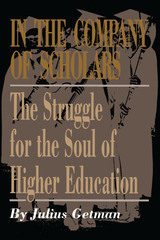 In the Company of Scholars: The Struggle for the Soul of Higher Education
By Julius G. Getman
University of Texas Press, 1992 "I began this book to articulate my sense of disappointment and alienation from the status I had fought so hard to achieve." A remarkable admission from an alumnus of Harvard Law School who has held tenured professorships in the law schools of Yale and Stanford and has taught in the law schools of Harvard and Chicago. In this personal reflection on the status of higher education, Julius Getman probes the tensions between status and meaning, elitism and egalitarianism, that challenge the academy and academics today. He shows how higher education creates a shared intellectual community among people of varied races and classes—while simultaneously dividing people on the basis of education and status. In the course of his explorations, Getman touches on many of the most current issues in higher education today, including the conflict between teaching and research, challenges to academic freedom, the struggle over multiculturalism, and the impact of minority and feminist activism. Getman presents these issues through relevant, often humorous anecdotes, using his own and others' experiences in coping with the constantly changing academic landscape. Written from a liberal perspective, the book offers another side of the story told in such works as Allan Bloom's The Closing of the American Mind and Roger Kimball's Tenured Radicals.
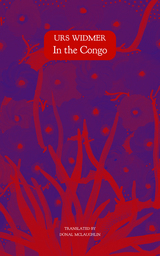 In the Congo
Urs Widmer
Seagull Books, 2015 Kuno, a male nurse in a Swiss retirement home, has a new inmate: his father. In the confines of their new home, the pair does something surprising—they finally begin to talk. Kuno had always regarded his father as a boring man without a history or a destiny, until they are thrust together and he learns that his father risked his life in the war. Stunned, Kuno embarks on a journey into his own psyche, taking him to the depths of the Congo. Here, longings awaken and dreams come true—rays of light in the darkness, meetings with kings, seductive women, and the songs of the jungle. This alluring far-away place he once regarded as the heart of darkness suddenly becomes an exciting locale of lunacy, wildness, and tests of inner strength.
In Urs Widmer’s characteristic style, In the Congo is a riveting yarn, threading through not only the relationship between a father and son, but that of Africa and Europe. Translated by Donal McLaughlin, this novel will delight Widmer fans the world over and will turn our notions of colonialism on their heads.
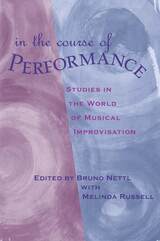 In the Course of Performance: Studies in the World of Musical Improvisation
Edited by Bruno Nettl and Melinda Russell
University of Chicago Press, 1998 In the Course of Performance is the first book in decades to illustrate and explain the practices and processes of musical improvisation. Improvisation, by its very nature, seems to resist interpretation or elucidation. This difficulty may account for the very few attempts scholars have made to provide a general guide to this elusive subject. With contributions by seventeen scholars and improvisers, In the Course of Performance offers a history of research on improvisation and an overview of the different approaches to the topic that can be used, ranging from cognitive study to detailed musical analysis. Such diverse genres as Italian lyrical singing, modal jazz, Indian classical music, Javanese gamelan, and African-American girls' singing games are examined. The most comprehensive guide to the understanding of musical improvisation available, In the Course of Performance will be indispensable to anyone attracted to this fascinating art.
Contributors are Stephen Blum, Sau Y. Chan, Jody Cormack, Valerie Woodring Goertzen, Lawrence Gushee, Eve Harwood, Tullia Magrini, Peter Manuel, Ingrid Monson, Bruno Nettl, Jeff Pressing, Ali Jihad Racy, Ronald Riddle, Stephen Slawek, Chris Smith, R. Anderson Sutton, and T. Viswanathan.
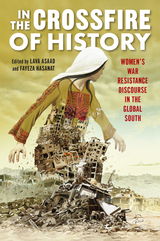 In the Crossfire of History: Women's War Resistance Discourse in the Global South
Lava Asaad
Rutgers University Press, 2022 In the global south, women have and continue to resist multiple forms of structural violence. The atrocities committed against Yazidi women by ISIS have been recognized internationally, and the Nobel Peace Prize awarded to Nadia Murad in 2018 was a tribute to honor women whose bodies have been battered in the name of race, nationality, war, and religion. In the Crossfire of History:Women's War Resistance Discourse in the Global South is an edited collection that incorporates literary works, testimonies, autobiographies, women’s resistance movements, and films that add to the conversation on the resilience of women in the global south. The collection focuses on Palestine, Kashmir, Syria, Kurdistan, Congo, Argentina, Central America, Sri Lanka, and Bangladesh. The essays question historical accuracy and politics of representation that usually undermine women’s role during conflict, and they reevaluate how women participated, challenged, sacrificed, and vehemently opposed war discourses that erase women’s role in shaping resistance movements.
The transformative mode of these examples expands the definition of heroism and defiance. To prevent these types of heroism from slipping into the abyss of history, this collection brings forth and celebrates women’s fortitude in conflict zones. In the Crossfire of History shines a light onwomen across the globe who are resisting the sociopolitical and economic injustices in their nation-states.
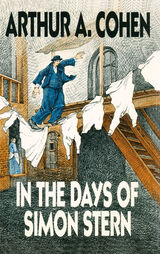 In the Days of Simon Stern
Arthur A. Cohen
University of Chicago Press, 1987 Nathan, a blind Jewish scribe, tells the story of the coming of the Messiah in the person of one Simon Stern—from his birth on the Lower East Side, through his career as a millionaire dealer in real estate, to his building of a refuge for the Jewish remnant of World War II.
"A majestic work of fiction that should stand world literature's test of time, to be read and reread. A masterpiece."—Commonweal
"This book ensnares one of the most extraordinarily daring ideas to inhabit an American novel in a number of years. For one thing, it is that risky devising, dreamed of only by the Thomas Manns of the world, a serious and vastly conceived fiction bled out of the theological imagination. For another, it is clearly an 'American' novel—altogether American, despite its Jewish particularity: it is not so much about the history of the Jews as it is about the idea of the New World as haven. . . . In its teeming particularity every vein of this book runs with a brilliance of Jewish insight and erudition to be found in no other novelist. Arthur Cohen is the first writer of any American generation to compose a profoundly Jewish fiction on a profoundly Western theme."—Cynthia Ozick, New York Times Book Review
"This stately, ambitious amalgam of Jewish myth, history, theology, and speculations on the Jewish soul is like an enormous Judaic archeological ruin—often hard for the uninitiated to interpret, but impressive. . . . Intelligent, inventive, fascinating."—New Yorker
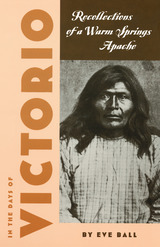 In the Days of Victorio: Recollections of a Warm Springs Apache
Eve Ball; Narrated by James Kaywaykla
University of Arizona Press, 1970 "Chief Victorio of the Warm Springs Apache has recounted the turbulent life of his people between 1876 and 1886. This eyewitness account . . . recalls not only the hunger, pursuit, and strife of those years, but also the thoughts, feelings, and culture of the hunted tribe. Recommended as general reading."—Library Journal
"This volume contains a great deal of interesting information."—Journal of the West
"The Apache point of view [is] presented with great clarity."—Books of the Southwest
"A valuable addition to the southwestern frontier shelf and long will be drawn upon and used."—Journal of Arizona History
"A genuine contribution to the story of the Apache wars, and a very readable book as well."—Westerners Brand Book
"Shining through every page is the unquenchable spirit that was the Apache. Inured, indeed trained, to suffering, Apaches stood strong beside Victorio, Nana, and finally Geronimo in a vain attempt to maintain those things they held more dear than life itself—freedom, homeland, dignity as human beings. A warm and vital people, the Apaches had, and have, a great deal to offer."—Arizona and the West
In the Day's Work
Daniel Berkeley Updike
Harvard University Press To preach and at the same time to practice lies unfortunately beyond the power of most human beings, and so Daniel Updike’s new volume has at least one distinction: it not only formulates the laws of good printing, but it embodies the standards which have made Updike one of the greatest modern printers and have placed his Merrymount Press among the most important printing-houses of the world. His three essays are entitled “On the Planning of Printing,” “Style in the Use of Type,” and “The Seven Champions of Typography.” The book will be a source of instruction and delight to everyone who occasionally needs the services of a printer, and especially to book-collectors as a compendium of typographical taste.
 In the Desert of Desire: Las Vegas and the Culture of Spectacle
William L. Fox
University of Nevada Press, 2007 Las Vegas, says William Fox, is a pay-as-you-play paradise that succeeds in satisfying our fantasies of wealth and the excesses of pleasure and consumption that go with it. In this context, Fox examines how Las Vegas’s culture of spectacle has obscured the boundaries between high art and entertainment extravaganza, nature and fantasy, for-profit and nonprofit enterprises. His purview ranges from casino art galleries—including Steve Wynn’s private collection and a branch of the famed Guggenheim Museum—to the underfunded Las Vegas Art Museum; from spectacular casino animal collections like those of magicians Siegfried and Roy and Mandalay Bay’s Shark Reef exhibit to the city’s lack of support for a viable public zoo; from the environmental and psychological impact of lavish water displays in the arid desert to the artistic ambiguities intrinsic to Las Vegas’s floating world of showgirls, lapdancers, and ballet divas. That Las Vegas represents one of the world’s most opulent displays of private material wealth in all its forms, while providing miserly funding for local public amenities like museums and zoos, is no accident, Fox maintains. Nor is it unintentional that the city’s most important collections of art and exotic fauna are presented in the context of casino entertainment, part of the feast of sensation and excitement that seduces millions of visitors each year. Instead, this phenomenon shows how our insatiable modern appetite for extravagance and spectacle has diminished the power of unembellished nature and the arts to teach and inspire us, and demonstrates the way our society privileges private benefit over public good. Given that Las Vegas has been a harbinger of national cultural trends, Fox’s commentary offers prescient insight into the increasing commercialization of nature and culture across America.
 In the Dust of Kilimanjaro
David Western
Island Press, 1997 "Kilimanjaro slowly takes shape as the night sounds die, its glaciated peak tinged pink in the early light. A solitary wildebeest stares motionless as if mesmerized by the towering mass; a small caravan of giraffe drifts across the plain in solitary file, necks undulating to the slow rhythm of their gangling stride. There is an inexplicable deja vu about the African savannas, as if some subliminal memory is tweaked by the birthplace of our hominid lineage." --from In the Dust of Kilimanjaro In the Dust of Kilimanjaro is the extraordinary story of one man's struggle to protect Kenya's wildlife. World-renowned conservationist David Western -- who grew up in Africa and whose life is intertwined with the lives of its animals and indigenous peoples -- presents a history of African wildlife conservation and an intimate glimpse into his life as a global spokesperson and one of Kenya's most prominent citizens. Beginning with his childhood adventures hunting in rural Tanganyika (now Tanzania), Western describes how and why the African continent came to hold such power over him. In lyrical prose, he recounts the years of solitary fieldwork in and around Amboseli National Park that led to his gradual awakening to what was happening to the animals and people there. His immersion in the culture and ecology of the region made him realize that without an integrated approach to conservation, one that involved people as well as animals, Kenya's most magnificent creatures would be lost forever. His accounts of his friendships with the Maasai add a personal dimension to the book that gives the reader new appreciation for the centuries-old links between Africa's wildlife and people. Continued coexistence rather than segregation, he argues, offers the best hope for the world's wildlife. Western describes how his unique understanding of the potentially devastating problems in the region helped him pioneer a new approach to global wildlife conservation that balances the needs of people and wildlife without excluding one or the other. More than an exceptional autobiography, In the Dust of Kilimanjaro is a riveting look at local and global efforts to preserve species and protect ecosystems. It is the definitive story of wildlife conservation in Africa with a strong and timely message about co-existence between humans and animals.
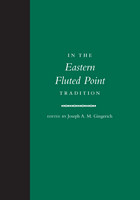 In the Eastern Fluted Point Tradition
Joseph A. M. Gingerich
University of Utah Press, 2013 Eastern North America has one of the largest inventories of Paleoindian sites anywhere in the Americas. Despite this rich record of early human settlement during the late Pleistocene, there are few widely published reports or summaries of Paleoindian research in the region. The contributors to this volume present more than four decades of Early Paleoindian research in eastern North America, including previously unpublished site reports and updates on recent research. Their work helps create a more cohesive picture of the early human occupation of North America. This data-rich volume provides specific information on artifacts and basic site descriptions which will allow for more thorough comparisons of eastern fluted point sites. Divided into four sections—chronology and environment, reinvestigations of classic sites, new sites and perspectives, and synthesis and conclusions—the volume will encourage further consideration of the sites included and their role in shaping our understanding of huntergatherer lifeways during the late Pleistocene. In the Eastern Fluted Point Tradition is a must read for scholars of Paleoindian archaeology and those generally interested in the prehistory of North America.
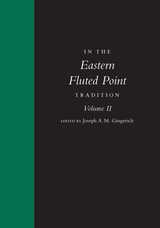 In the Eastern Fluted Point Tradition: Volume II
Edited by Joseph A. M. Gingerich
University of Utah Press, 2017 This volume highlights the importance of eastern Paleoindian research in understanding some of the first inhabitants of North America. Although diverse in manufacture and style, fluted point production represents the first widespread cultural phenomenon in North America. Volume II of In the Eastern Fluted Point Tradition continues the work begun in Volume I, expanding the Paleoindian literature with up-to-date summaries of late Pleistocene research in the eastern United States. Twenty-one chapters provide data from additional site reports, regional surveys and syntheses, and artifact studies from areas not previously included. Much of the information in this volume comes from sites that were discovered or excavated only in the last decade. These artifact and site-specific studies serve as examples of the detailed analyses required on Paleoindian assemblages and provide an opportunity to better understand changes in population, technology, and settlement over time. Together, the two volumes advance Paleoindian studies in eastern North America, offering new data, interpretations, and hypotheses to create a baseline for future research.
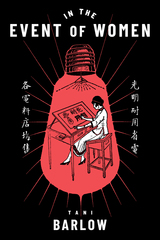 In the Event of Women
Tani Barlow
Duke University Press, 2021 In the Event of Women outlines the stakes of what Tani Barlow calls “the event of women.” Focusing on the era of the late nineteenth century through the mid-twentieth century's Cultural Revolution, Barlow shows that an event is a politically inspired action to install a newly discovered truth, in this case the mammal origins of human social evolution. Highbrow and lowbrow social theory circulating in Chinese urban print media placed humanity's origin story in relation to commercial capital's modern advertising industry and the conclusion that women's liberation involved selling, buying, and advertising industrial commodities. The political struggle over how the truth of women in China would be performed and understood, Barlow shows, means in part that an event of women was likely global because its truth is vested in biology and physiology. In so doing, she reveals the ways in which historical universals are effected in places where truth claims are not usually sought. This book reconsiders Alain Badiou's concept of the event; particularly the question of whose political moment marks newly discovered truths.
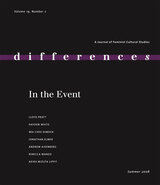 In the Event, Volume 19
Lloyd Pratt, special issue editor
Duke University Press September 11, the subway bombings in Europe, and Hurricane Katrina occurred in rapid succession. The outsized relationship between their historical significance and chronological span also marked these episodes as “events.” Focusing on the recent rise of “the event” as a form of experience and its simultaneous reemergence as a central term in critical theory, this special issue of differences links contemporary critical discourse on the event—Badiou, Sewell, Derrida—to long-standing conversations in philosophy, history, literary studies, media studies, and cultural theory. It also indicates how event analysis might begin to provide an analytic framework different from the conventional modes of historicism currently dominating cultural studies. One essay identifies flash points when “the event” has preoccupied Western thought from Plato to Freud. Others show how particular events—Hurricane Katrina, the Algerian War, the Haitian Revolution—betray the inadequacy of traditional nation-based frameworks for understanding the course of history. Media representations also are a central concern, as in one contributor’s analysis of how child abductions turn some (white girls’) bodies into events while other (brown girls’) bodies are denied that status. The final essay is a meditation on the end of the world that explores how the idea of the end as event transforms everyday language into cryptic signs. Contributors: Andrew Aisenberg, Wai Chee Dimock, Jonathan Elmer, Akira Lippit, Lloyd Pratt,Rebecca Wanzo, Hayden White
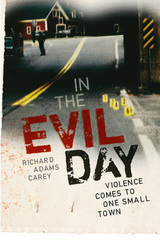 In the Evil Day: Violence Comes to One Small Town
Richard Adams Carey
University Press of New England, 2015 On the afternoon of August 19, 1997, John Harrigan—owner and publisher of the News and Sentinel newspaper in Colebrook, New Hampshire—arrived at his building to find the woman he loved lying dead in the parking lot. Lawyer Vickie Bunnell had been shot and killed by a local carpenter wielding an assault rifle. By then, three more people were already dead or dying. More mayhem was to ensue in an afternoon of plot twists too improbable for a novel. The roots of the incident stretch back twenty-five years, with tendrils deep in the history of New England’s North Country. These bloody events shocked America and made headlines across the world. Hundreds of local citizens became unwilling players in the drama—friends and colleagues of the dead, men and women who were themselves real or potential targets, along with their neighbors in law enforcement—but the town and its inhabitants were never passive victims. From the first shot fired that day, they remained courageously determined to survive. This is the story of that town, those people, and that day. In the Evil Day is a moving portrait of small-town life and familiar characters forever changed by sudden violence.
In the Eye of the Beholder: Critical Perspectives in Popular Film and Television
Edited by Gary R. Ederton, Michael T. Marsden, and Jack Nachbar
University of Wisconsin Press, 1997 Film and television are subjects of intense study throughout higher education today. Popular culture has undergone a revolution during the last generation, progressing from a discipline at the margins that was reflexively treated with contempt to one of the most widespread and productive topic areas in the arts, humanities, and social sciences. The increased attention on film and television is clearly part of this overall acceptance and growing cachet now accorded popular culture in the academy.
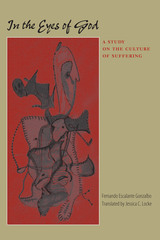 In the Eyes of God: A Study on the Culture of Suffering
By Fernando Escalante Gonzalbo
University of Texas Press, 2006 "Every culture needs to appropriate the universal truth of human suffering," says Fernando Escalante, ". . . to give its own meaning to this suffering, so that human existence is bearable." Originally published in Spanish as La mirada de Dios: Estudios sobre la cultura del sufrimiento, this book is a remarkable study of the evolution of the culture of suffering and the different elements that constitute it, beginning with a reading of Rousseau and ending with the appearance of the Shoah in the Western consciousness—"The memory endures, and this constitutes a fundamental transition for the Western conscience: we have witnessed." Drawing on writings from the Greeks to Cervantes, Voltaire to Nietzsche, and Freud to William James, Escalante combines his considerable knowledge of politics and political theory with a vast array of literary examples to arrive at an intellectual understanding of the history and meaning of suffering. His investigation encompasses the rise of popular politics, the role of messianism in modern nationalism, and the contemporary implications of the Shoah. This book will appeal to a wide audience: students of political theory, humanism, and philosophy, as well as the general reader interested in a glimpse into the mind of a highly original Latin American thinker.
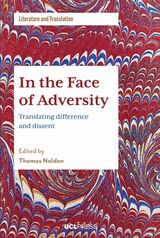 In the Face of Adversity: Translating Difference and Dissent
Edited by Thomas Nolden
University College London, 2023 A study of the role of translation in bringing accounts of difficult circumstances to broader audiences.
In the Face of Adversity explores the dynamics of translating texts that articulate particular notions of adverse circumstances. The contributors show how literary records of painful experiences and dissenting voices are at risk of being stripped of their authenticity when not carefully handled by the translator, how cultural moments in which the translation of a text that would have otherwise fallen into oblivion instead gave rise to a translator who enabled its preservation while ultimately coming into their own as an author as a result, and how the difficulties the translator faces in intercultural or transnational constellations in which prejudice plays a role endangers projects meant to facilitate mutual understanding. The authors address translation as a project of making available and preserving a corpus of texts that would otherwise be in danger of becoming censored, misperceived, or ignored. They look at translation and adaptation as a project of curating textual models of personal, communal, or collective perseverance, and they offer insights into the dynamics of cultural inclusion and exclusion through a series of theoretical frameworks, as well as through a set of concrete case studies drawn from different cultural and historical contexts.
In the Fascist Bathroom: Punk in Pop Music, 1977-1992
Greil Marcus
Harvard University Press, 1999 Was punk just another moment in music history, a flash in time when a group of young rebels exploded in a fury of raw sound, outrageous styles, and in-your-face attitude? Greil Marcus, author of the renowned Lipstick Traces, delves into the after-life of punk as a much richer phenomenon—a form of artistic and social rebellion that continually erupts into popular culture.
In more than seventy short pieces written over fifteen years, he traces the uncompromising strands of punk from Johnny Rotten to Elvis Costello, Sonic Youth, even Bruce Springsteen. Marcus's unparalleled insight into present-day culture and brilliant ear for music bring punk's searing half-life into deep focus. Originally published in the U.S. as Ranters and Crowd Pleasers.
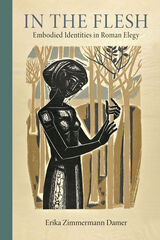 In the Flesh: Embodied Identities in Roman Elegy
Erika Zimmermann Damer
University of Wisconsin Press, 2022 In the Flesh deeply engages postmodern and new materialist feminist thought in close readings of three significant poets—Propertius, Tibullus, and Ovid—writing in the early years of Rome's Augustan Principate. In their poems, they represent the flesh-and-blood body in both its integrity and vulnerability, as an index of social position along intersecting axes of sex, gender, status, and class. Erika Zimmermann Damer underscores the fluid, dynamic, and contingent nature of identities in Roman elegy, in response to a period of rapid legal, political, and social change.
Recognizing this power of material flesh to shape elegiac poetry, she asserts, grants figures at the margins of this poetic discourse—mistresses, rivals, enslaved characters, overlooked members of households—their own identities, even when they do not speak. She demonstrates how the three poets create a prominent aesthetic of corporeal abjection and imperfection, associating the body as much with blood, wounds, and corporeal disintegration as with elegance, refinement, and sensuality.
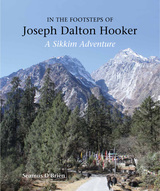 In the Footsteps of Joseph Dalton Hooker
Seamus O'Brien
Royal Botanic Gardens, Kew, 2018 In these times of social media saturation, many are the travelers who set off to track down an Instagrammable meal at a hole-in-the-wall featured by Anthony Bourdain or David Chang. Seamus O’Brien, however, journeyed to an unfamiliar locale with an analog guide from another era: the notes made by Joseph Dalton Hooker as he chronicled his journeys in the Sikkim Himilaya in the northeastern most corner of India. Eager to see the plants described in Hooker’s account, O’Brien set off nearly one hundred and fifty years later to trace Hooker’s footsteps through the natural wonders of the Himalayas, recounting the adventure in this new book. With Hooker as his guide, O’Brien compares mid-nineteenth-century notes to twenty-first-century reality—and he discovers that remarkably little has changed. Accompanied by Hooker’s maps and illustrations, the book is a testament to the region’s splendor and to Hooker’s skill as a botanist and cartographer.
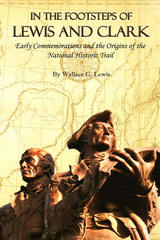 In the Footsteps of Lewis and Clark: Early Commemorations and the Origins of the National Historic Trail
Wallace G. Lewis
University Press of Colorado, 2024 Although it was 1806 when Lewis and Clark returned to St. Louis after their journey across the country, it was not until 1905 that they were celebrated as national heroes. In the Footsteps of Lewis and Clark examines how public attitudes toward their explorations and the means of commemorating them have changed, from the production of the Lewis and Clark Exposition in 1905 to the establishment of the Lewis and Clark National Historic Trail in 1978 and the celebrations of the expedition's bicentennial from 2003 through 2007. The first significant stirrings of national public interest in Lewis and Clark coincided with the beginning of a nationwide fascination with transcontinental automobile touring. Americans began to reconnect with the past and interact with the history of Western expansion by becoming a new breed of "frontier explorer" via their cars. As a result, early emphasis on local plaques and monuments yielded to pageants, reenactments, and, ultimately, attempts to retrace the route, promoting conservation and recreation along its length. Wallace G. Lewis details the ingenuity that inspired the establishment of the Lewis and Clark National Historic Trail, opening a window to how America reimagines, recreates, and remembers its own past. In the Footsteps of Lewis and Clark will appeal to both scholarly and armchair historians interested in the Western frontier as experienced by both Lewis and Clark and those retracing their steps today.
 In the Forbidden City: An Anthology of Erotic Fiction by Italian Women
Edited by Maria Rosa Cutrufelli
University of Chicago Press, 2000 For centuries, the stereotypical image of the voluptuous Italian woman has functioned as an object of desire for Western man: from sixteenth-century paintings of Venetian courtesans who modeled for the erotically charged canvases of Titian, Veronese, and Tintoretto, to nineteenth-century reports of the beautiful dancer Marie Taglioni, to the twentieth-century cinematic images of Sophia Loren and Dominique Sanda.
Now Italian women have turned the tables. With In the Forbidden City, translated from the Italian, acclaimed novelist Maria Rosa Cutrufelli brings together fourteen short erotic stories by contemporary Italian women writers. Well-established voices are juxtaposed with new ones; traditional forms provide a contrast with the experimental. In Sandra Petrignani's dialogue "Body" a women and a former lover engage in a heady debate about desire and indifference; Margherita Ciacobino delivers a tale of lesbian desire, a theme uncommon in Italian literature; Dacia Maraini writes on the literature of eroticism penned by women writers that ingeniously manages to be erotic in its own right; and Rossana Campo, in one of the most entertaining entries, offers a hip-rattling tri-logue on love voiced by some super-cool adolescents. In her introduction, Cutrufelli draws in even more writers such as Jean Baudrillard, Angela Carter, and Georges Bataille in her introductory essay on the theoretical issues of desire and seduction.
Now finally available to English readers, In the Forbidden City constitutes a breakthrough volume in literary erotica by Italian women that is both profound and engaging.
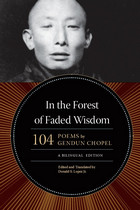 In the Forest of Faded Wisdom: 104 Poems by Gendun Chopel, a Bilingual Edition
Gendun Chopel
University of Chicago Press, 2009 In a culture where poetry is considered the highest form of human language, Gendun Chopel is revered as Tibet’s greatest modern poet. Born in 1903 as British troops were preparing to invade his homeland, Gendun Chopel was identified at any early age as the incarnation of a famous lama and became a Buddhist monk, excelling in the debating courtyards of the great monasteries of Tibet. At the age of thirty-one, he gave up his monk’s vows and set off for India, where he would wander, often alone and impoverished, for over a decade. Returning to Tibet, he was arrested by the government of the young Dalai Lama on trumped-up charges of treason, emerging from prison three years later a broken man. He died in 1951 as troops of the People’s Liberation Army marched into Lhasa. Throughout his life, from his childhood to his time in prison, Gendun Chopel wrote poetry that conveyed the events of his remarkable life. In the Forest of Faded Wisdom is the first comprehensive collection of his oeuvre in any language, assembling poems in both the original Tibetan and in English translation. A master of many forms of Tibetan verse, Gendun Chopel composed heartfelt hymns to the Buddha, pithy instructions for the practice of the dharma, stirring tributes to the Tibetan warrior-kings, cynical reflections on the ways of the world, and laments of a wanderer, forgotten in a foreign land. These poems exhibit the technical skill—wordplay, puns, the ability to evoke moods of pathos and irony—for which Gendun Chopel was known and reveal the poet to be a consummate craftsman, skilled in both Tibetan and Indian poetics. With a directness and force often at odds with the conventions of belles lettres, this is a poetry that is at once elegant and earthy. In the Forest of Faded Wisdom is a remarkable introduction to Tibet’s sophisticated poetic tradition and its most intriguing twentieth-century writer.
 In the Forest of Metropoles
Karl-Markus Gauß
Seagull Books, 2024 A chronicle of the diversity and wealth of cultures, predominantly from Eastern Europe, that have played a formative role in shaping contemporary Europe but now risk being forgotten.
A Herodotus of Mitteleuropa, cultural historian Karl-Markus Gauß is essential reading for anyone trying to understand the breadth and complexities of cultures and societies in Europe before, during, and after its decades of division in the twentieth century.
In this book, Gauß takes his readers on a thirteen-station journey across Europe. From Brussels to Istanbul and from Naples to Opole, Gauß weaves a Sebaldian web of connection and coincidence into a hybrid cultural history. Significantly, Gauß’s metropoles are not the well-trodden, thoroughly explored, and minutely documented megalopolises and cultural capitals that have been mythologized by writers great and small. There are no visits to Berlin, Paris, Rome, or Madrid, although he does make time for Vienna, where he looks not for imperial remnants, but for traces of genius unrecognized by most. Gauß’s lodestars are small but cosmopolitan towns on the periphery, such as Slaghenaufi, Vacaresti, Fontevraud, Dragatus, Vrzdenec, and Sélestat. In these far-flung towns, Gauß assembles a canon of overlooked humanists, expelled or extinguished by political and historical forces that swept the continent.
 In the Future of Yesterday: A Life of Stefan Zweig
Rüdiger Görner
Haus Publishing, 2025 A refreshing approach to the life and work of Austrian writer Stefan Zweig.
In the Future of Yesterday delves into Stefan Zweig’s considerable contribution to world literature, rooted in the Austro-Jewish tradition. His privileged social background saw him embrace European culture and cosmopolitanism. A world traveler from the outset, he liked to uproot himself, but whether he stayed in London, New York, or, eventually, in Brazil, his literary baggage continued to contain the flair of fin de siècle Vienna.
This biography re-examines Zweig’s influential time in England and offers new insights into his final years in the United States and Brazil. It discusses some of his prolific literary output in relation to his life and explores his political views on Europe, Zionism, and the world order in greater depth than previous appraisals of Zweig’s life.
The book also considers the many contradictions in Zweig’s views and attitudes, which included an initial, and surprising, leniency towards fascism. Most importantly, though, In the Future of Yesterday presents Zweig as a towering figure of a form of writing that was bursting with life and that was written in the knowledge that there can only be a future if we remain conscious of the past. In that sense, Zweig is a writer for our time.
 In the Garden of the Bridehouse
J. Michael Martinez
University of Arizona Press, 2014 Through lyrical procedures of self-immolation, this brave new collection by J. Michael Martinez interrogates the sundry roles language, myth, and sexuality play for the self and the other in the recoverable and irrecoverable past. Parallel to his award-winning first collection Heredities, J. Michael Martinez pushes the boundaries of poetic form, wedding historically oppositional lyrical traditions to deliver a collection unlike any other.
Turning the page into a visual field, as in the deconstructed musical score telling the tale of La Llorona, In the Garden of the Bridehouse questions the line between visual art and poetry. The work employs the vernacular, the stylized language of theory, and the blank canvas of the page in its exploration of the known and unknowable.
Throughout the work, Martinez paradoxically exercises both a lyrical minimalism and a baroque poetic, uniting Mesoamerican preconquest imaginary with the sensuality of the Biblical Song of Songs, cultivating a lyrical space wherein contrasting potentials are—as one—realized in their shared promise.
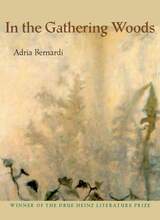 In the Gathering Woods
Adria Bernardi
University of Pittsburgh Press, 2002
2000 Drue Heinz Literature Prize Winner
Selected by Frank Conroy
In the Gathering Woods contains a cast of characters who hail from the same Italian ancestors, but whose stories come at us unbounded by time and space. The book opens early in the twentieth century, with a narrator’s boyhood recollections of gathering mushrooms with his grandfather—a narrator who seems still haunted by a terrifying local legend that tormented him as a boy. We skip backward to a young shepherd-artist in the Apennine mountains in the 1500s, who yearns to be discovered, as Giotto was. Later, a preverbal baby accumulates bits of the conversation carried on by adults at the table above her head; a neurologist from Chicago returns to the Apennines to deposit shards of glass at a grave.
Whether they speak in the lost dialect of an immigrant, of infancy, or of an adolescent girl’s school lessons, these stories call up fragments of language in a struggle to understand and attempt to console through the act of reassembling. The language of these stories is both lyrical and comic, providing insight through the details of Bernardi’s writing.
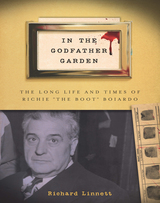 In the Godfather Garden: The Long Life and Times of Richie "the Boot" Boiardo
Linnett, Richard
Rutgers University Press, 2013 In the Godfather Garden is the true story of the life of Richie “the Boot” Boiardo, one of the most powerful and feared men in the New Jersey underworld. The Boot cut his teeth battling the Jewish gang lord Abner Longy Zwillman on the streets of Newark during Prohibition and endured to become one of the East Coast’s top mobsters, his reign lasting six decades.
To the press and the police, this secretive Don insisted he was nothing more than a simple man who enjoyed puttering about in his beloved vegetable garden on his Livingston, New Jersey, estate. In reality, the Boot was a confidante and kingmaker of politicians, a friend of such celebrities as Joe DiMaggio and George Raft, an acquaintance of Joseph Valachi—who informed on the Boot in 1963—and a sworn enemy of J. Edgar Hoover.
The Boot prospered for more than half a century, remaining an active boss until the day he died at the age of ninety-three. Although he operated in the shadow of bigger Mafia names across the Hudson River (think Charles "Lucky" Luciano and Louis “Lepke” Buchalter, a cofounder of the Mafia killer squad Murder Inc. with Jacob “Gurrah” Shapiro), the Boot was equally as brutal and efficient. In fact, there was a mysterious place in the gloomy woods behind his lovely garden—a furnace where many thought the Boot took certain people who were never seen again.
Richard Linnett provides an intimate look inside the Boot’s once-powerful Mafia crew, based on the recollections of a grandson of the Boot himself and complemented by never-before-published family photos. Chronicled here are the Prohibition gang wars in New Jersey as well as the murder of Dutch Schultz, a Mafia conspiracy to assassinate Newark mayor Kenneth Gibson, and the mob connections to several prominent state politicians.
Although the Boot never saw the 1972 release of The Godfather, he appreciated the similarities between the character of Vito Corleone and himself, so much so that he hung a sign in his beloved vegetable garden that read “The Godfather Garden.” There’s no doubt he would have relished David Chase’s admission that his muse in creating the HBO series The Sopranos was none other than “Newark’s erstwhile Boiardo crew.”
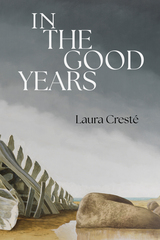 In the Good Years
Laura Cresté
Four Way Books, 2025 A high-lyric historian of the human project, Laura Cresté fixes her scrupulous gaze on the interwoven threads of this distressed anthropocene era, taking in the whole cloth of our globalized societies while recording the singular details of our individual lives and most intimate relationships—their intricate embroidery, characterizing stains, and fraying hems. In the Good Years confronts a painful family legacy, returning to the violent artistic censorship of Argentina's military dictatorship, her relatives' survival of a Dirty War death camp, and the scattered paths of their migration to safer ground. In reconstructing the past, Cresté resists the individualistic contraction of the coming of age model, not merely solidifying the psychological actualization of a single person as they enter adulthood but discursively expanding the notion of self, discovering the boundaries of identity as they overlay the seams of the broader world. These poems exist because of a narrowly avoided fate, and they bristle with the wild energy of improbable existence even as they touch on seemingly unrelated and often ordinary things: a roast chicken recipe, an aunt's questionable romantic advice, flea-ridden dogs, high school parties, waitressing at a dive bar, drowned newts in the swimming pool, unruly tomato plants, horseback riding. "Once saddled across a mare / named Ramona, I was afraid of the burden of my body," Cresté writes, fearful "that she would buckle—an animal once ridden into war." The sheer brilliance of this book's poetics manifest in lines like these, which bring political, personal, and ecological considerations to bear on the concept of weight in the space of a single sentence. What is the heft of a life that was nearly disappeared? How does a number become a weapon to enforce the gendered economy graphing desirability against power? What is the size of our footprint on this planet, and how heavy must our presence currently be as the animals and the land reach their breaking point? How much do you weigh? How much weight can you carry? "I was a teenager and jealous of the freedom / I imagined belonged to the thin," Cresté admits. "Now I know no one feels free, // not even the creature who devoured / the countryside, ravenous for the time / we were allowed in the field." This stunning debut champions that ravening, relishes the external and internal wilderness of the surrounding environment and our own human nature, and honors appetite as an opportunity to savor each bite for as long as we get to sit at the table. Throughout, these poems keenly subvert experience and memory, asking how we will remember this moment, and if the blessing of being here means we are somehow, even now in all the present's suffering, living in the good years.
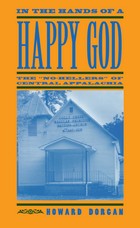 In the Hands of a Happy God: The "No-Hellers" of Central Appalachia
Howard Dorgan
University of Tennessee Press, 1997 The investigation of Primitive Baptist Universalists -- Calvinist 'No-Hellers, ' which sounds for all the world like an oxymoron -- requires the exact type of seasoned and comprehensive field experience which Dorgan has brought to it with meticulous care and insight. -- Deborah Vansau McCauley, author of Appalachian Mountain ReligionAmong the many forms of religious practice found in the ridges and hollows of Central Appalachia, one of the most intriguing -- and least understood -- is that of the Primitive Baptist Universalists (PBUs). Popularly known as the No-Hellers, this small Baptist sub-denomination rejects the notion of an angry God bent on punishment and retribution and instead embraces the concept of a happy God who consigns no one to eternal damnation. This book is the first in-depth study of the PBUs and their beliefs.As Howard Dorgan points out, the designation No-Heller is something of a misnomer. Primitive Baptist Universalists, he notes, believe in hell -- but they see it as something that exists in this life, in the temporal world, rather than in an afterlife. For a PBU, sinfulness is the given state of natural man, and hell a reality of earthly life -- the absence-from-God's-blessing torment that sin generates. PBUs further believe that, at the moment of Resurrection, all temporal existence will end as all human-kind joins in a wholly egalitarian heaven, the culmination of Christ's universal atonement.In researching this book, Dorgan spent considerable time with PBU congregations, interviewing their members and observing their emotionally charged and joyous worship services. He deftly combines lucid descriptions of PBU beliefs with richly texturedvignettes portraying the people and how they live their faith on a daily basis. He also explores a fascinating possibility concerning PBU origins: that a strain of early- nineteenth-century American Universalism reached the mountains of Appalachia and there fused with Primitive Baptist theology to form this subdenomination, which barely exists outside a handful of counties in Tennessee, Virginia, Kentucky, and West Virginia.Like Dorgan's earlier books, In the Hands of a Happy God offers an insightful blend of ethnography, history, and theological analysis that will appeal to both Appalachian scholars and all students of American religion.
 In the Hands of Devotees: Indigenous and Black Confraternities and the Creation of Visual Culture in Colonial Lima
Ximena A. Gómez
University of Texas Press, 2025 An exploration of how Indigenous and Black communities shaped religious imagery and navigated life in colonial Lima. Colonial Lima was steeped in Christian devotional imagery. While Spaniards set the norms for these works, it was the city’s Black and Indigenous majority that engaged with them most. As members of lay societies of worshippers called confraternities, subalterns were Lima’s key promoters of religious art, surpassing the colonial hierarchy. Ximena Gómez argues that, by commissioning and exhibiting sacred images—in chapels and urban processions, adorned with clothing and accessories—Indigenous and Black confraternities created Lima’s visual culture. In one case study, the Indigenous confraternity of the Virgin of Copacabana "invisibly" transforms a sculpture into an object that reflected its multiethnic Andean caretakers. Another case study, that of the confraternity of the Virgin of the Antigua, finds Black worshippers initially united in their interpretation of a Spanish image and later fracturing when some of its members applied a West African interpretive lens. Taking advantage of Lima’s rich documentary record, In the Hands of Devotees centers the ritual practices of Black and Indigenous people and opens possibilities for incorporating subalterns into the history of Lima’s art when limited extant visual evidence has survived.
 In the Home of the Famous Dead: Collected Poems
Jo McDougall
University of Arkansas Press, 2015 In the Home of the Famous Dead will appeal to newcomers as well as to avid followers of Jo McDougall’s long career and complex work, providing valuable insights to the development of a poet’s signature, inimitable style. This collection presents work known for its sparse, compact language; surprising metaphor; humor; irony; idiomatic speech; and a stoic, sadly earned wisdom concerning death and loss. In McDougall’s world, folks making do with what they have take the stage to speak of, in the words of one critic, “the tangled mysteries of their faltering lives.” Her work has been described as having “excruciating honesty” (Gerald Stern), giving voice to the “ineffable emotions of plain people” (Judith Kitchen). Miller Williams notes that the work has “cleanness and clarity . . . in all the funk and smell of humanity.” This is the poetry of midwestern plains and southern botttomlands, of waitresses and professors, farmers and bankers, the disadvantaged and privileged alike. Often beginning in the personal and expanding to the universal, this poet takes note of the phenomenological world with a mixture of joy, despair, and awe, providing a haunting look at the cosmic irony of our existence. McDougall’s style is indescribable, yet wholly accessible. As Kelly Cherry notes, “Call it magic, call it art; either way [Jo McDougall’s work] is something like a miracle.”
In the House
Lynn K. Kilpatrick
University of Alabama Press, 2010 A collection of stories that limn the dangers of domesticity In Lynn K. Kilpatrick’s In the House, anything can happen. A collection of shorts—lists, character sketches, directions, scripts, and instructions—In the House reveals the often conspicuous, yet frequently overlooked, dangers of relationships gone awry. In a home suffused with fragility or in a kitchen surrounded by knives, Kilpatrick’s men and women navigate around one another’s eccentricities with caution, highlighting the unspoken desires and veiled needs of domestic routine. In these stories those desires collide, illuminating the dangers that can lurk in seemingly insignificant places such as the pantry, a basement, the Miss America pageant, dioramas, or in the mind of the one you love.
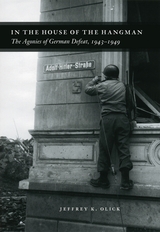 In the House of the Hangman: The Agonies of German Defeat, 1943-1949
Jeffrey K. Olick
University of Chicago Press, 2005 The central question for both the victors and the vanquished of World War II was just how widely the stain of guilt would spread over Germany. Political leaders and intellectuals on both sides of the conflict debated whether support for National Socialism tainted Germany's entire population and thus discredited the nation's history and culture. The tremendous challenge that Allied officials and German thinkers faced as the war closed, then, was how to limn a postwar German identity that accounted for National Socialism without irrevocably damning the idea and character of Germany as a whole.
In the House of the Hangman chronicles this delicate process, exploring key debates about the Nazi past and German future during the later years of World War II and its aftermath. What did British and American leaders think had given rise to National Socialism, and how did these beliefs shape their intentions for occupation? What rhetorical and symbolic tools did Germans develop for handling the insidious legacy of Nazism? Considering these and other questions, Jeffrey K. Olick explores the processes of accommodation and rejection that Allied plans for a new German state inspired among the German intelligentsia. He also examines heated struggles over the value of Germany's institutional and political heritage. Along the way, he demonstrates how the moral and political vocabulary for coming to terms with National Socialism in Germany has been of enduring significance—as a crucible not only of German identity but also of contemporary thinking about memory and social justice more generally.
Given the current war in Iraq, the issues contested during Germany's abjection and reinvention—how to treat a defeated enemy, how to place episodes within wider historical trajectories, how to distinguish varieties of victimhood—are as urgent today as they were sixty years ago, and In the House of the Hangman offers readers an invaluable historical perspective on these critical questions.
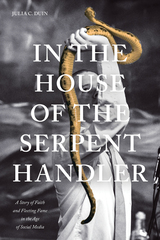 In the House of the Serpent Handler: A Story of Faith and Fleeting Fame in the Age of Social Media
Julia C. Duin
University of Tennessee Press, 2017
In the House of the Serpent Handler offers an intimate and engrossing look at the latest generation of Pentecostal believers who “take up” venomous snakes as a test of their religious faith. Focusing on several preachers and their families in six Appalachian states, journalist Julia C. Duin explores the impact that such twenty-first-century phenomena as social media and “reality television” have had on rituals long practiced in obscurity.
As Duin reveals, the mortal snakebite suffered by pastor Mack Wolford in 2012 marked the passing of the torch to younger preachers Jamie Coots and Andrew Hamblin, who were featured in the 2013 series Snake Salvation on the National Geographic Channel. Seeing their participation in the show as a way of publicizing their faith and thus winning converts, Coots and Hamblin attempted to reinvent the snake-handling tradition for a modern audience. The use of the internet, particularly Facebook, became another key part of their strategy to spread their particular brand of Christianity. However, Coots’s own death in 2014 was widely reported after the TV series was canceled, while Hamblin, who emerges as the central figure in the book, was arrested and tried after a shooting incident involving his estranged wife. His hopes of becoming a serpent-handling superstar seemingly dashed, Hamblin spent several months in prison, emerging more determined than ever to keep to the faith. By the end of the narrative, he has begun a new church where he can pass on the tradition to yet another generation.
Duin’s thorough, sympathetic reporting and lively style bring the ecstatic church services she witnessed vividly to life, and through interviews and quotations from the principals’ Facebook postings, she has allowed them to express their beliefs and reveal their everyday lives in their own words. She also gives the reader an up-close view of how a reporter pursues a story and the various difficulties encountered along the way. Together these elements frame a striking picture: the young practitioners of a century-old custom—one so often dismissed as bizarre by outsiders—adjusting to the challenges of the new millennium.
Julia C. Duin, the former religion editor for the Washington Times, has published articles in the Washington Post, the Wall Street Journal and other national publications. She is the author of five previous books, including, most recently, Days of Fire and Glory: The Rise and Fall of a Charismatic Community.
 In the House of the Serpent Handler: A Story of Faith and Fleeting Fame in the Age of Social Media
Julia C. Duin
University of Tennessee Press, 2017 In the House of the Serpent Handler offers an intimate and engrossing look at the latest generation of Pentecostal believers who “take up” venomous snakes as a test of their religious faith. Focusing on several preachers and their families in six Appalachian states, journalist Julia C. Duin explores the impact that such twenty-first-century phenomena as social media and “reality television” have had on rituals long practiced in obscurity.
As Duin reveals, the mortal snakebite suffered by pastor Mack Wolford in 2012 marked the passing of the torch to younger preachers Jamie Coots and Andrew Hamblin, who were featured in the 2013 series Snake Salvation on the National Geographic Channel. Seeing their participation in the show as a way of publicizing their faith and thus winning converts, Coots and Hamblin attempted to reinvent the snake-handling tradition for a modern audience. The use of the internet, particularly Facebook, became another key part of their strategy to spread their particular brand of Christianity. However, Coots’s own death in 2014 was widely reported after the TV series was canceled, while Hamblin, who emerges as the central figure in the book, was arrested and tried after a shooting incident involving his estranged wife. His hopes of becoming a serpent-handling superstar seemingly dashed, Hamblin spent several months in prison, emerging more determined than ever to keep to the faith. By the end of the narrative, he has begun a new church where he can pass on the tradition to yet another generation.
Duin’s thorough, sympathetic reporting and lively style bring the ecstatic church services she witnessed vividly to life, and through interviews and quotations from the principals’ Facebook postings, she has allowed them to express their beliefs and reveal their everyday lives in their own words. She also gives the reader an up-close view of how a reporter pursues a story and the various difficulties encountered along the way. Together these elements frame a striking picture: the young practitioners of a century-old custom—one so often dismissed as bizarre by outsiders—adjusting to the challenges of the new millennium.
Julia C. Duin, the former religion editor for the Washington Times, has published articles in the Washington Post, the Wall Street Journal and other national publications. She is the author of five previous books, including, most recently, Days of Fire and Glory: The Rise and Fall of a Charismatic Community.
In the House of Wilderness: A Novel
Charles Dodd White
Ohio University Press, 2018 Rain is a young woman under the influence of a charismatic drifter named Wolf and his other “wife,” Winter. Through months of wandering homeless through the cities, small towns, and landscape of Appalachia, the trio have grown into a kind of desperate family, a family driven by exploitation and abuse. A family that Rain must escape. When she meets Stratton Bryant, a widower living alone in an old east Tennessee farmhouse, Rain is given the chance to see a bigger world and find herself a place within it. But Wolf will not let her part easily. When he demands loyalty and obedience, the only way out is through an episode of violence that will leave everyone involved permanently damaged. A harrowing story of choice and sacrifice, Charles Dodd White’s In the House of Wilderness is a novel about the modern South and how we fight through hardship and grief to find a way home.
In the Human Zoo
Jennifer Perrine
University of Utah Press, 2011 Winner of the Agha Shahid Ali Poetry Prize In the Human Zoo reveals encounters with a world that is both fragile and dangerous, a perilous, surreal place where not only humans but also creatures as innocuous as fireflies and owls become potential threats. Throughout the collection, speakers wrestle with human violence through a multitude of perspectives: the fear and resistance of victims, the frustration and outrage of witnesses, the regret and recognition of a global history in which so many people have participated as perpetrators. While the people who inhabit the world of this collection might yet remain caged, they nevertheless struggle to unleash themselves and each other through language.
 In the Hurricane’s Eye: The Troubled Prospects of Multinational Enterprises
Raymond Vernon
Harvard University Press, 1998 The world’s multinational enterprises face a spell of rough weather, political economist Ray Vernon argues, not only from the host countries in which they have established their subsidiaries, but also from their home countries. Such enterprises—a few thousand in number, including Microsoft, Toyota, IBM, Siemens, Samsung, and others—now generate about half of the world’s industrial output and half of the world’s foreign trade; so any change in the relatively benign climate in which they have operated over the past decade will create serious tensions in international economic relations.
The warnings of such a change are already here. In the United States, interests such as labor are increasingly hostile to what they see as the costs and uncertainties of an open economy. In Europe, those who want to preserve the social safety net and those who feel that the net must be dismantled are increasingly at odds. In Japan, the talk of “hollowing out” takes on a new urgency as the country’s “lifetime employment” practices are threatened and as public and private institutions are subjected to unaccustomed stress. The tendency of multinationals in different countries to find common cause in open markets, strong patents and trademarks, and international technical standards has been viewed as a loss of national sovereignty and a weakening of the nation-state system, producing hostile reactions in home countries.
The challenge for policy makers, Vernon argues, is to bridge the quite different regimes of the multinational enterprise and the nation-state. Both have a major role to play, and yet must make basic changes in their practices and policies to accommodate each other.
In the Inner Sanctum: Behind the Scenes at Big Fights
Thomas Hauser
University of Arkansas Press, 2022 When Thomas Hauser was selected for induction into the International Boxing Hall of Fame in 2019, his relationship with Muhammad Ali was widely cited. But Ali was just one of the many fighters who have shared momentous times with Hauser. For decades, elite fighters like Evander Holyfield, Manny Pacquiao, Roy Jones Jr., Bernard Hopkins, Ricky Hatton, Kelly Pavlik, Sergio Martínez, Jermain Taylor, Miguel Cotto, Gennady Golovkin, and Canelo Álvarez have welcomed him into their dressing rooms to record their journeys on fight night. Gathering and updating more than thirty essays from Hauser’s critically acclaimed yearly collections, In the Inner Sanctum celebrates these most dramatic hours in boxers’ lives. In each account, Hauser chronicles the very moment when a fighter’s physical well-being and financial future are on the line—when the fighter is most at risk and most alive.
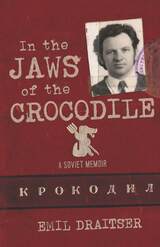 In the Jaws of the Crocodile: A Soviet Memoir
Emil Draitser
University of Wisconsin Press, 2021 Emil Draitser dreamed of becoming a writer. Born to a working-class Jewish family in the USSR on the eve of World War II, he came of age during the Brezhnev era, often considered the nadir of Soviet culture. Bored with an engineering job, he found refuge in writing, attracting the attention of a Moscow editor who encouraged him to try his hand at satire. He spent the next decade contributing to Crocodile, the major Party-sponsored magazine known for its sharp-tongued essays and caustic cartoons. After he got in trouble for criticizing an important Soviet official, he began weighing the heavy decision of whether to emigrate.
In this captivating memoir, Draitser explores what it means to be a satirist in a country lacking freedom of expression. His experience provides a window into the lives of a generation of artists who were allowed to poke fun and make readers laugh, as long as they toed a narrow, state-approved line. In the Jaws of the Crocodile also includes several of Draitser’s wry pieces translated into English for the first time.
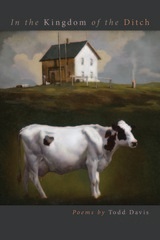 In the Kingdom of the Ditch
Todd Davis
Michigan State University Press, 2013 In poetry that is at once accessible and finely crafted, Todd Davis maps the mysterious arc between birth and death, celebrating the beauty and pain of our varied entrances and exits, while taking his readers into the deep forests and waterways of the northeastern United States. With an acute sensibility for language unlike any other working poet, Davis captures the smallest nuances in the flowers, trees, and animals he encounters through a daily life spent in the field. Davis draws upon stories and myths from Christian, Transcendental, and Buddhist traditions to explore the intricacies of the spiritual and physical world we too often overlook. In celebrating the abundant life he finds in a ditch—replete with Queen Anne’s lace and milkweed, raspberries and blackberries, goldenrod and daisies—Davis suggests that life is consistently transformed, resurrected by what grows out of the fecundity of our dying bodies. In his fourth collection the poet, praised by The Bloomsbury Review, Arts & Letters, and many others, provides not only a taxonomy of the flora and fauna of his native Pennsylvania but also a new way of speaking about the sacred walk we make with those we love toward the ultimate mystery of death.
 In the Kingdom of the Thunder Dragon: Happiness, History, and Environment in a Changing Bhutan
Betsy Bolton
Lever Press, 2025 Landlocked, mountainous, and surrounded by global giants India and China, Bhutan has provided remarkable leadership on both climate action and human happiness, despite its pre-2023 status as a least-developed nation. Bhutan was the first country to be internationally recognized as carbon neutral; it is also the birthplace of “Gross National Happiness” (GNH), a pointed alternative to Gross Domestic Product (GDP) as a means of measuring the success of national policies in promoting citizens’ wellbeing. Yet Bhutan has also been a site of ethnic conflict, with roughly tens of thousands people displaced into refugee camps in the 1990s and eventually resettled abroad.
International views on Bhutan tend to be sharply split between admiration for its democratizing development strategies and opposition to its human rights abuses—a division partly maintained by Bhutan’s tight limits on immigration and foreign travel within the country. In the first book-length study of its kind, In the Kingdom of the Thunder Dragon explores the tensions and contradictions of Bhutan’s rapid political and economic transformation from the perspective of a Fulbright scholar helping start a new master’s program in the remote east of the country.
Mingling personal narrative with historical context to engage undergraduate students and general readers, In the Kingdom of the Thunder Dragon explores Bhutan’s Vajrayana Buddhist heritage and ongoing embrace of tradition alongside development, the country’s newly minted democracy amidst a complicated history of citizenship and belonging, and the challenges the nation faces in a period of increasing globalization. Betsy Bolton further explores Bhutan’s recent events surrounding the 1990s expulsion of the Lhotshampa people and the development of GNH in the early 2000s. From here, Bolton illuminates how these historical narratives and issues have impacted Bhutanese citizens and students through stories gathered at educational and artistic institutions, festivals and community events. In the Kingdom of the Thunder Dragon is a fresh, accessible approach to Bhutanese history and will interest general readers as well as scholars of Asia, history, economics, sociology, and environmental studies.
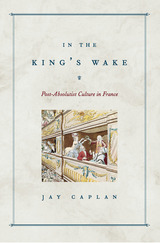 In the King's Wake: Post-Absolutist Culture in France
Jay Caplan
University of Chicago Press, 1999 Long before the guillotines of the 1789 Revolution brought a grisly political end to the ancien régime, Jay Caplan argues, the culture of absolutism had already perished. In the King's Wake traces the emergence of a post-absolutist culture across a wide range of works and genres: Saint-Simon's memoirs of Louis XIV and the Regency; Voltaire's first tragedy, Oedipe; Watteau's last great painting, L'Enseigne de Gersaint; the plays of Marivaux; and Casanova's History of My Life.
While absolutist culture had focused on value directly represented in people (e.g., those of noble blood) and things (e.g., coins made of precious metals), post-absolutist culture instead explored the capacity of signs to stand for something real (e.g., John Law's banknotes or Marivaux's plays in which actions rather than birth signify nobility). Between the image of the Sun King and visions of the godlike Romantic self, Caplan discovers a post-absolutist France wracked by surprisingly modern conflicts over the true sources of value and legitimacy.
 In the Kitchen, 1550-1800: Reading English Cooking at Home and Abroad
Madeline Bassnett
Amsterdam University Press, 2023 In the Kitchen insists that the preparation of food, whether imaginative, physical, or spatial, is central to a deeper understanding of early modern food cultures and practices. Devoted to the arts of cooking and medicine, early modern kitchens concentrated on producing, processing, and preserving materials necessary for nourishment and survival; yet they also fed social and economic networks and nurtured a sense of physical, spiritual, and political connection to surrounding lands and their cultures. The essays in this volume illuminate this expansive view of cooking and aspire to show how the kitchen's inner workings prove tightly, though often invisibly, interwoven with local, national, and, increasingly, global surroundings. Engaging with literary and historical methodologies, including close reading, recipe analysis, and perspectives on gender, class, race, and colonialism, we begin to develop a shared theoretical and practical language for the art of cooking that combines the physical with the intellectual, the local with the global, and the domestic with the political.
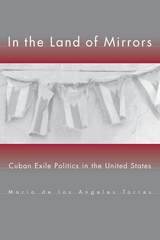 In the Land of Mirrors: Cuban Exile Politics in the United States
Maria de los Angeles Torres
University of Michigan Press, 2001 In the Land of Mirrors is a journey through the politics of Cuban exiles since the 1959 Cuban Revolution. It explores the development of Cuban exile politics and identity within a context of U.S. and Cuban realities, as well as within the broader inquiry of the changing nature of nation-states and its impact on the politics and identity of diaspora communities. Topics covered include: the origins of the post-revolution exile enclave of the 1960s; the evolution of the Cuban community over the 1960s; the pluralization of exile politics in the 1970s, particularly regarding the relationship with the island; the emergence of Cuban-American political action committees in the 1980s; post-Cold War developments; and the transition of Miami by the coming of age of a second generation of Cuban-Americans and the arrival of a new wave of exiles.
Interspersed with vignettes from the author's own experiences and political activism, In the Land of Mirrors explores the meanings and ramifications of exile, of belonging, and of seeing the self in the other. It will appeal to political scientists, Latin Americanists, and those studying the politics of exile.
María de los Angeles Torres was born in Cuba and came to the United States as a young child. She is Associate Professor of Political Science, DePaul University.
In the Land of Silence
Jesus Urzagasti
University of Arkansas Press, 1994 This masterful translation of a recent Bolivian novel, En el pais del silencio, transports us to a mysterious, silent, and unfamiliar land where astonishing truths are placed within our grasp.
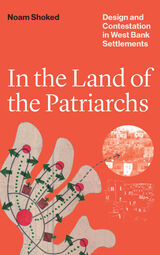 In the Land of the Patriarchs: Design and Contestation in West Bank Settlements
Noam Shoked
University of Texas Press, 2023 2024 On The Brinck Book Award and Lecture Series, University of New Mexico
2024 PROSE Award, Architecture–Urban Planning, Association of American Publishers An on-the-ground account of the design and evolution of West Bank settlements, showing how one of the world’s most contested landscapes was produced by unexpected conflicts and collaborations among widely divergent actors. Since capturing the West Bank in 1967, Israel has overseen the construction of scores of settlements across the territory’s rocky hilltops. The settlements are part of a fierce political conflict. But they are not just hotly contested political ventures. They are also something more everyday: residential architectural projects. In the Land of the Patriarchs is an on-the-ground account of the design and evolution of West Bank settlements. Noam Shoked shows how settlements have been shaped not only by the decisions of military generals, high-profile politicians, and prominent architects but also by a wide range of actors, including real estate developers, environmental consultants, amateur archeologists, and Israelis who feel unserved by the country’s housing system. The patterns of design and construction they have inspired reflect competing worldviews and aesthetic visions, as well as everyday practices not typically associated with the politics of the Israeli occupation. Revealing the pragmatic choices and contingent circumstances that drive what appears to be a deliberately ideological landscape, Shoked demonstrates how unpredictable the transformation of political passion into brick and mortar can be.
 In the Land of the Unreal: Virtual and Other Realities in Los Angeles
Lisa Messeri
Duke University Press, 2024 In the mid-2010s, a passionate community of Los Angeles-based storytellers, media artists, and tech innovators formed around virtual reality (VR), believing that it could remedy society’s ills. Lisa Messeri offers an ethnographic exploration of this community, which conceptualized VR as an “empathy machine” that could provide glimpses into diverse social realities. She outlines how, in the aftermath of #MeToo, the backlash against Silicon Valley, and the turmoil of the Trump administration, it was imagined that VR—if led by women and other marginalized voices—could bring about a better world. Messeri delves into the fantasies that allowed this vision to flourish, exposing the paradox of attempting to use a singular VR experience to mend a fractured reality full of multiple, conflicting social truths. She theorizes this dynamic as unreal, noting how dreams of empathy collide with reality’s irreducibility to a “common” good. With In the Land of the Unreal, Messeri navigates the intersection of place, technology, and social change to show that technology alone cannot upend systemic forces attached to gender and race.
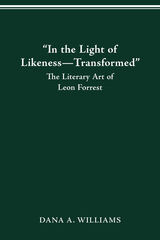 “IN THE LIGHT OF LIKENESS—TRANSFORMED”: THE LITERARY ART OF LEON FORREST
Dana A. Williams
Ohio State University Press, 2005 “In the Light of Likeness—Transformed”, by Dana A. Williams, looks critically at the work of contemporary African American author Leon Forrest. Not only does she bring to the critical table a well-known but as yet understudied modernist author—an important endeavor in and of itself—but she also explores Forrest’s novels’ cultural dialogue with black ethnic culture and other African American authors, as well as provides in-depth readings of his prose and interpretations of his narrative style. Highly touted by both his literary forebear Ralph Ellison, who wrote the foreword to Forrest’s first novel, and his literary contemporary Toni Morrison, who edited his first three novels and wrote the foreword to his third, Leon Forrest is among the most gifted African American writers of our time. Yet, he is also among our most difficult. Forrest's highly experimental narrative style, his reinterpretation of modernism, and his transformations of black cultural traditions into literary aesthetics often pose challenges of interpretation for the reader and the scholar alike. As the first single-authored book-length study of Forrest’s novel, this book offers readers pathways into his fiction. What this culturalist approach to the novels reveals is that Forrest’s fiction was foremost concerned with investigating ways for the African American to survive in the contemporary moment. Through a variety of characters, the novels reveal the African American’s art of transformation—the ability to find ways to make the wretchedness of the past work in positive ways.
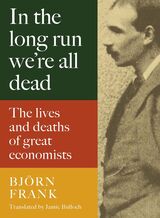 In the Long Run We're All Dead: The Lives and Deaths of Great Economists
Björn Frank
Haus Publishing, 2023 A fascinating and entertaining account of the lives of the most important economists of the past. Until the late nineteenth century, economics couldn’t be studied at the university level; the field was the domain of well-educated figures whose radical curiosity drew them to a discipline that was little understood and often ridiculed. In the Long Run We’re All Dead tells the story of one of those figures in each of its thirteen chapters. Each of these extraordinary lives is worthy of fiction, and the manner of their deaths, oddly, often illuminates their work. Björn Frank shows us how these economists developed the theories for which they became famous and explains those ideas—utilitarianism, social costs, the endowment effect, and others—with reference to the lives of their creators in an engaging, irreverent, even comic style. Frank also takes daring leaps into speculation, considering how the principles of these long-gone economists might be applied to problems of today and of the future.
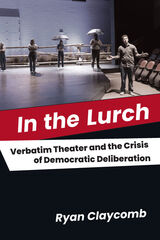 In the Lurch: Verbatim Theater and the Crisis of Democratic Deliberation
Ryan Claycomb
University of Michigan Press, 2023 Some of theater’s most powerful works in the past thirty years fall into the category of "verbatim theater," socially engaged performances whose texts rely on word-for-word testimony. Performances such as Fires in the Mirror, The Laramie Project, and The Vagina Monologues have at their best demonstrated how to hold hard conversations about explosive subjects in a liberal democracy. But in this moment of what author Ryan Claycomb terms the “rightward lurch” of western democracies, does this idealized space of democratic deliberation remain effective? In the Lurch asks that question in a pointed and self-reflexive way, tracing the history of this branch of documentary theater with particular attention to the political outcomes and stances these performances seem to seek.
But this is not just a disinterested history—Claycomb reflects on his own participation in that political fantasy, including earlier scholarly writing that articulated with breathless hopefulness the potential of verbatim theater, and on his own theatrical attendance, imbued with a belief that witnessing this idealized public sphere was a substitute for actual public participation. In the Lurch also recounts the bumpy path towards its completion, two years marked by presidential impeachments, an insurrection, a national reckoning with racism, and a global pandemic. At the heart of the book is a central question: is verbatim theater any longer an effective cultural response to what can look like the possible end of democracy?
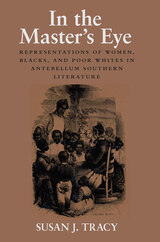 In the Master's Eye: Representations of Women, Blacks, and Poor Whites in Antebellum Southern Literature
Susan J. Tracy
University of Massachusetts Press, 1995 This book explores the way in which literature can be used to reinforce social power. Through rigorous readings of a series of antebellum plantation novels, Susan J. Tracy shows how the narrative strategies employed by proslavery Southern writers served to justify and perpetuate the oppression of women, blacks, and poor whites.
Tracy focuses on the historical romances of six authors: George Tucker, James Ewell Heath, William Alexander Caruthers, John Pendleton Kennedy, Nathaniel Beverley Tucker, and William Gilmore Simms. Using variations on a recurring plot - in which a young planter/hero rescues a planter's daughter from an "enemy" of her class - each of these novelists reinforced an idealized vision of a Southern civilization based on male superiority, white supremacy, and class inequality. It is a world in which white men are represented as the natural leaders of loyal and dependent women, grateful and docile slaves, and inferior poor whites. According to Tracy, the interweaving of these themes reveals the extent to which the Southern defense of slavery in the years leading up to the Civil War was an argument not only about race relations but about gender and class relations as well.
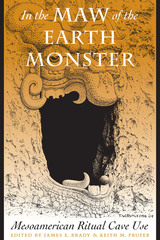 In the Maw of the Earth Monster: Mesoamerican Ritual Cave Use
Edited by James E. Brady and Keith M. Prufer
University of Texas Press, 2005 As portals to the supernatural realm that creates and animates the universe, caves have always been held sacred by the peoples of Mesoamerica. From ancient times to the present, Mesoamericans have made pilgrimages to caves for ceremonies ranging from rituals of passage to petitions for rain and a plentiful harvest. So important were caves to the pre-Hispanic peoples that they are mentioned in Maya hieroglyphic writing and portrayed in the Central Mexican and Oaxacan pictorial codices. Many ancient settlements were located in proximity to caves. This volume gathers papers from twenty prominent Mesoamerican archaeologists, linguists, and ethnographers to present a state-of-the-art survey of ritual cave use in Mesoamerica from Pre-Columbian times to the present. Organized geographically, the book examines cave use in Central Mexico, Oaxaca, and the Maya region. Some reports present detailed site studies, while others offer new theoretical understandings of cave rituals. As a whole, the collection validates cave study as the cutting edge of scientific investigation of indigenous ritual and belief. It confirms that the indigenous religious system of Mesoamerica was and still is much more terrestrially focused that has been generally appreciated.
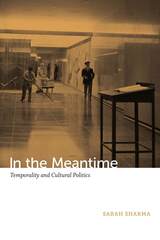 In the Meantime: Temporality and Cultural Politics
Sarah Sharma
Duke University Press, 2014 The world is getting faster. This sentiment is proclaimed so often that it is taken for granted, rarely questioned or examined by those who celebrate the notion of an accelerated culture or by those who decry it. Sarah Sharma engages with that assumption in this sophisticated critical inquiry into the temporalities of everyday life. Sharma conducted ethnographic research among individuals whose jobs or avocations involve a persistent focus on time: taxi drivers, frequent-flyer business travelers, corporate yoga instructors, devotees of the slow-food and slow-living movements. Based on that research, she develops the concept of "power-chronography" to make visible the entangled and uneven politics of temporality. Focusing on how people's different relationships to labor configures their experience of time, she argues that both "speed-up" and "slow-down" often function as a form of biopolitical social control necessary to contemporary global capitalism.
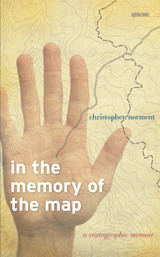 In the Memory of the Map: A Cartographic Memoir
Christopher Norment
University of Iowa Press, 2012 Throughout his life, maps have been a source of imagination and wonder for Christopher Norment. Mesmerized by them since the age of eight or nine, he found himself courted and seduced by maps, which served functional and allegorical roles in showing him worlds that he might come to know and helping him understand worlds that he had already explored. Maps may have been the stuff of his dreams, but they sometimes drew him away from places where he should have remained firmly rooted. In the Memory of the Map explores the complex relationship among maps, memory, and experience—what might be called a “cartographical psychology” or “cartographical history.” Interweaving a personal narrative structured around a variety of maps, with stories about maps as told by scholars, poets, and fiction writers, this book provides a dazzlingly rich personal and intellectual account of what many of us take for granted. A dialog between desire and the maps of his life, an exploration of the pleasures, utilitarian purposes, benefits, and character of maps, this rich and powerful personal narrative is the matrix in which Norment embeds an exploration of how maps function in all our lives. Page by page, readers will confront the aesthetics, mystery, function, power, and shortcomings of maps, causing them to reconsider the role that maps play in their lives.
In the Middle of Nowhere
Fanny Howe
University of Alabama Press, 1984 In The Middle of Nowhere is a fictional story set in a New England town. It shows a glimpse into the meeting of the lives of four characters. Moods of landscape and weather reflect their states of mind, and incline them towards actions which represent the terminal points of character.
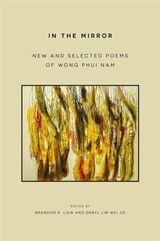 In the Mirror: New and Selected Poems of Wong Phui Nam
Wong Phui Nam
National University of Singapore Press, 2025 In a complete collection of works by one of Malaysia’s foundational poets, Wong confronts the struggles of cultural displacement.
The poetry of Wong Phui Nam is foundational to Malaysian literature in English. While his early work is often cited in this regard, this edited collection of his poetry and critical essays makes it clear that his lifelong trajectory as a poet and critic is of deep interest. In the Mirror by Wong Phui Nam is a critical exploration of Malaysia's fractured post-colonial identity and literary landscapes.
Like many of his English-speaking peers at the University of Malaya, by the 1960s, Wong became disillusioned with the stark contradictions of writing in a colonial language while striving to build or maintain a national literary tradition. In 1969, when Malaysia's national cultural policy firmly emphasized the primacy of the Bahasa Malaysian language over English, Wong proclaimed, "I no longer wanted to write, at least not in a language I was told was a colonial leftover."
Over the years, however, he returned to poetry in English, often publishing privately. He came to believe that English was the language “most capable of representing our predicament,” given the spiritual and cultural vacuums left by colonialism's great ruptures in the region, and the ongoing neocolonial structure of the state and economy. His work challenges the reader to confront the realities of cultural displacement and the complexities of a multi-ethnic society grappling with its past and future.
This collection includes both recent works as well as some of his earlier achievements, starting with How the Hills are Distant, and also includes a foreword linking Wong's work with contemporary literary work in the region. An afterword by Wong's contemporary, Singaporean literary pioneer Edwin Thumboo, completes the volume.
 In the Mood for Texture: The Revival of Bangkok as a Chinese City
Arnika Fuhrmann
Duke University Press, 2026 In the Mood for Texture considers the revival of Chinese pasts and the aesthetics of colonial modernity in contemporary Southeast Asian cultural production, both virtual and material. By analyzing how twentieth-century Shanghai and Hong Kong have been revived in modern Bangkok’s architecture, design, fashion, and nightlife, Arnika Fuhrmann shows how Chinese pasts are redeployed in contemporary film, literature, and hospitality venues to shape present visions of Asia. At the heart of this inquiry stand Shanghai and Hong Kong’s anomalous colonial temporalities and Thailand’s semi-colonial temporality of the “never” and “yet still” of colonization. Attending to the textures of built environments and agentive female subjects, Fuhrmann reconceptualizes the revival of Bangkok's Chinese pasts and demonstrates how Southeast Asian imaginations can challenge both domestic and diasporic narratives of identity and collectivity beyond China.
In the Mouth: Stories and Novellas
Eileen Pollack
Four Way Books, 2008 “…an American talent…”—Stephen King Pollack writes about times of tragedy and transition insightfully, aware of their everyday quality and of their gravity. In the Mouth is a window onto the amazing tenderness and irrationality of human life. One story, “The Bris,” has been selected for The Best American Short-Stories 2008 (Edited by Stephen King and Heidi Pitlor). “Eileen Pollock writes with great acuity, humor, and intelligent resign-ation about the various ways family love is called upon and revealed. This book is terrific company.”—Lorrie Moore “These are funny, rueful, wise stories, steeped in absurdity, pain, possibility —the work of a writer who has lived.”—Gish Jen
 In the Name of Editorial Freedom: 125 Years at the Michigan Daily
Edited by Stephanie Steinberg
University of Michigan Press, 2015 At a time when daily print newspapers across the country are failing, the Michigan Daily continues to thrive. Completely operated by students of the University of Michigan, the paper was founded in 1890 and covers national and international news topics ranging from politics to sports to entertainment. The Daily has been a vital part of the college experience for countless UM students, none more so than those who staffed the paper as editors, writers, and photographers over the years. Many of these Daily alumni are now award-winning journalists who work for the premier news outlets in the world. In the Name of Editorial Freedom, titled after the paper’s longstanding masthead, compiles original essays by some of the best-known Daily alumni about their time on staff. For example Dan Okrent, first public editor of the New York Times, discusses traveling with a cohort of Daily reporters to cover the explosive 1968 Democratic National Convention in Chicago. Rebecca Blumenstein, deputy editor-in-chief of the Wall Street Journal, and author Alan Paul talk about the intensity of the Daily newsroom and the lasting relationships it forged. Adam Schefter of ESPN recalls his awkward first story that nevertheless set him on the path to become the ultimate NFL insider. The essays of this book offer a glimpse, as activist Tom Hayden writes, at the Daily’s impressive role covering historic events and how those stories molded the lives of the students who reported them. Search and browse the Bentley Historical Library's Michigan Daily Archive, https://digital.bentley.umich.edu/midaily. The free online archive contains stories from 23,000 issues published between 1891 and 2014. "They say a newspaper is a daily miracle. If that’s so, The Michigan Daily is something beyond that, with the whole operation run by a bunch of sleep-deprived 20-year olds. What could go wrong? Here, Daily alums share their mistakes freely, weaving their stories through a half-century of American history with wit and wisdom--much of it hard-earned--but also justifiable pride in their idealism, their dedication, and the seriousness of the work they did while mere undergraduates. For all they've accomplished since their Daily days, you get the feeling they’d trade it all for another year at 420 Maynard--and you understand why."
--John U. Bacon, bestselling author of Three and Out: Rich Rodriguez and the Michigan Wolverines in the Crucible of College Football and Endzone: The Rise, Fall, and Return of Michigan Football “I cannot imagine a better way to celebrate 125 years of student journalism than the essays contained in this wonderful volume. Going back some 55 years, the authors, all of whom are successful in their craft, have fashioned for us a unique window into the lives of students at the University of Michigan. Their stories are powerful and remind us of the magic of this place where students both are challenged and challenge others daily to change the world for the better.”
—Mary Sue Coleman, President Emerita at the University of Michigan “This book provides a truly wonderful collection of essays by alumni of the Michigan Daily, one of the nation’s leading college newspapers, concerning their experiences as students covering some of the most important moments in the history of our university, the nation, and the world. Since many of these Michigan Daily alumni have gone on to important careers in American journalism, their fascinating perspectives provide strong evidence of the educational power of such student extracurricular experiences.”
—James J. Duderstadt, President Emeritus at the University of Michigan
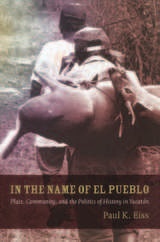 In the Name of El Pueblo: Place, Community, and the Politics of History in Yucatán
Paul K. Eiss
Duke University Press, 2010 The term “el pueblo” is used throughout Latin America, referring alternately to small towns, to community, or to “the people” as a political entity. In this vivid anthropological and historical analysis of Mexico’s Yucatán peninsula, Paul K. Eiss explores the multiple meanings of el pueblo and the power of the concept to unite the diverse claims made in its name. Eiss focuses on working-class indigenous and mestizo populations, examining how those groups negotiated the meaning of el pueblo among themselves and in their interactions with outsiders, including landowners, activists, and government officials. Combining extensive archival and ethnographic research, he describes how residents of the region have laid claim to el pueblo in varied ways, as exemplified in communal narratives recorded in archival documents, in the performance of plays and religious processions, and in struggles over land, politics, and the built environment. Eiss demonstrates that while el pueblo is used throughout the hemisphere, the term is given meaning and power through the ways it is imagined and constructed in local contexts. Moreover, he reveals el pueblo to be a concept that is as historical as it is political. It is in the name of el pueblo—rather than class, race, or nation—that inhabitants of northwestern Yucatán stake their deepest claims not only to social or political rights, but over history itself.
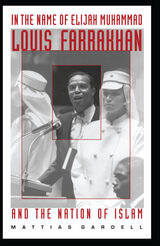 In the Name of Elijah Muhammad: Louis Farrakhan and The Nation of Islam
Mattias Gardell
Duke University Press, 1996 In the Name of Elijah Muhammad tells the story of the Nation of Islam—its rise in northern inner-city ghettos during the Great Depression through its decline following the death of Elijah Muhammad in 1975 to its rejuvenation under the leadership of Louis Farrakhan. Mattias Gardell sets this story within the context of African American social history, the legacy of black nationalism, and the long but hidden Islamic presence in North America. He presents with insight and balance a detailed view of one of the most controversial yet least explored organizations in the United States—and its current leader.
Beginning with Master Farad Muhammad, believed to be God in Person, Gardell examines the origins of the Nation. His research on the period of Elijah Muhammad’s long leadership draws on previously unreleased FBI files that reveal a clear picture of the bureau’s attempts to neutralize the Nation of Islam. In addition, they shed new light on the circumstances surrounding the murder of Malcolm X. With the main part of the book focused on the fortunes of the Nation after Elijah Muhammad’s death, Gardell then turns to the figure of Minister Farrakhan. From his emergence as the dominant voice of the radical black Islamic community to his leadership of the Million Man March, Farrakhan has often been portrayed as a demagogue, bigot, racist, and anti-Semite. Gardell balances the media’s view of the Nation and Farrakhan with the Nation’s own views and with the perspectives of the black community in which the organization actively works. His investigation, based on field research, taped lectures, and interviews, leads to the fullest account yet of the Nation of Islam’s ideology and theology, and its complicated relations with mainstream Islam, the black church, the Jewish community, extremist white nationalists, and the urban culture of black American youth, particularly the hip-hop movement and gangs.
In the Name of Eugenics: Genetics and the Uses of Human Heredity
Daniel Kevles
Harvard University Press, 1995 Daniel Kevles traces the study and practice of eugenics--the science of "improving" the human species by exploiting theories of heredity--from its inception in the late nineteenth century to its most recent manifestation within the field of genetic engineering. It is rich in narrative, anecdote, attention to human detail, and stories of competition among scientists who have dominated the field.
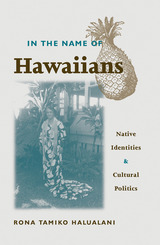 In The Name Of Hawaiians: Native Identities and Cultural Politics
Rona Tamiko Halualani
University of Minnesota Press, 2002 A critical and personal inquiry into the historical factors behind Hawaiian identity Deep within the historical imagination, there lies the image of a Western explorer surrounded by dark and strange natives. In the modern and postmodern spaces of tourism, one finds the reflections of an antiquated nativism that is already dead, however commercially viable. And in the statutes of the State of Hawai‘i, the Aloha spirit is codified into the ideology of multiculturalism. Where, among the multiple representations and constructions of what is "Hawaiian," is Hawaiian identity actually lived? Rona Tamiko Halualani analyzes the diverse formations and practices of Hawaiian identity and sociality, on the U.S. mainland as well as on the islands, across several interrelated contexts: museum culture, explorer journals, maps, tourism, census technology, blood quantum mandates, neocolonial administration, and lived community practice. Halualani shows how these contexts represent larger forces from different historical moments that significantly changed the social relations surrounding Hawaiians, the ways in which they have been identified, and how they make sense of who they are. Throughout she interweaves the countering narratives and practices by indigenous Hawaiians as they seek authorization of their identities, land rights, and culture.
In the Name of History
Joan Wallach Scott
Central European University Press, 2020 In this book Joan Wallach Scott discusses the role history has played as an arbiter of right and wrong and of those who claim to act in its name—"in the name of history." Scott investigates three different instances in which repudiation of the past was conceived as a way to a better future: the International Military Tribunal at Nuremberg in 1946, the South African Truth and Reconciliation Commission in 1996, and the ongoing movement for reparations for slavery in the United States. Scott shows how in these cases history was not only used to explain the past but to produce a particular future. Yet both past and future were subject to the political realities of their time and defined in terms of moral absolutes, often leading to deep contradictions. These three instances demonstrate that history is not an impartial truth, rather its very meaning is constructed by those who act in its name.
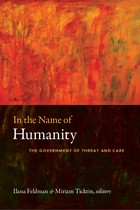 In the Name of Humanity: The Government of Threat and Care
Ilana Feldman and Miriam Ticktin, eds.
Duke University Press, 2010 Scientists, activists, state officials, NGOs, and others increasingly claim to speak and act on behalf of “humanity.” The remarkable array of circumstances in which humanity is invoked testifies to the category’s universal purchase. Yet what exactly does it mean to govern, fight, and care in the name of humanity? In this timely collection, leading anthropologists and cultural critics grapple with that question, examining configurations of humanity in relation to biotechnologies, the natural environment, and humanitarianism and human rights. From the global pharmaceutical industry, to forest conservation, to international criminal tribunals, the domains they analyze highlight the diversity of spaces and scales at which humanity is articulated. The editors argue that ideas about humanity find concrete expression in the governing work that operationalizes those ideas to produce order, prosperity, and security. As a site of governance, humanity appears as both an object of care and a source of anxiety. Assertions that humanity is being threatened, whether by environmental catastrophe or political upheaval, provide a justification for the elaboration of new governing techniques. At the same time, humanity itself is identified as a threat (to nature, to nation, to global peace) which governance must contain. These apparently contradictory understandings of the relation of threat to the category of humanity coexist and remain in tension, helping to maintain the dynamic co-production of governance and humanity. Contributors. Arun Agrawal, Joao Biehl , Didier Fassin, Allen Feldman, Ilana Feldman, Rebecca Hardin, S. Lochann Jain, Liisa Malkki, Adriana Petryna, Miriam Ticktin, Richard Ashby Wilson, Charles Zerner
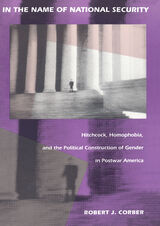 In the Name of National Security: Hitchcock, Homophobia, and the Political Construction of Gender in Postwar America
Robert J. Corber
Duke University Press, 1993 In the Name of National Security exposes the ways in which the films of Alfred Hitchcock, in conjunction with liberal intellectuals and political figures of the 1950s, fostered homophobia so as to politicize issues of gender in the United States.
As Corber shows, throughout the 1950s a cast of mind known as the Cold War consensus prevailed in the United States. Promoted by Cold War liberals--that is, liberals who wanted to perserve the legacies of the New Deal but also wished to separate liberalism from a Communist-dominated cultural politics--this consensus was grounded in the perceived threat that Communists, lesbians, and homosexuals posed to national security. Through an analysis of the films of Alfred Hitchcock, combined with new research on the historical context in which these films were produced, Corber shows how Cold War liberals tried to contain the increasing heterogeneity of American society by linking questions of gender and sexual identity directly to issues of national security, a strategic move that the films of Hitchcock both legitimated and at times undermined. Drawing on psychoanalytic and Marxist theory, Corber looks at such films as Rear Window, Strangers on a Train, and Psycho to show how Hitchcock manipulated viewers' attachments and identifications to foster and reinforce the relationship between homophobia and national security issues.
A revisionary account of Hitchcock's major works, In the Name of National Security is also of great interest for what it reveals about the construction of political "reality" in American history.
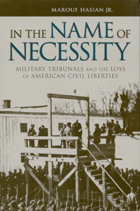 In the Name of Necessity: Military Tribunals and the Loss of American Civil Liberties
Marouf Hasian
University of Alabama Press, 2005 Analyses the ways American leaders have justified the use of military tribunals, the suspension of due process, and the elimination of habeas corpus
Though the war on terrorism is said to have generated unprecedented military situations, arguments for the Patriot Act and military tribunals following 9/11 resemble many historical claims for restricting civil liberties, more often than not in the name of necessity.
Marouf Hasian Jr. examines the major legal cases that show how various generations have represented the need for military tribunals, and how officials historically have applied the term “necessity.” George Washington cited the necessity of martial discipline in executing the British operative Major André. Tribunals tried and convicted more than 200 Sioux warriors during the Dakota Wars. President Lincoln suspended habeas corpus for many civilian and military prisoners during the Civil War. Twentieth Century military and civilian leaders selectively drafted their own codes, leading to the execution of German saboteurs during World War II. Further, General MacArthur’s tribunal to investigate the wartime activities of Japanese General Yamashita raised the specter of “victor’s justice,” anticipating the outcry that attended the Nuremberg trials.
In those cases as in current debates about the prosecution of terrorists, Hasian argues that the past is often cited selectively, neglecting historical contexts and the controversies these cases engendered.
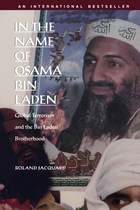 In the Name of Osama Bin Laden: Global Terrorism and the Bin Laden Brotherhood
Roland Jacquard
Duke University Press, 2002 “A must read for all who continue to grapple with the twin legacy of hatred and hope from September 11. . . “*
International terrorism expert Roland Jacquard’s In the Name of Osama bin Laden presents a dramatic portrait of the world's most wanted terrorist and his extensive brotherhood--the network of people who operate “in his name.” Published originally in France the very week of September 11, as events in the United States shook the world, the book has become an international bestseller.
Jacquard details how bin Laden became an international emblem of fundamentalist, pan-Islamic, anti-U.S. fervor and the leader of a brotherhood so passionate that devotees who have never met him will act autonomously in his name. The author explains the global character of bin Laden’s organization, elaborating the extent of his sphere of influence in Europe and Asia. Jacquard reveals the construction of bin Laden’s networks—including a profile of his inner circle—and their collaboration with overlapping webs of banking, drug trafficking, religious, and terrorist organizations. He considers the brotherhood’s access to biological, chemical, and nuclear weapons and warns that, with or without bin Laden, this global terrorist force will remain a threat.
Now in English, this edition has been substantially updated in light of recent world events and expanded to include previously unpublished materials, featuring a new introduction and afterword. New documents include an April 2001 interview by the author with bin Laden; a September 24 proclamation by bin Laden to Muslims in Pakistan; and a key page from Dr. Ayman al-Zawahiri’s book justifying eternal jihad, which was smuggled out of Afghanistan in October 2001.
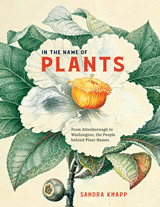 In the Name of Plants: From Attenborough to Washington, the People behind Plant Names
Sandra Knapp
University of Chicago Press, 2022 A vividly illustrated meeting with thirty plants and their inspiring namesakes
Shakespeare famously asserted that “a rose by any other name would smell as sweet,” and that’s as true for common garden roses as it is for the Megacorax, a genus of evening primroses. Though it may not sound like it, the Megacorax was actually christened in honor of famed American botanist Peter Raven, its name a play on the Latin words for “great raven.”
In this lush and lively book, celebrated botanist Sandra Knapp explores the people whose names have been immortalized in plant genera, presenting little-known stories about both the featured plants and their eponyms alongside photographs and botanical drawings from the collections of London’s Natural History Museum. Readers will see familiar plants in a new light after learning the tales of heroism, inspiration, and notoriety that led to their naming. Take, for example, nineteenth-century American botanist Alice Eastwood, after whom the yellow aster—Eastwoodia elegans—is named. Eastwood was a pioneering plant collector who also singlehandedly saved irreplaceable specimens from the California Academy of Sciences during the 1906 San Francisco earthquake. Or more recently, the fern genus Gaga, named for the pop star and actress Lady Gaga, whose verdant heart-shaped ensemble at the 2010 Grammy Awards bore a striking resemblance to a giant fern gametophyte. Knapp’s subjects range from Charles Darwin’s grandfather, Erasmus Darwin (Darwinia), and legendary French botanist Pierre Magnol—who lends his name to the magnolia tree—to US founding figures like George Washington (Washingtonia) and Benjamin Franklin (Franklinia). Including granular details on the taxonomy and habitats for thirty plants alongside its vibrant illustrations, this book is sure to entertain and enlighten any plant fan.
 In the Name of the Father: The Rhetoric of the New Southern Baptist Convention
Carl L. Kell and L. Raymond Camp. Foreword by Kenneth Chafin
Southern Illinois University Press, 1999
In the Name of the Father: The Rhetoric of the New Southern Baptist Conventionbegins with an analysis of the 1979 Southern Baptist Convention, the watershed convention where moderate forces fell before the powerful oratory of the ultraconservative faction, which has remained in power ever since. Communication professors Carl L. Kell and L. Raymond Camp investigate the rhetorical shift from moderate to ultraconservative in the Southern Baptist Convention, the largest denomination in the South and the largest Protestant denomination in the United States.
Drawing on sermons delivered at national conventions from 1979 to the present, Kell and Camp outline the discourses of fundamentalism, inerrancy, and exclusion. These discourses, the authors assert, point to the SBC leaders’ call for a return to times before feminism and tolerance of varying sexual orientations allegedly brought chaos to society and shook believers from their theological foundations.
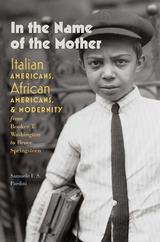 In the Name of the Mother: Italian Americans, African Americans, and Modernity from Booker T. Washington to Bruce Springsteen
Samuele F. S. Pardini
Dartmouth College Press, 2017 In the Name of the Mother examines the cultural relationship between African American intellectuals and Italian American writers and artists, and how it relates to American blackness in the twentieth century. Samuele Pardini links African American literature to the Mediterranean tradition of the Italian immigrants and examines both against the white intellectual discourse that defines modernism in the West. This previously unexamined encounter offers a hybrid, transnational model of modernity capable of producing democratic forms of aesthetics, social consciousness, and political economy. This volume emphasizes the racial “in-betweenness” of Italian Americans rearticulated as “invisible blackness,” a view that enlarges and complicates the color-based dimensions of American racial discourse. This strikingly original work will interest a wide spectrum of scholars in American Studies and the humanities.
 In the Name of War: Judicial Review and the War Powers since 1918
Christopher N. May
Harvard University Press, 1989 For more than a century, in settings where the political branches of government were unable or unwilling to exercise self-restraint, the Supreme Court was disposed to treat federal war powers legislation as exempt from judicial review, an attitude that permitted numerous abuses from Prohibition to press censorship.
Though the First World War officially ended in 1918, the Senate’s rejection of the Versailles Treaty kept the United States in a legal state of war until late 1921. Exploring the interplay between political and social events and the evolution of legal theory Christopher May tells how during this challenging three-year period, the government invoked the war powers to pursue ends otherwise beyond its reach: with the backing of Congress and seemingly free from judicial scrutiny, the Wilson administration took over the country’s rail and communications systems, outlawed profiteering, prosecuted strikers, suppressed “radicals” and censored the leftist press. None of these measures bore any true relation to the war, says the author, who then describes the course through which the Supreme Court, confronted by this pattern of abuse, finally abandoned its long-standing refusal to review the constitutionality of war powers legislation.
In the Name of War explores the roles played by Woodrow Wilson, Joseph Tumulty, Albert Burleson, and A. Mitchell Palmer—men whose personal ambitions frequently shaped official policy in the late Progressive Era. After analyzing the Court’s more recent record, including the internment of Japanese-Americans in World War II, May draws some practical conclusions about the use of judicial intervention in time of crisis that are sure to attract the attention of lawyers, legal scholars, historians, and students of the Constitution.
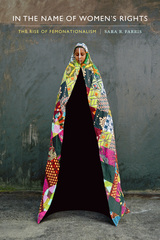 In the Name of Women's Rights: The Rise of Femonationalism
Sara R. Farris
Duke University Press, 2017 Sara R. Farris examines the demands for women's rights from an unlikely collection of right-wing nationalist political parties, neoliberals, and some feminist theorists and policy makers. Focusing on contemporary France, Italy, and the Netherlands, Farris labels this exploitation and co-optation of feminist themes by anti-Islam and xenophobic campaigns as “femonationalism.” She shows that by characterizing Muslim males as dangerous to western societies and as oppressors of women, and by emphasizing the need to rescue Muslim and migrant women, these groups use gender equality to justify their racist rhetoric and policies. This practice also serves an economic function. Farris analyzes how neoliberal civic integration policies and feminist groups funnel Muslim and non-western migrant women into the segregating domestic and caregiving industries, all the while claiming to promote their emancipation. In the Name of Women's Rights documents the links between racism, feminism, and the ways in which non-western women are instrumentalized for a variety of political and economic purposes.
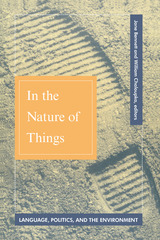 In The Nature Of Things: Language, Politics, and the Environment
Jane Bennett
University of Minnesota Press, 1993 Informed by recent developments in literary criticism and social theory, In the Nature of Things addresses the presumption that nature exists independent of culture and, in particular, of language. The theoretical approaches of the contributors represent both modernist and postmodernist positions, including feminist theory, critical theory, Marxism, science fiction, theology, and botany. They demonstrate how the concept of nature is invoked and constituted in a wide range of cultural projects—from the Bible to science fiction movies, from hunting to green consumerism. Ultimately, it weeks to link the work of theorists concerned with nature and the environment to nontheorists who share similar concerns. Contributors include R. McGreggor Cawley, Romand Coles, William E. Connolly, Jan E. Dizard, Valerie Hartouni, Cheri Lucas Jennings, Bruce H. Jennings, Timothy W. Luke, Shane Phelan, John Rodman, Michael J. Shapiro, and Wade Sikorski.
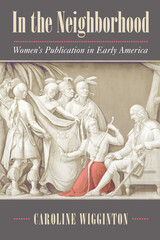 In the Neighborhood: Women's Publication in Early America
Caroline Wigginton
University of Massachusetts Press, 2016 Winner of the 2018 Early American Literature Book Prize
In this compelling and original book, Caroline Wigginton reshapes our understanding of early American literary history. Overturning long-standing connections between the male-dominated print culture of pamphlets, broadsides, and newspapers and the transformative ideas that instigated the American Revolution, Wigginton explores how women's "relational publications"—circulated texts, objects, and performances—transformed their public and intimate worlds. She argues that Native, black, and white women's interpersonal "publications" revolutionized the dynamics of power and connection in public and private spaces, whether those spaces were Quaker meeting houses, Creek talwas, trading posts, burial grounds, or the women's own "neighborhoods."
Informed by deep and rich archival research, Wigginton's case studies explore specific instances of "relational publication." The book begins with a pairing of examples—the statement a grieving Lenape mother made through a wampum belt and the political affiliations created when a salon hostess shared her poetry. Subsequent chapters trace a history of women's publication practice, including a Creek woman's diplomatic and legal procession-spectacles in the colonial Southeast, a black mother's expression of protest in Newport, Rhode Island, and the resulting evangelical revival, Phillis Wheatley's elegies that refigured neighborhoods of enslaved and free Bostonians, and a Quaker woman's pious and political commonplace book in Revolutionary Philadelphia.
 In the Nineties
John Stokes
University of Chicago Press, 1990 John Stokes's lively study is an exercise in interdisciplinary criticism inspired by the decade it observes, the decade of Wilde, Shaw, Beardsley, and Sickert. No longer dismissed as merely transitional between the Victorian and the Modern, the 1890s have now come to be recognized as unique—a period of dramatic engagement between high culture and popular forms, one medium and another, art and life.
Spurning fixed boundaries, Stokes relates the controversial topics of the day—the status of the "New Journalism," the "degenerative" influence of Impressionist painting, the dubious morality of the music hall, the urgent need for prison reform, and the prevalence of suicide—to primary literary texts, such as The Ballad of Reading Gaol, The Importance of Being Earnest, Jude the Obscure, and Portrait of a Lady. And in the process, he explores crucial areas of sociological and psychological interest: criminality, sexuality, madness, and "morbidity."
Each of the book's six chapters opens with a look at the correspondence columns of daily newspapers and goes on, with a keen eye for the hidden link, to pursue a particular theme. Locations shift from Leicester Square and the Thames embankment to the Normandy coast and the Paris morgue and feature, along with famous names, a lesser known company of acrobats, convicts, aesthetes, "philistines," and mysterious suicides.
Nearly a century later, John Stokes's unrivalled knowledge of how the arts actually functioned in the nineties makes this book a major contribution to modern cultural studies.
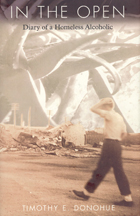 In the Open: Diary of a Homeless Alcoholic
Timothy E. Donohue
University of Chicago Press, 1996 Compelling, raw, and painfully self-aware, In the Open describes an existence most people can barely imagine. A first-hand account of one man's struggle with homelessness and alcoholism, this diary records a world full of physical degradation and despair that is not without unpredictable moments of striking beauty.
Donohue's experiences are brutal, but his perceptions are poetic. This account of an intelligent and sensitive man in the grip of alcoholism and homelessness challenges our perceptions of those on the margins of American contemporary life.
"Donohue recorded this often-moving account during a four-year period of homelessness caused by his alcoholism. . . . There are many brilliant observations here on a range of topics, including human nature, technology, and capitalism. . . . Donohue's life on the fringe also provides an inside look at the homeless system of overnight shelters, labor offices, and food stamp providers. But, somehow, in spite of all the negatives, a hopeful book emerges."—Booklist
"A startlingly original book. In this confessional age, Donohue's diary becomes a different sort of tell-all, a palimpsest that forces us to extract the author from his own writing. . . . Donohue comes to resemble Swift's Gulliver"—Nicholas Nesson, Boston Phoenix
"Donohue punctuates his account of 'domiciling within the black walls of a mosquito-infested night' with rambling metaphysical asides in the style of an eighteenth-century philosophe."—Molly McQuade, Lingua Franca
"Despite hunger, homelessness, dead-end jobs and abusive drinking, what is most striking about Donohue is his amazing optimism and endurance."—Patrick Markee, Nation
"Donohue is a gifted writer. . . . But what gives [his diary] the breath of life is that it is written by an artist."—Alec Wilkinson, Los Angeles Times Book Review
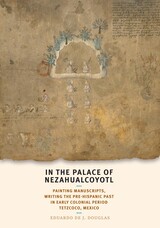 In the Palace of Nezahualcoyotl: Painting Manuscripts, Writing the Pre-Hispanic Past in Early Colonial Period Tetzcoco, Mexico
By Eduardo de J. Douglas
University of Texas Press, 2010 Around 1542, descendants of the Aztec rulers of Mexico created accounts of the pre-Hispanic history of the city of Tetzcoco, Mexico, one of the imperial capitals of the Aztec Empire. Painted in iconic script ("picture writing"), the Codex Xolotl, the Quinatzin Map, and the Tlohtzin Map appear to retain and emphasize both pre-Hispanic content and also pre-Hispanic form, despite being produced almost a generation after the Aztecs surrendered to Hernán Cortés in 1521. Yet, as this pioneering study makes plain, the reality is far more complex. Eduardo de J. Douglas offers a detailed critical analysis and historical contextualization of the manuscripts to argue that colonial economic, political, and social concerns affected both the content of the three Tetzcocan pictorial histories and their archaizing pictorial form. As documents composed by indigenous people to assert their standing as legitimate heirs of the Aztec rulers as well as loyal subjects of the Spanish Crown and good Catholics, the Tetzcocan manuscripts qualify as subtle yet shrewd negotiations between indigenous and Spanish systems of signification and between indigenous and Spanish concepts of real property and political rights. By reading the Tetzcocan manuscripts as calculated responses to the changes and challenges posed by Spanish colonization and Christian evangelization, Douglas's study significantly contributes to and expands upon the scholarship on central Mexican manuscript painting and recent critical investigations of art and political ideology in colonial Latin America.
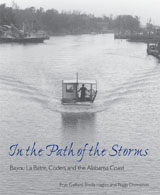 In the Path of the Storms: Bayou La Batre, Coden, and the Alabama Coast
Frye Gaillard
University of Alabama Press, 2008 The Gulf Coast villages of Bayou La Batre and Coden are two of Alabama’s most distinctive, with roots going back to the French settlements of the 18th century. For generations, the proud inhabitants of these communities have extracted their modest livings from the sea, sustained by a lesson handed down over time— that providing for the needs of one’s family is the only true measure of success. But the world has changed drastically for them. A global economy of higher gas prices and cheap imported seafood has threatened the lifeblood of the area. And in recent years a rash of hurricanes, culminating with Hurricane Katrina, has battered the hopes and dreams of these Bayou towns. But they have known hard times and massive changes before. In the 1970s, refugees from Vietnam, Cambodia, and Laos flooded into the area and within a few years made up a third of the local population. Three Buddhist temples soon took their places among the Catholic, Baptist, and Pentecostal churches that predominated, and for a time the different ethnic groups coexisted in a kind of uneasy peace. But now they are learning to pull together in an uncertain struggle to rebuild their communities. In the Path of the Storms is a powerful portrait in words and photographs of a unique and unforgettable place. It is a story of tradition, and forces of change, and the epic struggle of these Gulf Coast communities to survive and thrive.
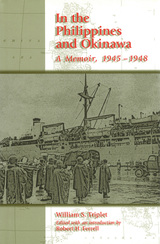 In the Philippines and Okinawa: A Memoir, 1945-1948
William S. Triplet & Edited by Robert H. Ferrell
University of Missouri Press, 2001 In the Philippines and Okinawa, the third volume of Colonel William S. Triplet's memoirs, tells of Triplet's experiences during the American occupations in the early years after World War II. Continuing the story from the preceding books of his memoirs, A Youth in the Meuse-Argonne and A Colonel in the Armored Divisions, Triplet takes us to the Philippines, where his duties included rounding up isolated groups of Japanese holdouts, men who refused to believe or admit that their nation had lost the war, and holding them until the time came to transport them back to Japan. Triplet also had to reorganize his battalions and companies to raise morale, which had plummeted with the end of the war and the seemingly dull tasks of occupation. When he took over his assignment of commanding a regiment in a division, he was dismayed to discover the unmilitary habits of almost everyone, regardless of rank. A strict disciplinarian himself, Colonel Triplet, who had served in both world wars, at one time commanding a four-thousand-man combat group, brought his regiment of garrison troops back into shape in a short time. Okinawa presented the new challenge of bringing order to an island that had seen the deaths of one hundred thousand civilians. Virtually every building on the island had been leveled, and tens of thousands of Japanese defenders had been killed. Triplet was also obliged to oversee the temporary burial of thirteen thousand U.S. servicemen, both soldiers and sailors. In the Philippines and Okinawa portrays the ever-changing, very human, and frequently dangerous occupation of two East Asian regions that are still important to American foreign policy. Any reader interested in military history or American history will find this memoir engaging.
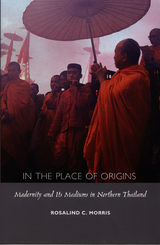 In the Place of Origins: Modernity and Its Mediums in Northern Thailand
Rosalind C. Morris
Duke University Press, 2000 In the Place of Origins tells the tale of modernity in Northern Thailand, discerning its oblique signs in the performances of contemporary spirit mediums. In a world driven by the twin fantasies of pastness and newness, Rosalind C. Morris reveals that spirit mediumship is not simply a theater of atavistic tendency but an arena in which it is possible to read the relationships between new forms of representation and subjectivity, as well as new modes of magic and political power.
Through her careful examination of the transformations of spirit mediumship wrought by the mass media, Morris takes readers into the world of the northern Thai past to discover the anticipations of future histories. In this process, she finds new objects for anthropological inquiry, including romantic love and epistolary poetry. She then turns her eye toward the relationships between commodification and prosaic form and photography and the discourses of gendered and national identity. Attending to these issues as they manifest themselves in the practices of mediums, Morris describes both the mundane activities of spirit mediums and the grand ambitions to political authority that are embodied in the increasingly spectacular forms of possession that are becoming so popular with both tourists and local culture brokers. In the Place of Origins traverses this ground with accounts of right-wing militarism and ritual revival during the 70s, and of the democracy movement of 1992, when a global mass media was galvanized by images of military repression and the spectacle of traditional ritual power in cursing. Finally, considering the claims that mediums make to magical power in the face of both AIDS and the Asian economic crisis, Morris reveals the potency of extrajudicial forms of power and violence in the late modern era.
This provocative study will interest anthropologists, historians, Asianists, and those involved in gender, performance, media, and literary studies.
 In the Presence of Angels
Andrea R. Garrison
Swedenborg Foundation Publishers, 2013
In October 2004, Andrea Garrison’s mother, Mattie Pearl, passed into the spiritual world. The weeks leading up to her crossing were a powerful time for Andrea and the rest of her family as Mattie Pearl shared her love, her insights, and her visions of heaven with those around her.
Andrea knew from the time she was a little girl that there was a spiritual reality beyond what we could see, and her mother encouraged her to explore different understandings of the Divine. As an adult, Andrea encountered the writings of Emanuel Swedenborg and was struck by the similarities between his theology and her experiences. Her quest to find others who knew about the Swedish mystic led her to new friends and, ultimately, a deeper exploration of her family history.
Originally published as The Crossing Over of Mattie Pearl, this expanded edition tells more about Andrea’s family history, including the role her father played in her life, as well as her reflections on Emanuel Swedenborg. Anyone who has mourned the loss of a loved one or been curious about the other side will be inspired and uplifted by this true story of a remarkable woman.
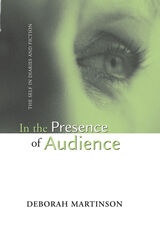 IN THE PRESENCE OF AUDIENCE: THE SELF IN DIARIES AND FICTION
Deborah Martinson
Ohio State University Press, 2003 As a diary writer imagines shadow readers rifling diary pages, she tweaks images of the self, creating multiple readings of herself, fixed and unfixed. When the readers and potential readers are husbands and publishers, the writer maneuvers carefully in a world of men who are quick to judge and to take offense. She fills the pages with reflections, anecdotes, codes, stories, biographies, and fictions. The diary acts as a site for the writer’s tension, rebellion, and remaking of herself. In this book Martinson examines the diaries of Virginia Woolf, Katherine Mansfield, Violet Hunt, and Doris Lessing’s fictional character Anna Wulf, and shows that these diaries (and others like them) are not entirely private writings as has been previously assumed. Rather, their authors wrote them knowing they would be read. In these four cases, the audience is the author’s male lover or husband, and Martinson reveals how knowledge of this audience affects the language and content in each diary. Ultimately, she argues, this audience enforces a certain “male censorship” which changes the shape of the revelations, the shape of the writer herself, making it impossible for the female author to be honest in writing about her true self. Even sophisticated readers often assume that diaries are primarily private. This study interrogates the myth of authenticity and self-revelation in diaries written under the gaze of particular peekers.
 In the Presence of Gods and Spirits: Hirata Atsutane and His Collaborators
Anne Walthall
University of Michigan Press, 2025 In the Presence of Gods and Spirits brings to life the early nineteenth-century Japanese religious leader and scholar Hirata Atsutane, whose fear of Russian incursion onto Japan’s soil led him to redefine what it means to be Japanese. Atsutane advocated the study of the Way of the Gods, commonly known as Shinto, to explain what happens to the soul after death and to cultivate a Japanese identity centered on gods, spirits, and the emperor. His teachings would later attract thousands of followers and feed the movements that led to the Meiji Restoration. Drawing on the concept of material religion, Walthall demonstrates how Atsutane and his collaborators sought out knowledge of the unseen world and educated others, while seeking to bring themselves closer to the gods and spirits. This work showcases Atsutane and his community’s legacy, which has had a profound influence on Japanese society, religious belief, and culture far beyond his lifetime.
In the Province of the Gods
Kenny Fries
University of Wisconsin Press, 2021 Kenny Fries embarks on a journey of profound self-discovery as a disabled foreigner in Japan, a society historically hostile to difference. As he visits gardens, experiences Noh and butoh, and meets artists and scholars, he also discovers disabled gods, one-eyed samurai, blind chanting priests, and A-bomb survivors. When he is diagnosed as HIV positive, all his assumptions about Japan, the body, and mortality are shaken, and he must find a way to reenter life on new terms.
 In the Public Interest: Medical Licensing and the Disciplinary Process
Horowitz, Ruth
Rutgers University Press, 2012 Winner of the American Sociological Association Sociology of Law Section 2013 Outstanding Book Award
How do we know when physicians practice medicine safely? Can we trust doctors to discipline their own? What is a proper role of experts in a democracy? In the Public Interest raises these provocative questions, using medical licensing and discipline to advocate for a needed overhaul of how we decide public good in a society dominated by private interest groups. Throughout the twentieth century, American physicians built a powerful profession, but their drive toward professional autonomy has made outside observers increasingly concerned about physicians’ ability to separate their own interests from those of the general public.
Ruth Horowitz traces the history of medical licensure and the mechanisms that democratic societies have developed to certify doctors to deliver critical services. Combining her skills as a public member of medical licensing boards and as an ethnographer, Horowitz illuminates the workings of the crucial public institutions charged with maintaining public safety. She demonstrates the complex agendas different actors bring to board deliberations, the variations in the board authority across the country, the unevenly distributed institutional resources available to board members, and the difficulties non-physician members face as they struggle to balance interests of the parties involved.
In the Public Interest suggests new procedures, resource allocation, and educational initiatives to increase physician oversight. Horowitz makes the case for regulations modeled after deliberative democracy that promise to open debates to the general public and allow public members to take a more active part in the decision-making process that affects vital community interests.
In the Quiet Season and Other Stories
Martha Amore
University of Alaska Press, 2018 In the Quiet Season & Other Stories explores the human landscape of Alaska. While the stories take place in modern-day towns, each is laced with a timelessness that comes from their roots in ageless issues: broken trust and heartbreak, hope and rebirth. The expansive Alaska landscape infuses the stories with a unique chill, as tears freeze on eyelashes and mountain ranges form the backdrop for breakups. Although the people in Amore’s stories know how to survive Alaska’s cold terrain, these characters stumble when trying to navigate through their own lives and lost dreams.
 In the Rainforest: Report from a Strange, Beautiful, Imperiled World
Catherine Caufield
University of Chicago Press, 1986 In the Rainforest takes us to Africa, Latin America, and Southeast Asia, revealing a colorful and bizarre world where fish live on fruit, spiders prey on birds, and violets grow to the size of apple trees.
"I recommend In the Rainforest as scientific journalism at its best, and [Caufield's] book as the one to read to become informed about the tropical crisis. Caufield traveled the world, went to the difficult places, sometimes beautiful and often dispiriting, mastered the important ideas, and talked to an impressive number of people on all sides of the issues. . . . There are villains in abundance: corrupt government agents who aid in the destruction of native tribes, greedy caballero landowners, and even the governmental planners who with the best of intentions rush heedlessly toward the environmental degradation of their own countries."—E. O. Wilson, Science
"The whole book is filled with amazing facts. . . . Moving and informative."—Ellen W. Chu, New York Times Book Review
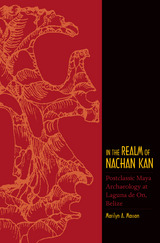 In the Realm of Nachan Kan: Postclassic Maya Archaeology at Laguna De On, Belize
Marilyn A. Masson
University Press of Colorado, 2000 The prevailing view of the lowland Maya during the Postclassic period (A.D. 1050-1500) has been one of an impoverished, "degenerated" society devoid of cultural accomplishment. However, Marilyn A. Masson offers a fresh interpretation of this society as one that represented a complex, sophisticated, extensive organization of semiautonomous units that were closely integrated, yet embraced a decentralized political economy. In the Realm of Nachan Kan opens a window on Postclassic Maya patterns of cultural development and organization through a close examination of the small rural island of Laguna de On, a location that was distant from the governing political centers of the day. Using diachronic analysis of regional settlement patterns, ceramic traditions, household and ritual features, and artifacts from the site, Masson tracks developmental changes throughout the Postclassic period. These data suggest that affluent patterns of economic production and local and long-distance exchange were established within northern Belize by the eleventh century, and continued to develop, virtually uninterrupted, until the time of Spanish arrival. In addition, Masson analyzes contemporary political and religious artistic traditions at the temples of Mayapan, Tulum, and Santa Rita to provide a regional context for the changes in community patterns at Laguna de On. These cultural changes, she maintains, are closely correlated with the rise of Mayapan to power and participation of sites like Laguna de On in a pan-lowland economic and ritual interaction sphere. Offering a thoroughly new interpretation of Postclassic Mayan civilization. In the Realm of Nachan Kan is a must for scholars of Mesoamerican history and culture.
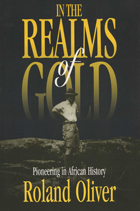 In the Realms of Gold: Pioneering in African History
Roland Oliver
University of Wisconsin Press, 1997 Over the last fifty years, Roland Oliver has been both a witness to the post-colonial history of Africa and a preeminent scholar of the continent’s pre-colonial history. Oliver was a young Cambridge graduate in 1947 when he took a newly created position at the University of London to research, and eventually teach, the pre-colonial history of Africa. Seeking from the outset to establish a unified conception of African history free from European frameworks, Oliver and his colleague John Fage went on to write the influential A Short History of Africa, found the Journal of African History, and co-edit the eight-volume Cambridge History of Africa.
In the Realms of Gold is Oliver’s account of his life and work. He writes in a deft and lively style about the circumstances of his early life that shaped his education and outlook: his childhood on a river houseboat in Kashmir, the influential teachers and friends met at Stowe and Cambridge, and his service in World War II as a cryptographer in British intelligence, where he met his first wife, Caroline Linehan. His interest in church history while at Cambridge led him to study the historical effects of Christian missionaries in Africa, and thus his career began.
The core of the book is Oliver’s account of his research travels throughout tropical Africa from the 1940s to the 1980s; his efforts to train and foster African graduate students to teach in African universities; his role in establishing conferences and journals to bring together the work of historians and archaeologists from Europe and Africa; his encounters with political and religious leaders, scholars, soldiers, and storytellers; and the political and economic upheavals of the continent that he witnessed.
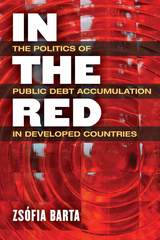 In the Red: The Politics of Public Debt Accumulation in Developed Countries
Zsófia Barta
University of Michigan Press, 2018 Why do rich countries flirt with fiscal disaster? Between the 1970s and the 2000s, during times of peace and prosperity, affluent countries—like Belgium, Greece, Italy, and Japan—accumulated so much debt that they became vulnerable and exposed themselves to the risk of default. In the past three decades, an extensive scholarly consensus emerged that these problems were created by fiscal indiscipline, the lack of sufficient concern for budgetary constraints from policy makers as they try to please voters. This approach formed the foundation for the fiscal surveillance system that attempted to bring borrowing in European countries under control via a set of fiscal rules. In the Red demonstrates that the problem of sustained, large-scale debt accumulation is an adjustment issue rather than a governance failure. Irrespective of whether the original impetus for borrowing arose from exogenous changes or irresponsible decision making, policy makers invariably initiate spending cuts and/or tax increases when debt grows at an alarming rate for several years in a row. Zsófia Barta argues that explaining why some countries accumulate substantial amounts of debt for decades hinges on understanding the conditions required to allow policy makers to successfully put into place painful adjustment measures.
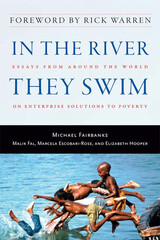 In the River They Swim: Essays from Around the World on Enterprise Solutions to Poverty
Michael Fairbanks
Templeton Press, 2009 The sociologist Thomas Sowell writes, "We need to confront the most blatant fact that has persisted across centuries of social history—vast ddifferences in productivity among peoples, and the economic and other consequences of such differences." Poverty demeans dignity, shrinks the soul, wastes potential, and inflicts suffering on three billion people on our planet. We must also acknowledge that, during the past fifty yyears, the record in international assistance to the least developed countries has been disappointing; the economics-based abstractions developed in the think tanks of Europe and North America are insufficient. In the River They Swim is the antithesis to that search for solutions the next big theory of global poverty. From the fresh perspective of advisors on the frontlines of development to the insight of leaders like President Paul Kagame of Rwanda and Pastor Rick Warren, it tells the story of change in the microcosms of emerging businesses, industries, and governments. These essays display a personal nature to their work that rigorous analysis alone cannot explain. We learn that a Sufi master can teach us about the different levels of knowledge, the "different ways to know a river." These practitioners could have written about its length, its source, its depth, its width, the power of its current, and the life it contains. They could have invested time and money to travel to that river so that they could sit on its shores and look at it, feel the sand that borders it, and watch the birds at play over it. Instead, they dove in to swim in the river, felt its current along their bodies, and tasted something of it. They wondered, briefly, if they had the strength to swim its length, and now they share the answer. If human development is a river, the authors in this volume, and perhaps some readers, will no longer be satisfied to stand along its banks.
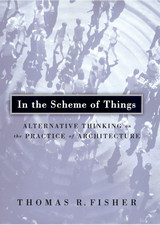 In The Scheme Of Things: Alternative Thinking on the Practice of Architecture
Thomas R. Fisher Fisher
University of Minnesota Press, 2006 One of the field’s most innovative thinkers reconsiders the purpose and practice of architecture. At the dawn of the twenty-first century, architecture is in a state of crisis. Numbed by an ugly and shoddily constructed built environment and outraged by the cost of high-profile design projects, the public has become disinterested in and contemptuous of architecture as both a profession and an art. At the same time, some of our most creative designers have isolated themselves from the tastes and needs of mainstream society, reflecting a similar malaise found in design and architecture schools around the country. In this troubling climate, Thomas R. Fisher—who challenged architects as editorial director of Progressive Architecture, becoming recognized as one of the field’s most original thinkers—contends that the purpose and prospects of architectural practice must be reconsidered and reenergized. In the Scheme of Things looks at architecture’s need to respond creatively and meaningfully to the extraordinary changes affecting the profession now, changes that include the global economy, the advent of computer-aided design, and the growing disconnection between design schools, architectural practice, and the public.
In each of the twelve essays that comprise this timely volume, Fisher addresses issues of vital concern to architects and students, offering hard-hitting criticism and proposing innovative and practical ideas for reform at the level of both the individual practitioner and the profession as a whole. Through his thoughtful and nuanced consideration of architecture’s ideological foundations and its relationship to ecology, politics, and technology, as well as his subtle understanding of the architect’s interior life, Fisher challenges the demoralized design community to recapture its historical role as steward and visionary of the public realm.
Thomas R. Fisher is dean of the College of Architecture and Landscape Architecture at the University of Minnesota and coeditor of Architectural Research Quarterly. His essays have appeared in Design Quarterly, Architectural Record, and other leading journals.
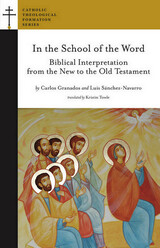 In the School of the Word: Biblical Interpretation from the New to the Old Testament
Carlos Granados
Saint Paul Seminary Press , 2021 Carlos Granados and Luis Sánchez-Navarro propose reading the Bible with Christian faith, not as one approach among many, but as a disposition demanded by the New Testament for proper interpretation of both the Old and the New. Even so, the authors’ faith never leads them to dismiss history or to discard the tools of the historical-critical method. On the contrary, these sciences allow the faithful reader to take a holistic approach to biblical truth. When the reader also takes full account of the ecclesial reality in which the Bible was formed and transmitted, and in which it must be read still today, he or she encounters the word proclaimed by the text. Indeed, the words of Holy Writ ultimately proclaim the Word (Logos), Jesus Christ, in whose Spirit they were written.
This book’s thirteen essays are grouped into three parts. Part I, “The Church, Living Subject of Sacred Scripture,” takes up a foundational theme of the whole book: sacred Scripture calls for a reading within the community of the People of God under the guidance of the Holy Spirit, and the same People constitute the living subject of Scripture. In Part II, “Christ, Exegete of the Fulfillment,” the authors focus on the relationship between the two biblical testaments. They argue that the Christian can both respect and venerate the Old Testament on its own terms, even as they find in Jesus, as presented in the New Testament and encountered in faith, the key for unlocking the Old Testament’s deepest meaning. The third and final part of this book, “The Teaching in Benedict XVI’s Verbum Domini,” examines Pope Benedict XVI’s 2010 post-synodal apostolic exhortation on the word of God in the life and mission of the Church.
The authors’ years of shared prayer, study, conversation, and ministry have led to this coauthored book bearing witness to that ongoing unity that they live as confreres. Not surprisingly, they frequently reference the same theologians, especially Brevard Childs, Paul Beauchamp, SJ, and Pope Benedict XVI.
 In the Shade of the Pine: Artists, Writers, and Trees in America, 1825-1876
Christiana Payne
University of Arkansas Press, 2026 In recent years, there has been a growing recognition of the importance of trees both as allies in the fight against climate change and as sources of emotional well-being. In nineteenth-century America, against a backdrop of accelerating deforestation much like today’s, writers and artists found emotional solace and symbolic meaning in the woods, identifying trees as a civic and spiritual good in need of preservation.
In the Shade of the Pine: Artists, Writers, and Trees in America, 1825–1876 explores the significance of trees in the visual and literary imagination of mid-nineteenth-century America through the work of seven artists and writers: Thomas Cole’s explorations of the Catskills; Albert Bierstadt’s portrayal of the splendid trees of California, including the ancient giant sequoias; the paintings and drawings of Asher Brown Durand and Frederic Edwin Church; the photographs of William James Stillman; and the environmental writings of Susan Fenimore Cooper and Henry David Thoreau.
This richly illustrated volume shows the unique influence the ecology of their land had on the emotional and intellectual landscapes of a generation. In their careful study of the woods—the beauty of trees, their practical importance to human beings and other living creatures, and the power of the forest to confer spiritual and emotional benefits—these artists and writers laid the groundwork for an ecological consciousness that remains vitally relevant today.
 In the Shade of the Shady Tree: Stories of Wheatbelt Australia
John Kinsella
Ohio University Press, 2012 In the Shade of the Shady Tree is a collection of stories set in the Western Australian wheatbelt, a vast grain-growing area that ranges across the southwestern end of the immense Australian interior. Kinsella’s stories offer glimpses into the lives of the people who call this area home, as the reader journeys from just north of the town of Geraldton to the far eastern and southern shires of the region. Cast against a backdrop of indigenous dispossession, settler migration, and the destructive impact of land-clearing and monocultural farming methods, the stories offer moments of connection with the inhabitants, ranging from the matter-of-fact to the bizarre and inexplicable. Something about the nature of the place wrestles with all human interactions and affects their outcomes. The land itself is a dominant character, with dust, gnarled scrubland, and the need for rain underpinning human endeavor. Inflected with both contemporary ideas of short fiction and the “everyman” tradition of Australian storytelling, this collection will introduce many readers to a new landscape and unforgettable characters.
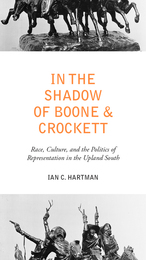 In the Shadow of Boone and Crockett: Race, Culture, and the Politics of Representation in the Upland South
Ian C. Hartman
University of Tennessee Press, 2015 “Well-researched and well argued, provocative and imaginative, In the Shadow of Boone and Crockett examines the image of the “pure” Appalachian Anglo-Saxons who furnished hope for the future, and the less flattering image of the degenerate, poverty-stricken mountaineers with blood on their hands. In a wide-ranging exploration that reaches from Teddy Roosevelt to JFK, Ian C. Hartman examines the idea of Appalachian exceptionalism over time and what that has meant for the region and for America.”
—James C. Klotter, state historian of Kentucky and professor of history, Georgetown College
Extending from the southern Appalachians through the rolling hills of Kentucky and Tennessee to the Ozarks of Arkansas and Missouri, the upland South emerged in American lore as the setting where Daniel Boone, David Crockett, and other rugged frontiersmen forged a modern nation and headed west to become the progenitors of what some viewed as a new and superior “American race.” Others, however, saw this region as the breeding ground of poor, debased whites—the “hillbillies” and “white trash” of popular stereotypes. These conflicting identities have long dominated public discourse about the region, as well as fostered a deep fascination with it.
In this compelling study, part political and part cultural history, Ian C. Hartman probes the late-nineteenth-century context from which this paradox arose and the array of personalities, expressions, and policies that sought to resolve it—or at least make sense of it—in the decades that followed. He begins by investigating the writings of “race theorists” including future president Theodore Roosevelt, whose multivolume The Winning of the West (1889–96) furthered the tale of a heroic and distinctly American stock who, “with axe and rifle,” conquered a continent. Hartman relates these myths to the rise of the early-twentieth-century eugenics movement, which sought to regenerate and purify a once proud but now impoverished and degraded people through policies that included forced sterilization to weed out “imbeciles.” Hartman goes on to showcase the surprising ways in which the contradictory identity of the upland South affected broader national debates about imperialism, crime and punishment, poverty and inequality, and the growth and decline of the postwar welfare state.
Whether considering the racial implications of a 1930s Appalachian folk festival, the stereotypical but often sympathetic portrayals of rural southerners in sitcoms like The Beverly Hillbillies and The Andy Griffith Show, or the shifting perceptions of President Lyndon B. Johnson’s War on Poverty, In the Shadow of Boone and Crockett is a consistently provocative book that invites readers to ponder a fresh a set of ideas about America’s “race history” that have shown remarkable traction for more than a century.
Ian C. Hartman is an assistant professor of history at the University of Alaska Anchorage. His articles and reviews have appeared in the Journal of Southern History, Cultural Studies—Critical Methodologies, Appalachian Journal, and Multicultural America: A Multimedia Encyclopedia, among other publications.
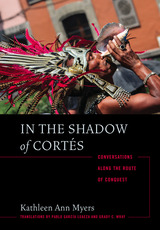 In the Shadow of Cortés: Conversations Along the Route of Conquest
Kathleen Ann Myers
University of Arizona Press, 2015 Five hundred years ago, the army of conquest led by Hernan Cortés marched hundreds of miles across a rugged swath of land from Veracruz on the Mexican Caribbean to the capital city of the Aztecs, now Mexico City. This journey was the catalyst for profound cultural and political change in Mesoamerica. Today, many Mexicans view the Ruta de Cortés as a symbol of an event that forever changed the course of their history. But few U.S. Americans understand how the conquest still affects Mexicans’ national identity and their relationship with the United States.
Following the route of Hernán Cortés, In the Shadow of Cortés offers a visual and cultural history of the legacy of contact between Spaniards and indigenous civilizations. The book is a reflective journey that presents a diversity of voices, images, and ideas about history and conquest. Specialist in Mexican culture Kathleen Ann Myers teams up with prize-winning translators and photographers to offer a unique reading experience that combines accessible interpretative essays with beautifully translated interviews and dozens of historical and contemporary black-and-white and color images, including some by award-winner Steven Raymer. The result offers readers multiple perspectives on these pivotal events as imagined and re-envisioned today by Mexicans both in their homeland and in the United States.
In the Shadow of Cortés offers an extensive visual narrative about conquest and, ultimately, about Mexican history. It traces the symbolic geography of the conquest and shows how the historical memory of colonialism continues to shape lives today.
 In the Shadow of Diagnosis: Psychiatric Power and Queer Life
Regina Kunzel
University of Chicago Press, 2024 A look at the history of psychiatry’s foundational impact on the lives of queer and gender-variant people.
In the mid-twentieth century, American psychiatrists proclaimed homosexuality a mental disorder, one that was treatable and amenable to cure. Drawing on a collection of previously unexamined case files from St. Elizabeths Hospital, In the Shadow of Diagnosis explores the encounter between psychiatry and queer and gender-variant people in the mid- to late-twentieth-century United States. It examines psychiatrists’ investments in understanding homosexuality as a dire psychiatric condition, a judgment that garnered them tremendous power and authority at a time that historians have characterized as psychiatry’s “golden age.” That stigmatizing diagnosis made a deep and lasting impact, too, on queer people, shaping gay life and politics in indelible ways. In the Shadow of Diagnosis helps us understand the adhesive and ongoing connection between queerness and sickness.
 In the Shadow of Diagnosis: Psychiatric Power and Queer Life
Regina Kunzel
University of Chicago Press, 2024 This is an auto-narrated audiobook version of this book.
A look at the history of psychiatry’s foundational impact on the lives of queer and gender-variant people.
In the mid-twentieth century, American psychiatrists proclaimed homosexuality a mental disorder, one that was treatable and amenable to cure. Drawing on a collection of previously unexamined case files from St. Elizabeths Hospital, In the Shadow of Diagnosis explores the encounter between psychiatry and queer and gender-variant people in the mid- to late-twentieth-century United States. It examines psychiatrists’ investments in understanding homosexuality as a dire psychiatric condition, a judgment that garnered them tremendous power and authority at a time that historians have characterized as psychiatry’s “golden age.” That stigmatizing diagnosis made a deep and lasting impact, too, on queer people, shaping gay life and politics in indelible ways. In the Shadow of Diagnosis helps us understand the adhesive and ongoing connection between queerness and sickness.
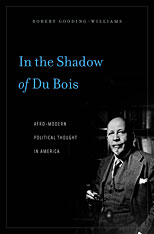 In the Shadow of Du Bois: Afro-Modern Political Thought in America
Robert Gooding-Williams
Harvard University Press, 2011 The Souls of Black Folk is Du Bois’s outstanding contribution to modern political theory. It is his still influential answer to the question, “What kind of politics should African Americans conduct to counter white supremacy?” Here, in a major addition to American studies and the first book-length philosophical treatment of Du Bois’s thought, Robert Gooding-Williams examines the conceptual foundations of Du Bois’s interpretation of black politics.
For Du Bois, writing in a segregated America, a politics capable of countering Jim Crow had to uplift the black masses while heeding the ethos of the black folk: it had to be a politics of modernizing “self-realization” that expressed a collective spiritual identity. Highlighting Du Bois’s adaptations of Gustav Schmoller’s social thought, the German debate over the Geisteswissenschaften, and William Wordsworth’s poetry, Gooding-Williams reconstructs Souls’ defense of this “politics of expressive self-realization,” and then examines it critically, bringing it into dialogue with the picture of African American politics that Frederick Douglass sketches in My Bondage and My Freedom. Through a novel reading of Douglass, Gooding-Williams characterizes the limitations of Du Bois’s thought and questions the authority it still exerts in ongoing debates about black leadership, black identity, and the black underclass. Coming to Bondage and then to these debates by looking backward and then forward from Souls, Gooding-Williams lets Souls serve him as a productive hermeneutical lens for exploring Afro-Modern political thought in America.
 In the Shadow of Empire: Art in Occupied Japan
Alicia Volk
University of Chicago Press, 2025 A pioneering look at an immensely creative period in Japanese art that developed amid the Cold War.
Alicia Volk brings to light a significant body of postwar Japanese art, exploring how it accommodated and resisted the workings of the American empire during the early Cold War. Volk’s groundbreaking account presents the points of view of Japanese artists and their audiences under American occupation and amid the ruins of war. Each chapter reveals how artists embraced new roles for art in the public sphere—at times by enacting radical critiques of established institutions, values, and practices—and situates a range of compelling art objects in their intersecting artistic and political worlds.
Centering on the diverse and divisive terrain of Japanese art between 1945 and 1952, In the Shadow of Empire creates a fluid map of relationality that brings multiple Cold War spheres into dialogue, stretching beyond US-occupied Japan to art from China, Europe, the Soviet Union, and the United States, and demonstrates the rich potential of this transnational site of artmaking for rethinking the history of Japanese and global postwar art.
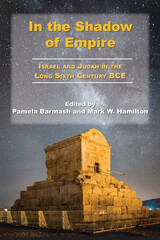 In the Shadow of Empire: Israel and Judah in the Long Sixth Century BCE
Pamela Barmash
SBL Press, 2021 Empires Come and Go, Homelands Never
Readers of the Hebrew Bible know the basic story line: during the early sixth century BCE the Babylonian ruler Nebuchadnezzar sacked Jerusalem, deported a portion of the population to Mesopotamia, and triggered a crisis of faith in the minds of prophets, priests, and liturgists that still echoes through the centuries. Though many Judahites chose to make their way home under Persian imperial control, the straightforward biblical story of exile and return masks many complex issues of evidence and fact. Unlike previous studies that focused narrowly on the Babylonian exile of the Judahite elites, this volume widens the geographical and temporal scope to include the Assyrian, Babylonian, and Persian Empires. Improved access to and understanding of relevant texts, iconography, and material culture provide an opportunity for scholars to reappraise methods of imperial control and the responses of those in exile and under occupation. Contributors Pamela Barmash, Ryan P. Bonfiglio, Caralie Cooke, Lisbeth S. Fried, Martien A. Halvorson-Taylor, Mark W. Hamilton, Matt Waters, and Ian D. Wilson lay a firm foundation for future work on the long sixth century.
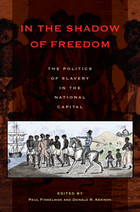 In the Shadow of Freedom: The Politics of Slavery in the National Capital
Paul Finkelman
Ohio University Press, 2011 Few images of early America were more striking, and jarring, than that of slaves in the capital city of the world’s most important free republic. Black slaves served and sustained the legislators, bureaucrats, jurists, cabinet officials, military leaders, and even the presidents who lived and worked there. While slaves quietly kept the nation’s capital running smoothly, lawmakers debated the place of slavery in the nation, the status of slavery in the territories newly acquired from Mexico, and even the legality of the slave trade in itself.
This volume, with essays by some of the most distinguished historians in the nation, explores the twin issues of how slavery made life possible in the District of Columbia and how lawmakers in the district regulated slavery in the nation.
Contributors: David Brion Davis, Mary Beth Corrigan, A. Glenn Crothers, Jonathan Earle, Stanley Harrold, Mitch Kachun, Mary K. Ricks, James B. Stewart, Susan Zaeske, David Zarefsky
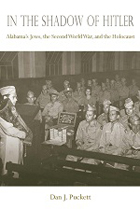 In the Shadow of Hitler: Alabama's Jews, the Second World War, and the Holocaust
Dan J. Puckett
University of Alabama Press, 2014 In the Shadow of Hitler chronicles the experiences of Alabama Jews as they worked to overcome their own divisions in order to aid European Jews before, during, and after the Second World War.
In this extensive study of how southern Jews in the United States responded to the Nazi persecution of European Jews, Dan J. Puckett recounts the divisions between Alabama Jews in the early 1930s. As awareness of the horrors of the Holocaust spread, Jews across Alabama from different backgrounds and from Reform, Conservative, and Orthodox traditions worked to bridge their internal divisions in order to mount efforts to save Jewish lives in Europe. Only by leveraging their collective strength were Alabama’s Jews able to sway the opinions of newspaper editors, Christian groups, and the general public as well as lobby local, state, and national political leaders.
Puckett’s comprehensive analysis is enlivened and illustrated by true stories that will fascinate all readers of southern history. One such story concerns the Altneuschule Torah of Prague and describes how the Nazis, during their brutal occupation of Czechoslovakia, confiscated 1,564 Torahs and sacred Judaic objects from communities throughout Bohemia and Moravia as exhibits in a planned museum to the extinct Jewish race. Recovered after the war by the Czech Memorial Scrolls Trust, the Altneuschule Torah was acquired in 1982 by the Orthodox congregation Ahavas Chesed of Mobile. Ahavas Chesed re-consecrated the scroll as an Alabama memorial to Czech Jews who perished in Nazi death camps.
In the Shadow of Hitler illustrates how Alabama’s Jews, in seeking to influence the national and international well-being of Jews, were changed, emerging from the war period with close cultural and religious cooperation that continues today.
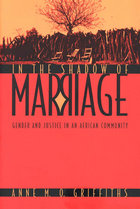 In the Shadow of Marriage: Gender and Justice in an African Community
Anne M. O. Griffiths
University of Chicago Press, 1997 Anne Griffiths originally went to Botswana to establish a university course in family law. But independent fieldwork in Botswana convinced her of the central role of the traditional customary legal system that stands alongside the colonial common law of courts and magistrates she was examining in her course. In the first comparative work on these two systems, Griffiths shows how the structure of both legal institutions is based on power and gender relations that heavily favor males.
Griffiths's analysis is based on careful observation of how people actually experience the law as well as the more standard tools of statutes and cases familiar to Western legal scholars. She explains how women's access to law is determined by social relations over which they have little control. In this powerful feminist critique of law and anthropology, Griffiths shows how law and custom are inseparable for Kwena women. Both colonial common law and customary law pose comparable and constant challenges to Kwena women's attempts to improve their positions in society.
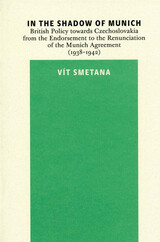 In the Shadow of Munich: British Policy towards Czechoslovakia from the Endorsement to the Renunciation of the Munich Agreement (1938-1942)
Vít Smetana
Karolinum Press, 2008 In September 1938, the major powers of Europe convened in Munich to discuss the future of Czechoslovakia in light of territorial demands made by Adolf Hitler. The ensuing agreement signed by Germany, France, Great Britain, and Italy authorized the German takeover of Czechoslovakia’s Sudetenland. Just four years later, however, the British government declared the Munich Agreement void and thus having no influence whatsoever on the future settlements of this region.
With In the Shadow of Munich, Smetana brings a fresh perspective to an often misunderstood epoch of European history. Drawing on his extensive research in British and Czech government archives, as well as numerous diaries and memoirs from the period, Smetana aims to dispel frequent myths and stereotypes that have long influenced interpretations of British and Czech relations immediately before and during World War II. A unique and provocative work, In the Shadow of Munich is essential for scholars of Slavic, Central, and East European studies.
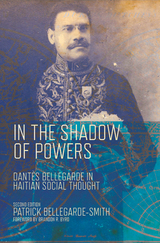 In the Shadow of Powers: Dantes Bellegarde in Haitian Social Thought
Patrick Bellegarde-Smith
Vanderbilt University Press, 2019 Out of a slave rebellion, Haiti was forged as an independent nation. This fact, in and of itself, should have been enough to perpetuate an image of Haitians as strong and agentive people. But leaders of countries on both sides of the Atlantic felt threatened by Haiti's beginnings and were intent on sapping it of resources. More than a century of various restrictions on trade, the imposition of crippling fines, and, eventually, a US occupation followed. Yet even as they suffered economically under these penalties, Haitians persisted, some of them becoming influential actors in the world of global politics.
Throughout much of the twentieth century and even to this day, there has been a dearth of scholarship on the intellectual and political contributions of Haitians. In the Shadow of Powers, first published in 1985, was a corrective to this oversight and remains a foundational text. Bellegarde-Smith traces the history of Haiti through the life and career of his grandfather Dantès Bellegarde, one of Haiti's influential diplomats and preeminent thinkers. As Brandon R. Byrd describes in his foreword to this new edition, "Bellegarde was driven by a subversive, racially inclusive vision of civilized progress. He believed in and continued to push for Haiti to establish an existence for itself, black people, and the colonized world independent of the considerable shadow cast by the world's military, economic, and industrial powers." Scholars and students who want to learn about the intellectual and political foundations of Haiti, its influence on other intellectuals worldwide, and its struggles against imperialism continue to find this to be an invaluable classic.
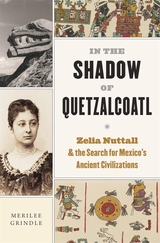 In the Shadow of Quetzalcoatl: Zelia Nuttall and the Search for Mexico’s Ancient Civilizations
Merilee Grindle
Harvard University Press, 2023 A Foreign Affairs Best Book of the Year
"What a woman! And what a fabulous life to unearth. Zelia Nuttall was incredibly smart, determined, a divorced single mother in a man’s world, a great scholar, and an original thinker—yet today she’s completely forgotten. Merilee Grindle has dug deep into the archives and uncovered her fascinating story."—Andrea Wulf, author of The Invention of Nature
"Zelia Nuttall comes alive in all her fascinating contradictions in Merilee Grindle’s capable hands...[This] biography challenges our modern smugness and reminds us that our roots as scholars are more complex than we often acknowledge."—Camilla Townsend, author of Fifth Sun: A New History of the Aztecs
The gripping story of a pioneering anthropologist whose exploration of Aztec cosmology, rediscovery of ancient texts, and passion for collecting helped shape our understanding of pre-Columbian Mexico.
Where do human societies come from? The drive to answer this question took on a new urgency in the nineteenth century, when a generation of archaeologists began to look beyond the bible for the origins of different cultures and civilizations. A child of the San Francisco Gold Rush whose mother was born in Mexico City, Zelia Nuttall threw herself into the study of Aztec customs and cosmology, eager to use the tools of the emerging science of anthropology to prove that modern Mexico was built over the ruins of ancient civilizations.
Proud, disciplined, as prickly as she was independent, Zelia Nuttall was the first person to accurately decode the Aztec calendar stone. An intrepid researcher, she found pre-Columbian texts lost in European archives and was skilled at making sense of their pictographic histories. Her work on the terra-cotta heads of Teotihuacán captured the attention of Frederic Putnam, who offered her a job at Harvard’s Peabody Museum.
Divorced and juggling motherhood and career, Nuttall chose to follow her own star, publishing her discoveries and collecting artifacts for US museums to make ends meet. From her beloved Casa Alvarado in Coyoacán, she became a vital bridge between Mexican and US anthropologists, connecting them against the backdrop of war and revolution.
The first biography of Zelia Nuttall, In the Shadow of Quetzalcoatl captures the appeal and contradictions that riddled the life of this trailblazing woman, who contributed so much to the new field of anthropology until a newly professionalized generation overshadowed her remarkable achievements and she became, in the end, an artifact in her own museum.
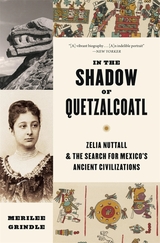 In the Shadow of Quetzalcoatl: Zelia Nuttall and the Search for Mexico’s Ancient Civilizations
Merilee Grindle
Harvard University Press A New Yorker Best Book of the Year
A Foreign Affairs Best Book of the Year
“Grindle’s passionate book, including extensive research in Mexico, will ensure that [Zelia Nuttall] is never forgotten.” —British Museum Magazine
“[A] beautifully crafted biography.” —Foreign Affairs
“What a woman! And what a fabulous life to unearth. Zelia Nuttall was incredibly smart, determined, a divorced single mother in a man’s world, a great scholar, and an original thinker—yet today she’s completely forgotten. Merilee Grindle has dug deep into the archives and uncovered her fascinating story.” —Andrea Wulf, author of The Invention of Nature
The question of human origins took on a new urgency in the nineteenth century, as scholars began to look beyond the Bible to understand how different cultures and civilizations emerged. Zelia Nuttall was among the most accomplished of these scholars. A child of the San Francisco Gold Rush, Nuttall also had roots in Mexico City, where her mother was born. As a young woman, she threw herself into the study of Aztec customs and cosmology, eager to use the emerging sciences of archaeology and anthropology to prove that modern Mexico was built over the ruins of ancients.
Proud, prickly, and independent, Nuttall made the first accurate decoding of the Aztec calendar stone. She found pre-Columbian texts lost in European archives and made sense of their pictographic histories. Her work on the terra-cotta heads of Teotihuacán vaulted her into the highest echelons of her discipline. She was also a single mother who made ends meet by collecting artifacts for US museums. Such trade in sacred artifacts is today rightfully under scrutiny, but in her time, Nuttall was recognized as a vital bridge between Mexican and US anthropologists.
The first biography of Zelia Nuttall, In the Shadow of Quetzalcoatl captures the contributions and contradictions of a trailblazing woman and her intellectual milieu.
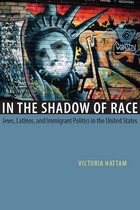 In the Shadow of Race: Jews, Latinos, and Immigrant Politics in the United States
Victoria Hattam
University of Chicago Press, 2007 Race in the United States has long been associated with heredity and inequality while ethnicity has been linked to language and culture. In the Shadow of Race recovers the history of this entrenched distinction and the divisive politics it engenders.
Victoria Hattam locates the origins of ethnicity in the New York Zionist movement of the early 1900s. In a major revision of widely held assumptions, she argues that Jewish activists identified as ethnics not as a means of assimilating and becoming white, but rather as a way of defending immigrant difference as distinct from race—rooted in culture rather than body and blood. Eventually, Hattam shows, the Immigration and Naturalization Service and the Census Bureau institutionalized this distinction by classifying Latinos as an ethnic group and not a race. But immigration and the resulting population shifts of the last half century have created a political opening for reimagining the relationship between immigration and race. How to do so is the question at hand.
In the Shadow of Race concludes by examining the recent New York and Los Angeles elections and the 2006 immigrant rallies across the country to assess the possibilities of forging a more robust alliance between immigrants and African Americans. Such an alliance is needed, Hattam argues, to more effectively redress the persistent inequalities in American life.
 In the Shadow of Russia: Reform in Kazakahstan and Uzbekistan
Pamela Blackmon
Michigan State University Press, 2011 In the twenty years since the dissolution of the Soviet Union, the fifteen new independent republics have embarked on unprecedented transitions from command economies into market-oriented economies.
Important motivating factors for their reform efforts included issues of geographic and economic proximity to Europe and the influence of the pre-Soviet era histories in those countries. In the Shadow of Russia builds upon the conceptual frameworks that include geography and policy choices about economic integration in an analysis of the reform efforts of Kazakhstan and Uzbekistan.
Blackmon's book addresses such central questions as: How and in what areas has a republic's previous level of integration with Soviet-era Russia influenced its present economic orientation? What are the contributing factors that explain the differences in how leaders ( of a similar regime type) developed economic reform policies? To answer these questions, the author utilizes information from both the economic and the political literature on post-communist transitions, as well from political speeches.
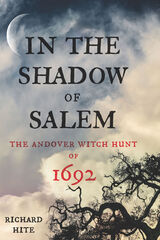 In the Shadow of Salem: The Andover Witch Hunt of 1692
Richard Hite
Westholme Publishing, 2024 The First Complete Account of the Largest Supernatural Crisis in American history, and How Ordinary Citizens Brought It to a Close
By July 1692, the witch hunt surrounding the town of Salem and Salem Village had been raging for four months. The Massachusetts Bay colony’s new governor, William Phips, had established a special court to try the suspected witches and the trials were well under way. No new arrests had taken place for nearly six weeks and residents had every reason to believe the crisis soon would be over. However, a middle-aged woman in nearby Andover lay gravely ill. Her husband suspected witchcraft as the cause and invited some of the afflicted girls from Salem Village to the town, thinking they could determine whether his suspicions were valid. Not surprisingly, they confirmed his supposition. The first person these girls accused in Andover—a frail and elderly widow bereaved by a series of family tragedies over the previous three years—not only confessed, but stated that there were more than three hundred witches in the region, five times more than the number of suspects already in jail. This touched off a new wave of accusations, confessions, and formal charges. Before the witchcraft crisis ended, forty-five residents of Andover found themselves jailed on suspicion of witchcraft—more than the combined total of suspects from Salem Village and the town of Salem. Of these, three were hanged and one died while awaiting execution.
Based on extensive primary source research, In the Shadow of Salem: The Andover Witch Hunt of 1692, by historian and archivist Richard Hite, tells for the first time the fascinating story of this long overlooked phase of the largest witch hunt in American history. Untangling a net of rivalries and ties between families and neighbors, the author explains the actions of the accusers, the reactions of the accused, and their ultimate fates. In the process, he shows how the Andover arrests prompted a large segment of the town’s population to openly oppose the entire witch hunt and how their actions played a crucial role in finally bringing the 1692 witchcraft crisis to a close.
 In the Shadow of Sectarianism: Law, Shiʿism, and the Making of Modern Lebanon
Max Weiss
Harvard University Press, 2010 Contrary to the conventional wisdom that sectarianism is intrinsically linked to violence, bloodshed, or social disharmony, Max Weiss uncovers the complex roots of Shiʿi sectarianism in twentieth-century Lebanon.
The template for conflicted relations between the Lebanese state and Shiʿi society arose under French Mandate rule through a process of gradual transformation, long before the political mobilization of the Shiʿi community under the charismatic Imam Musa al-Sadr and his Movement of the Deprived, and decades before the radicalization linked to Hizballah. Throughout the period, the Shiʿi community was buffeted by crosscutting political, religious, and ideological currents: transnational affiliations versus local concerns; the competing pull of Arab nationalism and Lebanese nationalism; loyalty to Jabal ʿAmil, the cultural heartland of Shiʿi Lebanon; and the modernization of religious and juridical traditions.
Uncoupling the beginnings of modern Shiʿi collective identity from the rise of political Shiʿism, Weiss transforms our understanding of the nature of sectarianism and shows why in Lebanon it has been both so productive and so destructive at the same time.
In the Shadow of Sinai: Stories of Travel and Biblical Research
Anges Smith Lewis
Sussex Academic Press, 2022 IN THE SHADOW OF SINAI: A STORY OF TRAVEL AND RESEARCH FROM 1895-1897 and HOW THE CODEX WAS FOUND: A NARRATIVE OF TWO VISITS TO SINAI: FROM MRS LEWISS JOURNALS, 1892-1893—published here in a new one-volume edition—were originally published in the late 1890s, to great acclaim. They are not only interesting and witty travelogues, but they are also a superb record of the discovery of the Syriac palimpsest, and a narrative of the journeys and adventures surrounding that research. The text describes a very remarkable variant of the reported spoken word of Jesus Christ (Matthew xii: 36), which will be of interest to all Christians and scholars.
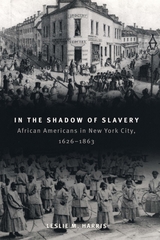 In the Shadow of Slavery: African Americans in New York City, 1626-1863
Leslie M. Harris
University of Chicago Press, 2003 "The black experience in the antebellum South has been thoroughly documented. But histories set in the North are few. In the Shadow of Slavery, then, is a big and ambitious book, one in which insights about race and class in New York City abound. Leslie Harris has masterfully brought more than two centuries of African American history back to life in this illuminating new work."—David Roediger, author of The Wages of Whiteness
In 1991 in lower Manhattan, a team of construction workers made an astonishing discovery. Just two blocks from City Hall, under twenty feet of asphalt, concrete, and rubble, lay the remains of an eighteenth-century "Negro Burial Ground." Closed in 1790 and covered over by roads and buildings throughout the nineteenth and twentieth centuries, the site turned out to be the largest such find in North America, containing the remains of as many as 20,000 African Americans. The graves revealed to New Yorkers and the nation an aspect of American history long hidden: the vast number of enslaved blacks who labored to create our nation's largest city.
In the Shadow of Slavery lays bare this history of African Americans in New York City, starting with the arrival of the first slaves in 1626, moving through the turbulent years before emancipation in 1827, and culminating in one of the most terrifying displays of racism in U.S. history, the New York City Draft Riots of 1863. Drawing on extensive travel accounts, autobiographies, newspapers, literature, and organizational records, Leslie M. Harris extends beyond prior studies of racial discrimination by tracing the undeniable impact of African Americans on class, politics, and community formation and by offering vivid portraits of the lives and aspirations of countless black New Yorkers.
Written with clarity and grace, In the Shadow of Slavery is an ambitious new work that will prove indispensable to historians of the African American experience, as well as anyone interested in the history of New York City.
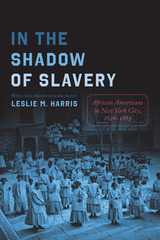 In the Shadow of Slavery: African Americans in New York City, 1626-1863
Leslie M. Harris
University of Chicago Press, 2024 A new edition of a classic work revealing the little-known history of African Americans in New York City before Emancipation.
The popular understanding of the history of slavery in America almost entirely ignores the institution’s extensive reach in the North. But the cities of the North were built by—and became the home of—tens of thousands of enslaved African Americans, many of whom would continue to live there as free people after Emancipation.
In the Shadow of Slavery reveals the history of African Americans in the nation’s largest metropolis, New York City. Leslie M. Harris draws on travel accounts, autobiographies, newspapers, literature, and organizational records to extend prior studies of racial discrimination. She traces the undeniable impact of African Americans on class distinctions, politics, and community formation by offering vivid portraits of the lives and aspirations of countless black New Yorkers. This new edition includes an afterword by the author addressing subsequent research and the ongoing arguments over how slavery and its legacy should be taught, memorialized, and acknowledged by governments.
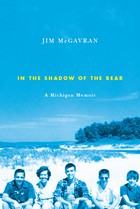 In the Shadow of the Bear: A Michigan Memoir
Jim McGavran
Michigan State University Press, 2010 In the Shadow of the Bear chronicles the author's return, after a forty-year absence, to the site of his childhood summer vacations at Little Glen Lake in northwestern Lower Michigan's Leelanau peninsula.
The ancient Ojibwa legend that gave a name to the area's most striking geographical feature, the Sleeping Bear Sand Dunes, offers a way of understanding his mother's powerful but sometimes restless force of love and ambition in the family, as well as his father's quieter, often self-sacrificing love. Chapters devoted to the return to Leelanau, to each of his parents, and to his father's family culminate in the narrative of his daughter's 2005 Leelanau wedding.
Jim McGavran tells his story of self-discovery in prose that is alternatively frank and lyrical as he recaptures his bewildered yet enchanted boyhood self, filtered through his consciousness of longing and loss, lending the writing a particular poignancy.
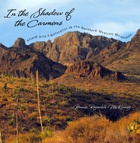 In the Shadow of the Carmens: Afield with a Naturalist in the Northern Mexican Mountains
Bonnie Reynolds McKinney, with foreword by David H. Riskind
Texas Tech University Press, 2012 Just across the Rio Grande from West Texas in the state of Coahuila, México, the mountain ranges of the Maderas del Carmen rise majestically. Often called magical or mystical, they have stirred imagination for centuries. Stories of bandits, Indians, ghosts, incredible flora and fauna, cool forests, waterfalls, and vast woodlands filter across the Rio Grande.Many people have dreamed of exploring this vast ecosystem, but few have made the trip. Bonnie McKinney is among the fortunate. In 2001 McKinney and her husband, Billy Pat McKinney, moved to the Carmens to manage the large conservation project spearheaded by CEMEX, the Monterrey-based cement and building materials conglomerate. Like those before her, she had been enthralled by the massive mountains with their cliffs of purple and gold in the sunset, and by horizon views of high forests. She, too, wondered what treasures the mountains held. Having lived and worked in the Carmens for nearly a decade, McKinney has never been disappointed by these mountains, which never fail to surprise her. In lavish photographs and loving words McKinney takes readers on a fascinating armchair journey, Introduction byducing them to the incredible biodiversity of this jewel of northern México.
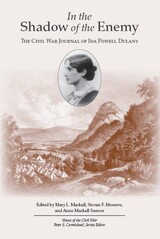 In the Shadow of the Enemy: The Civil War Journal of Ida Powell Dulaney
Mary L. Mackall
University of Tennessee Press, 2010
"In The Shadow Of The Enemy is a welcome and highly recommended addition to personal, academic, and community library American Civil War and 19th Century American Biography collections and supplemental reading lists." —Midwest Book Review
The mistress of a slave-holding estate, Ida Powell Dulany took over control of the extensive family lands once her husband left to fight for the Confederacy. She struggled to manage slaves, maintain contact with her neighbors, and keep up her morale after her region was abandoned by the Confederate government soon after the beginning of hostilities. More than just an elegantly written account of her own day-to-day experiences in the Civil War, Ida’s journal opens a window into the Southern culture of the time.
Stevan F. Meserve has written extensively for several Civil War publications and is the author of The Civil War in Loudoun County, Virginia: A History of Hard Times.
Anne Mackall Sasscer grew up on Selby, a family farm near The Plains, Virginia, the home of Ida Powell Dulany’s youngest daughter.
Mary LeJeune Mackall spent her early years at Blenheim, a pre-Revolutionary farm near Charlottesville, which inspired her lifelong interest in Virginia history.
 In the Shadow of the Epidemic: Being HIV-Negative in the Age of AIDS
Walt Odets
Duke University Press, 1995 For gay men who are HIV-negative in a community devastated by AIDS, survival may be a matter of grief, guilt, anxiety, and isolation. In the Shadow of the Epidemic is a passionate and intimate look at the emotional and psychological impact of AIDS on the lives of the survivors of the epidemic, those who must face on a regular basis the death of friends and, in some cases, the decimation of their communities. Drawing upon his own experience as a clinical psychologist and a decade-long involvement with AIDS/HIV issues, Walt Odets explores the largely unrecognized matters of denial, depression, and identity that mark the experience of uninfected gay men.
Odets calls attention to the dire need to address issues that are affecting HIV-negative individuals—from concerns about sexuality and relations with those who are HIV-positive to universal questions about the nature and meaning of survival in the midst of disease. He argues that such action, while explicitly not directing attention away from the needs of those with AIDS, is essential to the human and biological well-being of gay communities. In the immensely powerful firsthand words of gay men living in a semiprivate holocaust, the need for a broader, compassionate approach to all of the AIDS epidemic’s victims becomes clear. In the Shadow of the Epidemic is a pathbreaking first step toward meeting that need.
 In the Shadow of the Giant: The Americanization of Modern Mexico
Joseph Contreras
Rutgers University Press, 2009 The influx of Mexican immigrants to the United States throughout the years has impacted our culture, labor force, and economy. Often these individuals are blamed for the perceived ills they bring to this country. Yet few people ever consider the profound influence that the United States has on Mexico. In this first book to view modern Mexico in the era of NAFTA and globalization, In the Shadow of the Giant offers insight into the land on our southern border. What we find is a nation that looks more like the United States than even Mexicans themselves could have imagined a decade ago: Rates of obesity are second only to the United States among the world's industrialized countries. Recreational drug use is soaring among young Mexicans, Citigroup owns the largest bank in Mexico Wal-Mart is the country's biggest private employer revealing a vastly different physical and cultural landscape from his days as a young journalist living in Mexico in the mid-1980s. Joseph Contreras tracks the relentless and ongoing Americanization of his ancestral home. Although these changes may seem a natural part of globalization, the country had long prided itself on the social, political, economic, and even spiritual differences that distinguished it from the United States. In addition to embracing our virtues and vices, Contreras argues that our southern neighbor has become a de facto economic colony of the United States. At a time when immigration looms as a leading hot-button issue in American politics, the time is ripe for examining our influences, for better or worse, on our neighbor to the south.
 In the Shadow of the Incarnation: Essays on Jesus Christ in the Early Church in Honor of Brian E. Daley, S.J.
Peter W. Martens
University of Notre Dame Press, 2008
The early centuries of the Christian church are widely regarded as the most decisive and influential for the formation of the church’s convictions about Jesus Christ. The essays in this volume offer readers a fresh orientation, and ground-breaking analyses, of the figure of Jesus in late antiquity. Written by historians and theologians who examine the thought of leading theologians, Latin and Greek, from the second through the seventh centuries, these essays honor and complement the scholarship of Brian E. Daley, Catherine F. Huisking Professor of Theology at the University of Notre Dame.
While most discussions still confine patristic Christology to its conciliar trajectory, this volume broadens our horizons. The essays gathered here explore aspects of early Christology that cannot be narrowly confined to the path marked by the ecumenical councils. The contributors locate Jesus within a rich matrix of relationships: they explore how early Christian theologians connected Jesus Christ to their other doctrinal concerns about God, the gift of salvation, and the eschaton, and they articulate how convictions about Jesus Christ informed numerous practices, including discipleship, martyrdom, scriptural interpretation, and even the practice of thinking well about Christ.
“The rich diversity and wealth of information found in these essays offers an admirable reflection of the wide-ranging and depth of scholarship that has long been associated with Brian Daley's work. Considering the scope of participants in this collection; from accomplished peers to recent Ph.D. graduates, the book bears witness to the degree Fr. Daley has influenced and shaped generations of scholars. As such, this collection succeeds in honoring a man of faith who is certainly worthy of such an honor.” —Daniel H. Williams, Baylor University
“The essays in this volume all address in differing ways themes that arise out of the classical Christological tradition of the early Church. For a collection of essays the material is unusually well focused and the volume will make a fresh contribution to the current state of patristic scholarship on early Christian thinking about the person and work of Christ.” —Robert Louis Wilken, William R. Kenan, Jr., Professor of the History of Christianity, University of Virginia
“Jesus’ question to his disciples, ‘Who do you say I am?’ is the starting point of all Christian theology. In this splendid volume, more than a dozen distinguished scholars encounter that question again, in many and varied ways. Together, they provide fresh insights on the person of Jesus Christ as they reflect on the thought of the Fathers of the Church from contemporary perspectives.” —Joseph T. Lienhard, S.J., Fordham University
“Brian Daley belongs in the front rank of patristic scholars in the United States. It is fitting, therefore, that he be honored with this collection of essays, centering on his long-standing central concern with Christology. These essays nuance the Christological thought of key documents and figures from the second to the seventh century. They deal with not just the ontological nature of Christ but also general aspects of the faith in Christ as connected with other Christian doctrines. The distinguished list of contributors testifies to the influence of and esteem for Brian Daley. The volume is a worthy tribute to a premier patristic scholar.” —Everett Ferguson, Abilene Christian University
 In the Shadow of the Magic Mountain: The Erika and Klaus Mann Story
Andrea Weiss
University of Chicago Press, 2008 A biography of Thomas Mann's two eldest children that provides intriguing insight into both their lives and the political and cultural shifts at the same time.
Thomas Mann’s two eldest children, Erika and Klaus, were unconventional, rebellious, and fiercely devoted to each other. Empowered by their close bond, they espoused vehemently anti-Nazi views in a Europe swept up in fascism and were openly, even defiantly, gay in an age of secrecy and repression. Although their father’s fame has unfairly overshadowed their legacy, Erika and Klaus were serious authors, performance artists before the medium existed, and political visionaries whose searing essays and lectures are still relevant today. And, as Andrea Weiss reveals in this dual biography, their story offers a fascinating view of the literary and intellectual life, political turmoil, and shifting sexual mores of their times.
In the Shadow of the Magic Mountain begins with an account of the make-believe world the Manns created together as children—an early sign of their talents as well as the intensity of their relationship. Weiss documents the lifelong artistic collaboration that followed, showing how, as the Nazis took power, Erika and Klaus infused their work with a shared sense of political commitment. Their views earned them exile, and after escaping Germany they eventually moved to the United States, where both served as members of the U.S. armed forces. Abroad, they enjoyed a wide circle of famous friends, including Andre Gide, Christopher Isherwood, Jean Cocteau, and W. H. Auden, whom Erika married in 1935. But the demands of life in exile, Klaus’s heroin addiction, and Erika’s new allegiance to their father strained their mutual devotion, and in 1949 Klaus committed suicide.
Beautiful never-before-seen photographs illustrate Weiss’s riveting tale of two brave nonconformists whose dramatic lives open up new perspectives on the history of the twentieth century.
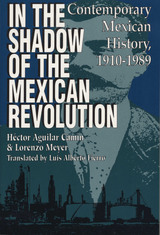 In the Shadow of the Mexican Revolution: Contemporary Mexican History, 1910–1989
By Héctor Aguilar Camín and Lorenzo Meyer
University of Texas Press, 1993 Héctor Aguilar Camín and Lorenzo Meyer, two of Mexico's leading intellectuals, set out to fill a void in the literature on Mexican history: the lack of a single text to cover the history of contemporary Mexico during the twentieth century. A la sombra de la Revolución Mexicana, now available in English as In the Shadow of the Mexican Revolution, covers the Mexican Revolution itself, the gradual consolidation of institutions, the Cárdenas regime, the "Mexican economic miracle" and its subsequent collapse, and the recent transition toward a new historical period. The authors offer a comprehensive and authoritative study of Mexico's turbulent recent history, a history that increasingly intertwines with that of the United States. Given the level of interest in Mexico—likely to increase still more as a result of the recent liberalization of trade policies—this volume will be useful in affording U.S. readers an intelligent, comprehensive, and accessible study of their neighbor to the south.
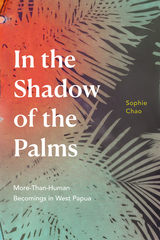 In the Shadow of the Palms: More-Than-Human Becomings in West Papua
Sophie Chao
Duke University Press, 2022 With In the Shadow of the Palms, Sophie Chao examines the multispecies entanglements of oil palm plantations in West Papua, Indonesia, showing how Indigenous Marind communities understand and navigate the social, political, and environmental demands of the oil palm plant. As Chao notes, it is no secret that the palm oil sector has destructive environmental impacts: it greatly contributes to tropical deforestation and is a major driver of global warming. Situating the plant and the transformations it has brought within the context of West Papua’s volatile history of colonization, ethnic domination, and capitalist incursion, Chao traces how Marind attribute environmental destruction not just to humans, technologies, and capitalism but also to the volition and actions of the oil palm plant itself. By approaching cash crops as both drivers of destruction and subjects of human exploitation, Chao rethinks capitalist violence as a multispecies act. In the process, Chao centers how Marind fashion their own changing worlds and foreground Indigenous creativity and decolonial approaches to anthropology.
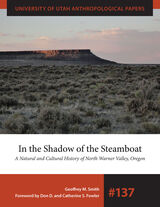 In the Shadow of the Steamboat: A Natural and Cultural History of North Warner Valley, Oregon
Geoffrey M. Smith
University of Utah Press, 2022 This volume tracks 13,000 years of environmental and cultural change in North Warner Valley, part of the Oregon Desert that has largely escaped researchers’ attention. The authors present a decade of fieldwork and laboratory analyses that reveals a record of human activity that waxed and waned with local and regional environmental and social change. Open-air sites, lithic technology, plant and animal foods, and bone and shell objects—most from a stratified rockshelter record that spans almost ten millennia—tell a story of people who visited North Warner Valley periodically to collect marsh plants, rabbits, and other resources.
Smith and colleagues present their work in a way that allows readers to understand not only how people adapted to local change but also how North Warner Valley fits into the complex mosaic of precontact history in the American West. This research is the most comprehensive work conducted in the northern Great Basin in more than two decades. Its multidisciplinary nature should interest students of natural and cultural history, archaeology, and Indigenous lifeways.
In The Shadow Of The Strip: Las Vegas Stories
Richard Logsdon
University of Nevada Press, 2003 Las Vegas holds a unique place in the popular imagination and in the work of any number of contemporary writers of fiction. The fourteen stories in this anthology explore the multifarious personalities of America’s “Sin City” through the experiences of the dreamers and gamblers, the losers and the lost, who inhabit Las Vegas and confront its myriad attractions and disappointments.
In the Shadow of the Swastika
Hermann Wygoda
University of Illinois Press, 1998 He was known first as a Warsaw ghetto smuggler, then as Comandante Enrico. He traveled under false identity papers and worked at a German border patrol station. Throughout the years of the Holocaust, Hermann Wygoda lived a life of narrow escapes, daring masquerades, and battles that almost defy reason. Unique among Holocaust memoirs, In the Shadow of the Swastika, now in paperback, celebrates the memory of a man who received decorations from three Western powers and who, years later, was honored posthumously by the Italian city he helped to liberate.
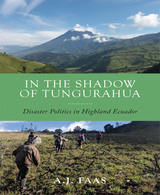 In the Shadow of Tungurahua: Disaster Politics in Highland Ecuador
A.J. Faas
Rutgers University Press, 2023 In the Shadow of Tungurahua relates the stories of the people of Penipe, Ecuador living in and between several villages around the volcano Tungurahua and two resettlement communities built for people displaced by government operations following volcanic eruptions in 1999 and 2006. The stories take shape in ways that influence prevailing ideas about how disasters are produced and reproduced, in this case by shifting assemblages of the state first formed during Spanish colonialism attempting to settle (make “legible”) and govern Indigenous and campesino populations and places. The disasters unfolding around Tungurahua at the turn of the 21st century also provide lessons in the humanitarian politics of disaster—questions of deservingness, reproducing inequality, and the reproduction of bare life. But this is also a story of how people responded to confront hardships and craft new futures, about forms of cooperation to cope with and adapt to disaster, and the potential for locally derived disaster recovery projects and politics.
In the Shadow of Violence: The Politics of Armed Groups
Klaus Schlichte
Campus Verlag, 2009 As civil wars and insurgencies rage around the globe, Klaus Schlichte’s In the Shadow of Violence addresses a crucial question: why do some groups succeed in violently seizing and holding power while others fail? What makes for a successful non-state armed force? Arguing that success rests on the ability of these groups to transform the power of violence into legitimate domination, both inside their ranks and in the larger society, Schlichte explores the techniques and strategies they employ—and the long shadow of violence they must overcome along the way.
In the Shadow's Light
Yves Bonnefoy
University of Chicago Press, 1991 This bilingual edition of the contemporary master's fifth work, Ce qui fut sans lumi, re, will delight, engage, and stir all lovers of poetry. Included here is an extensive new interview with the poet in English translation.
"Included here is a very helpful and touchingly personal interview with the poet. . . . For readers with no prior knowledge of Bonnefoy's work, this volume would be an excellent place to start."—Stephen Romer, Times Literary Supplement
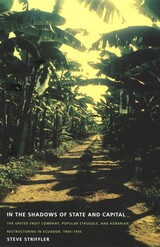 In the Shadows of State and Capital: The United Fruit Company, Popular Struggle, and Agrarian Restructuring in Ecuador, 1900–1995
Steve Striffler
Duke University Press, 2002 Winner of the 2001 President’s Award of the Social Science History Association
In the Shadows of State and Capital tells the story of how Ecuadorian peasants gained, and then lost, control of the banana industry. Providing an ethnographic history of the emergence of subcontracting within Latin American agriculture and of the central role played by class conflict in this process, Steve Striffler looks at the quintessential form of twentieth-century U.S. imperialism in the region—the banana industry and, in particular, the United Fruit Company (Chiquita). He argues that, even within this highly stratified industry, popular struggle has contributed greatly to processes of capitalist transformation and historical change.
Striffler traces the entrance of United Fruit into Ecuador during the 1930s, its worker-induced departure in the 1960s, the troubled process through which contract farming emerged during the last half of the twentieth century, and the continuing struggles of those involved. To explore the influence of both peasant activism and state power on the withdrawal of multinational corporations from banana production, Striffler draws on state and popular archives, United Fruit documents, and extensive oral testimony from workers, peasants, political activists, plantation owners, United Fruit administrators, and state bureaucrats. Through an innovative melding of history and anthropology, he demonstrates that, although peasant-workers helped dismantle the foreign-owned plantation, they were unable to determine the broad contours through which the subsequent system of production—contract farming—emerged and transformed agrarian landscapes throughout Latin America.
By revealing the banana industry’s impact on processes of state formation in Latin America, In the Shadows of State and Capital will interest historians, anthropologists, and political scientists, as well as scholars of globalization and agrarian studies.
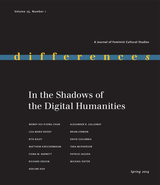 In the Shadows of the Digital Humanities, Volume 25
Elizabeth Weed and Ellen Rooney
Duke University Press The technological and intellectual impact of the digital humanities on the university is undeniable. Even as some observers hail the digital humanities as a savior of humanistic disciplines in crisis, critical questions about its nature and potential remain unanswered. The contributors to this special issue explicitly critique and engage the digital humanities, rather than simply celebrating the still-emerging field. This collection brings together scholars from the center of digital humanities initiatives and from the closely related fields of new media and software studies, among others, to interrogate some of the assumptions and elisions at play in previous discussions of the digital humanities and assess their impact on the humanities and the university at large. Topics include the national security state; games and “gamification”; the funding crisis in higher education and MOOCs; and issues of race, gender, and class marginalization in digital humanities research.
Contributors: Fiona M. Barnett, Wendy Hui Kyong Chun, Michael Dieter, Alexander R. Galloway, David Golumbia, Richard Grusin, Patrick Jagoda, Matthew Kirschenbaum, Adeline Koh, Brian Lennon, Tara McPherson, Rita Raley, Lisa Marie Rhody
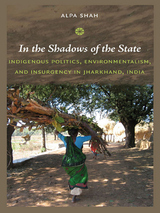 In the Shadows of the State: Indigenous Politics, Environmentalism, and Insurgency in Jharkhand, India
Alpa Shah
Duke University Press, 2010 In the Shadows of the State suggests that well-meaning indigenous rights and development claims and interventions may misrepresent and hurt the very people they intend to help. It is a powerful critique based on extensive ethnographic research in Jharkhand, a state in eastern India officially created in 2000. While the realization of an independent Jharkhand was the culmination of many years of local, regional, and transnational activism for the rights of the region’s culturally autonomous indigenous people, Alpa Shah argues that the activism unintentionally further marginalized the region’s poorest people. Drawing on a decade of ethnographic research in Jharkhand, she follows the everyday lives of some of the poorest villagers as they chase away protected wild elephants, try to cut down the forests they allegedly live in harmony with, maintain a healthy skepticism about the revival of the indigenous governance system, and seek to avoid the initial spread of an armed revolution of Maoist guerrillas who claim to represent them. Juxtaposing these experiences with the accounts of the village elites and the rhetoric of the urban indigenous-rights activists, Shah reveals a class dimension to the indigenous-rights movement, one easily lost in the cultural-based identity politics that the movement produces. In the Shadows of the State brings together ethnographic and theoretical analyses to show that the local use of global discourses of indigeneity often reinforces a class system that harms the poorest people.
In the Sierra Madre
Jeff Biggers
University of Illinois Press, 2006 A stunning history of legendary treasure seekers and enigmatic natives in Mexico's Copper Canyon Based on his one-year sojourn in Copper Canyon among the Raramuri/Tarahumara, award-winning journalist Jeff Biggers offers a rare look into the ways of the most resilient indigenous culture in the Americas, the exploits of Mexican mountaineers, and the fascinating parade of argonauts and accidental travelers who have journeyed into the Sierra Madre over centuries. From African explorers, Bohemian friars, Confederate and Irish war deserters, French poets, Boer and Russian commandos, Apache and Mennonite communities, bewildered archaeologists, addled writers, and legendary characters including Antonin Artaud, Henry Flipper, B. Traven, Sergei Eisenstein, George Patton, Geronimo, and Pancho Villa, Biggers uncovers the remarkable treasures of the Sierra Madre.
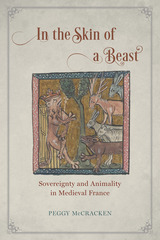 In the Skin of a Beast: Sovereignty and Animality in Medieval France
Peggy McCracken
University of Chicago Press, 2017 In medieval literature, when humans and animals meet—whether as friends or foes—issues of mastery and submission are often at stake. In the Skin of a Beast shows how the concept of sovereignty comes to the fore in such narratives, reflecting larger concerns about relations of authority and dominion at play in both human-animal and human-human interactions.
Peggy McCracken discusses a range of literary texts and images from medieval France, including romances in which animal skins appear in symbolic displays of power, fictional explorations of the wolf’s desire for human domestication, and tales of women and snakes converging in a representation of territorial claims and noble status. These works reveal that the qualities traditionally used to define sovereignty—lineage and gender among them—are in fact mobile and contingent. In medieval literary texts, as McCracken demonstrates, human dominion over animals is a disputed model for sovereign relations among people: it justifies exploitation even as it mandates protection and care, and it depends on reiterations of human-animal difference that paradoxically expose the tenuous nature of human exceptionalism.
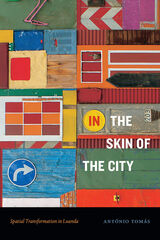 In the Skin of the City: Spatial Transformation in Luanda
António Tomás
Duke University Press, 2022 With In the Skin of the City, António Tomás traces the history and transformation of Luanda, Angola, the nation’s capital as well as one of the oldest settlements founded by the European colonial powers in the Southern Hemisphere. Drawing on ethnographic and archival research alongside his own experiences growing up in Luanda, Tomás shows how the city’s physical and social boundaries—its skin—constitute porous and shifting interfaces between center and margins, settler and Native, enslaver and enslaved, formal and informal, and the powerful and the powerless. He focuses on Luanda’s “asphalt frontier”—the (colonial) line between the planned urban center and the ad hoc shantytowns that surround it—and the ways squatters are central to Luanda’s historical urban process. In their relationship with the state and their struggle to gain rights to the city, squatters embody the process of negotiating Luanda’s divisions and the sociopolitical forces that shape them. By illustrating how Luanda emerges out of the continual redefinition of its skin, Tomás offers new ways to understand the logic of urbanization in cities across the global South.
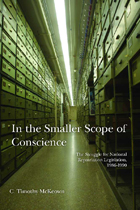 In the Smaller Scope of Conscience: The Struggle for National Repatriation Legislation, 1986–1990
C. Timothy McKeown
University of Arizona Press, 2014 In 1989, The National Museum of the American Indian Act (NMAIA) was successfully passed after a long and intense struggle. One year later, the Native American Graves Protection and Repatriation Act (NAGPRA) followed. These federal repatriation statutes—arguably some of the most important laws in the history of anthropology, museology, and American Indian rights—enabled Native Americans to reclaim human remains, funerary objects, sacred objects, and objects of cultural patrimony.
Twenty years later, the controversy instigated by the creation of NMAIA and NAGPRA continues to simmer. In the Smaller Scope of Conscience is a thoughtful and detailed study of the ins and outs of the four-year process behind these laws. It is a singular contribution to the history of these issues, with the potential to help mediate the ongoing debate by encouraging all sides to retrace the steps of the legislators responsible for the acts.
Few works are as detailed as McKeown’s account, which looks into bills that came prior to NMAIA and NAGPRA and combs the legislative history for relevant reports and correspondence. Testimonies, documents, and interviews from the primary players of this legislative process are cited to offer insights into the drafting and political processes that shaped NMAIA and NAGPRA.
Above all else, this landmark work distinguishes itself from earlier legislative histories with the quality of its analysis. Invested and yet evenhanded in his narrative, McKeown ensures that this journey through history—through the strategies and struggles of different actors to effect change through federal legislation—is not only accurate but eminently intriguing.
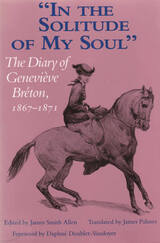 In the Solitude of My Soul: The Diary of Genevieve Breton, 1867-1871
James Smith Allen
Southern Illinois University Press, 1994
Originally published to glowing reviews and literary prizes in France in 1985, this revealing diary not only recounts the moving and tragic relationship of its author, Geneviève Bréton, with the rising young nineteenth-century artist Henri Regnault, it also serves as a valuable historical document concerning the social, cultural, and political life of the French Second Empire.
The young Geneviève Bréton began her journal in 1867 as a consolation for the death of her eldest brother, Antoine. She met Regnault soon after on a trip to Rome. Throughout the next four years of their relationship, Bréton eloquently describes the personal, cultural, and political turbulence that affected her life. Writing against the backdrop of France’s fateful conflict with Prussia and the hardships and dangers of the siege of Paris and the Commune, Bréton, with innate candor and lyricism, creates a text that beautifully illuminates French art, literature, family life, society, and politics of the time. Her poignant account of her love for and engagement to Regnault reveals special insight into the life and mind of an extraordinary, though little known, literary talent. At Regnault’s death in 1871 during the Franco–Prussian War, the expression of her anguish is as much testimony to the political and cultural disorder of the time as it is to her own personal tragedy.
Following Bréton’s own instructions that she left before her death in 1918, this English version of the diary reincorporates material that was deleted from the French edition. Graced by rare photographs of the Bréton family as well as Regnault’s paintings, the book contains a touching foreword by the author’s granddaughter, Daphné Doublet-Vaudoyer. In its first English translation, it is a book for lovers of French life and culture, as well as students of French history; literature, and art.
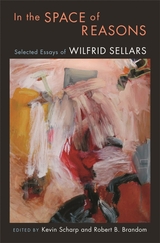 In the Space of Reasons: Selected Essays of Wilfrid Sellars
Wilfrid Sellars
Harvard University Press, 2007 Wilfrid Sellars (1912-1989) was, in the opinion of many, the most important American philosopher of the second half of the twentieth century. He was, Richard Rorty writes, "as original a mind as C. S. Peirce, and it has taken almost as long for the importance of his ideas to be appreciated." This collection, coedited by Sellars's chief interpreter and intellectual heir, should do much to elucidate and clearly establish the significance of this difficult thinker's vision for contemporary philosophy.
The volume presents the most readable of Sellars's essays in a sequence that illuminates what Robert Brandom calls the "inferentialist" conception of meaning at the heart of his work. This conception, laid out in the early essays, is deployed in various epistemological contexts throughout the book so that, upon arriving at the concluding papers on Kant, the reader has been given a tour d'horizon not only of the central topics of philosophy of mind and language, but of much of the history of philosophy as well--and, with this, a sense of what a shifting of analytic philosophy from its Humean into its Kantian stage would entail.
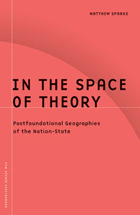 In the Space of Theory: Postfoundational Geographies of the Nation-State
Matthew Sparke
University of Minnesota Press, 2005 How is the meaning of the hyphen in “nation-state” changing in the context of globalization and proliferating political struggles? How can we investigate the transformation of the nation-state by marking the normally unmarked hyphen in “geo-graphy”? Debunking deterritorialization both as a discourse and as an antiessentialist abstraction, Matthew Sparke offers answers to these questions by examining the contemporary geographies of the United States and Canada.
In the Space of Theory details the territorial implications of the Iraq war, NAFTA, welfare reform, constitutional reform, cross-border regional development, and the legal battles of First Nations. In using antiessentialist arguments to elucidate the complexity of these developments, Sparke seeks to ground and critique postfoundational theory itself. He shows how the postfoundational arguments of Homi Bhabha, Arjun Appadurai, Timothy Mitchell, Ernesto Laclau, Chantal Mouffe, Michael Hardt, and Antonio Negri obscure politically important processes of reterritorialization at the same time they deterritorialize diverse theoretical assumptions about the nation-state. Engaged with theory and grounded in close study of cultural, political, and economic change, In the Space of Theory explores the geographies of struggle that at once underlie and undermine the hyphen in contemporary nation-states.
Matthew Sparke is associate professor of geography and international studies at the University of Washington.
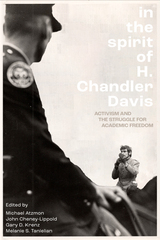 In the Spirit of H. Chandler Davis: Activism and the Struggle for Academic Freedom
Edited by Michael Atzmon, John Cheney-Lippold , Gary D. Krenz, and Melanie S. Tanielian
Disobedience Press, 2026 The essays collected in this book honor H. Chandler Davis (1926-2022), a University of Michigan faculty member who became a symbol of principled dissent when suspended and fired in 1954 for refusing to testify about his political affiliations to the House Un-American Activities Committee. Invoking academic freedom and First Amendment protection, Davis was convicted of contempt of Congress. He served six months in prison before moving to Canada, where he established himself as a brilliant mathematician, prolific writer, and ardent and much beloved advocate for justice. At a time when a new McCarthyism has come roaring back to threaten free inquiry everywhere, the 12 contributors to this book argue against censorship, the suppression of protest, the policed and surveilled campus, the self-silencing of "institutional neutrality," and other enemies of academic freedom. Also included in this volume is posthumously published work by Davis and by his late wife, the historian Natalie Zemon Davis, which reflects on the importance of facing, and not accepting, authoritarian threats.
Inspired by Chandler Davis’ courage, integrity, and devotion to the struggle against oppression, injustice, and the persecution of speech, these essays offer crucial insights into the importance of defending intellectual independence, institutional autonomy, and the right to free expression.
 In the Spirit of Wetlands: Reviving Habitat in the Illinois River Watershed
Text by Clare Howard. Photographs by David Zalaznik
University of Illinois Press, 2022 Individuals from all walks of life have devoted their time, energy, and money to restoring the state's lost wetlands. Clare Howard and David Zalaznik take readers into the marshes, bogs, waterways, and swamps brought back to life by these wetland pioneers. Howard’s storytelling introduces grassroots conservators dedicated to learning through trial and error, persistence, and listening to the lessons taught by wetlands. They undertake hard work inspired by ever-increasing floods and nutrient runoff, and they reconnect the Earth’s natural rhythms. Zalaznik's stunning black and white photos illuminate changes in the land and the people themselves. Seeds sprout after lying dormant for one hundred years. Water winds through ancient channels. Animals and native plants return. As the forgiving spirit of a wetland emerges, it nurtures a renewed landscape that alters our view of the environment and the planet. An inspiring document of passion and advocacy, In the Spirit of Wetlands reveals the transformative power of restoration.
 In the Street: Chalk Drawings and Messages, New York City, 1938-1948
Helen Levitt
Duke University Press, 1987 “All over the city on streets and walks and walls the children . . . have established ancient, essential and ephemeral forms of art, have set forth in chalk and crayon the names and images of their pride, love, preying, scorn, desire. . . . The Lady in this House is Nuts. . . . Lois I have gone up the street. Don’t forget to bring your skates. . . . Ruby loves Max but Max hates Ruby. . . . And drawings, all over, of . . . ships, homes . . . western heroes . . . and monsters . . . which each strong shower effaces.”
So wrote James Agee in 1939. He shared this fascination with children’s street drawings and messages with his friend Helen Levitt. Here now are over one hundred of her photographs, made in the years between 1938 and 1948. Most of these pictures have never before been published. They have been selected and arranged by the photographer and carefully reproduced.
Robert Coles has written especially for this book an essay on the imaginative live of children and of a time when “. . . children still had some visual independence, some keen-eyed interest in laying pictorial claim to the world around them. . . . I have not seen scenes such as Helen Levitt offers in my wanderings through America’s city streets twenty and thirty and forty years after these were taken. They offer, then, a look backward—though they are also timeless in certain aspects. For children will never really stop being tempted by their imaginative faculties to show and tell—to let others see what they find themselves conceiving in thought and fantasy and dream.”
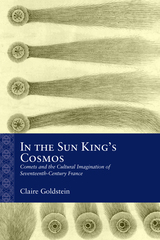 In the Sun King's Cosmos: Comets and the Cultural Imagination of Seventeenth-Century France
Claire Goldstein
Northwestern University Press, 2025 Offering a new history of a formative cultural and political era through the cosmic phenomena that captured the public’s imagination In the winters of 1664–65 and 1680–81, the French public was galvanized by two bright comets whose elliptical orbits could not be mapped with contemporary geometry and that thus seemed to appear in random and unpredictable locations. Bookending the period during which Louis XIV’s sun king mythology was created, these comets defied the heliocentric order to which French politics and culture aspired. As Claire Goldstein demonstrates, literary texts, cultural institutions, and architecture inspired by comets offer a different perspective on the relationship between sensory experience, ideology, and artistic form. In the Sun King’s Cosmos: Comets and the Cultural Imagination of Seventeenth-Century France presents an alternative view of a formative era in cultural and political history, when distinctly modern forms of power and control were established through a regime of the spectacular. Goldstein shows how comets allow us to see the seventeenth century in ways that complicate the narrative of a race toward rationalization, classicism, and modernity, indexing instead a messy period in which the spectacular was sometimes also inscrutable.
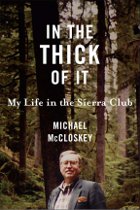 In the Thick of It: My Life in the Sierra Club
Michael McCloskey
Island Press, 2005 In an age when many of the major environmental policies established over the past four decades are under siege, Michael McCloskey reminds us of better days. . .days when conservation initiatives were seen not as political lightning rods, but as opportunities to cope with disturbing threats to the quality of our environment. In 1961, a young let's-get-it-done McCloskey was hired as the Sierra Club's first field representative for the Northwest. From there, for nearly forty years, he rose to guide the oldest and most powerful environmental organization in the world. He helped to pave the way for the original Wilderness Act in 1964, and as the club's conservation director worked to see it implemented. He successfully lobbied for the creation of new national parks and wilderness areas, the North Cascades and Redwood National Park among them. As executive director, he was present at the creation of Earthday in 1970, directed lobbying for the enactment of over one hundred environmental laws, and watched Sierra Club membership rise from about 70,000 to more than 500,000. In the nineties, he led the Sierra Club in mounting fights against attempts to undercut EPA regulations and against trade agreements that curtailed environmental programs. His tenure was no walk in the park or smooth glide across a placid mountain lake. The large and very public Sierra Club was fraught with brush fires, seismic tremors, and pitched battles, both within and without. He survived the ouster of his mentor, the charismatic but controversial David Brower, succeeding him as the second executive director in the club's history, and put the Sierra Club back on firm financial footing. Under less than ideal political circumstances, McCloskey helped to keep the environmental agenda moving steadily forward, even in the face of Ronald Reagan's virulently pro-development Interior Secretary James Watt (whom he was instrumental in expelling from office). In the Thick of It describes not only McCloskey's life as an environmental activist; it reveals the inner workings and politics of one of the nation's most influential environmental nonprofit organizations during an era of ground-breaking environmental legislation. In addition to sharing the details of battles exhilaratingly won and disappointingly lost on the environmental front, he demonstrates how it is indeed possible to turn idealism and hope into practical action that can make an impact at the national level. With this book McCloskey offers not only invaluable insight into the past, but also inspiration to carry into the future.
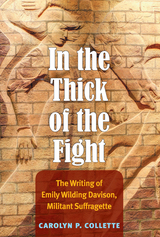 In the Thick of the Fight: The Writing of Emily Wilding Davison, Militant Suffragette
Carolyn P. Collette
University of Michigan Press, 2013 One of the most memorable images of the British women’s suffrage movement occurred on June 4, Derby Day, 1913. As the field of horses approached a turning at Epsom, militant suffragette Emily Wilding Davison ducked out from under the railing and ran onto the track, reaching for the bridle of the King’s horse, and was killed in the collision. While her death transformed her into a heroine, it all but erased her identity. To identify what impelled Davison to suffer multiple imprisonments, to experience the torture of force-feedings and the insults of hostile members of the crowds who came to hear her speak, Carolyn P. Collette explores a largely ignored source—the writing to which Davison dedicated so much time and effort during the years from 1908 to 1913. Davison’s writing is an implicit apologia for why she lived the life of a militant suffragette and where she continually revisits and restates the principles that guided her: that woman suffrage was necessary to improve the lives of men, women, and children; that the freedom and justice women sought was sanctioned by God and unjustly withheld by humans whose opposition constituted a tyranny that had to be opposed; and that the evolution of human progress demanded that women become fully equal citizens of their nation in every respect— politically, economically, and culturally. In the Thick of the Fight makes available for the first time the archive of published and unpublished writings of Emily Wilding Davison. Collette reorients both scholarly and public attention away from a single, defining event to the complexity of Davison’s contributions to modern feminist discourse, giving the reader a sense of the vibrancy and diversity of Davison’s suffrage writings.
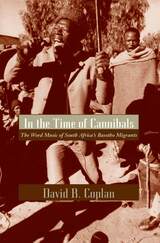 In the Time of Cannibals: The Word Music of South Africa's Basotho Migrants
David B. Coplan
University of Chicago Press, 1994 The workers who migrate from Lesotho to the mines and cities of neighboring South Africa have developed a rich genre of sung oral poetry—word music—that focuses on the experiences of migrant life. This music provides a culturally reflexive and consciously artistic account of what it is to be a migrant or part of a migrant's life. It reveals the relationship between these Basotho workers and the local and South African powers that be, the "cannibals" who live off of the workers' labor. David Coplan presents a moving collection of material that for the first time reveals the expressive genius of these tenacious but disenfranchised people.
Coplan discusses every aspect of the Basotho musical literature, taking into account historical conditions, political dynamics, and social forces as well as the styles, artistry, and occasions of performance. He engages the postmodern challenge to decolonize our representation of the ethnographic subject and demonstrates how performance formulates local knowledge and communicates its shared understandings.
Complete with transcriptions of full male and female performances, this book develops a theoretical and methodological framework crucial to anyone seeking to understand the relationship between orality and literacy in the context of performance. This work is an important contribution to South African studies, to ethnomusicology and anthropology, and to performance studies in general.
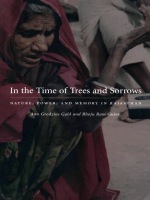 In the Time of Trees and Sorrows: Nature, Power, and Memory in Rajasthan
Ann Grodzins Gold and Bhoju Ram Gujar
Duke University Press, 2002 In the Time of Trees and Sorrows showcases peasants’ memories of everyday life in North India under royal rule and their musings on the contrast between the old days and the unprecedented shifts that a half century of Indian Independence has wrought. It is an oral history of the former Kingdom of Sawar in the modern state of Rajasthan as it was from the 1930s to the 1950s.
Based on testimonies from the 1990s, this book stands as a polyvocal account of the radical political and environmental changes the region and its people have faced in the twentieth century. Not just the story of modernity from the perspective of a rural village, these interviews and author commentaries narrate this small rural community’s relatively sudden transformation from subjection to a local despot and to a remote colonial power to citizenship in a modern postcolonial democracy. Unlike other recent studies of Rajasthan, the current study gives voice exclusively to former subjects who endured the double oppression of colonial and regional rulers. Gold and Gujar thus place subjective subaltern experiences of daily routines, manifestations of power relations, and sweeping changes to the environment (after the fall of kings) that turned lush forests into a barren landscape on equal footing with historical “fact” and archival sources. Ambiguous, complex, and culturally laden as it is in Western thought, the concept of nature is queried in this ethnographic text. For persons in Sawar the environment is not only a means of sustenance, its deterioration is linked to human morality and to power, both royal and divine. The framing questions of this South Asian history revealed through memories are: what was it like in the time of kings and what happened to the trees?
In the Tree Where the Double Sex Sleeps
Rob Schlegel
University of Iowa Press, 2019 With calm abandon, Rob Schlegel stands among the genderless trees to shake notions of masculinity and fatherhood. Schlegel incorporates the visionary into everyday life, inhabiting patterns of relation that do not rely on easy categories. Working from the premise that poetry is indistinguishable from the life of the poet, Schlegel considers how his relationship to the creative process is forever changed when he becomes something new to someone else. “The meaning I’m trying to protect is,” Schlegel writes, “the heart is neither boy, nor girl.” In the Tree Where the Double Sex Sleeps is a tender search for the mother in the father, the poet in the parent, the forest in the human.
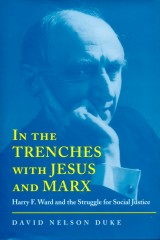 In the Trenches with Jesus and Marx: Harry F. Ward and the Struggle for Social Justice
David Duke
University of Alabama Press, 2006 This absorbing and insightful biography illuminates the life of the controversial champion of Social Gospel in early-20th-century America. Radical religious and political leader Harry F. Ward started life quietly enough in a family of Methodist shopkeepers and butchers in London. But his relentless pursuit of social justice would lead him to the United States and a long career of religious activism. Ward served as professor of Christian ethics at the Union Theological Seminary and chairman of the board of the American Civil Liberties Union for two decades. He also became a leader in labor groups, Protestant activist organizations, and New York intellectual circles.
David Duke builds his comprehensive story of this fiery leader from extensive archival sources, including FBI files and private correspondence, sermons, class notes, and other unpublished material. Duke skillfully charts Ward's rise from an idealistic Methodist minister in a Chicago stockyard parish to a prominent national religious leader and influential political figure. Ultimately, Ward's lifelong attempt to synthesize the beliefs of Jesus and Marx and his role as an admirer of the Soviet Union put him on a collision course with McCarthyism in Cold War America. Viewed by some as a prophet and by others as a heretic, traitor, and communist, Ward became increasingly marginalized as he stubbornly maintained his radical positions. Even in his own circle, he went from being a figure of unquestioned integrity who eloquently spoke his convictions to a tragically short-sighted idealogue whose unwavering pro-Soviet agenda blinded him to the horrors of Stalinist oppression.
Harry Ward's long, colorful career intersected nearly every intellectual current in American culture for more than a half century. This biography will be important for scholars of American religious history, students of liberalism and politics, social Christians, and general readers who enjoy a compelling tour into the private and public lives of notable figures of history.
In the Vineyard of the Text: A Commentary to Hugh's Didascalicon
Ivan Illich
University of Chicago Press, 1993 In a work with profound implications for the electronic age, Ivan Illich explores how revolutions in technology affect the way we read and understand text.
Examining the Didascalicon of Hugh of St. Victor, Illich celebrates the culture of the book from the twelfth century to the present. Hugh's work, at once an encyclopedia and guide to the art of reading, reveals a twelfth-century revolution as sweeping as that brought about by the invention of the printing press and equal in magnitude only to the changes of the computer age—the transition from reading as a vocal activity done in the monastery to reading as a predominantly silent activity performed by and for individuals.
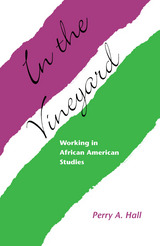 In the Vineyard: Working in African American Studies
Perry A. Hall
University of Tennessee Press, 2004 “This book is unprecedented in the field in its approach and content. . . . A must for the serious student in African American studies.”—Delores P. Aldridge, Emory University
The emergence of African American studies in the 1970s filled a critical gap in higher education. Now a prominent scholar who has helped to define the contours of that field integrates personal reflection with an analysis of its development to recount the political, cultural, and intellectual issues that helped shape the discipline.
A participant in the Black Student Movement in its early years, Perry A. Hall provides an insider's look at the struggle to persuade academia to accept the mission of Black Studies and the struggle inside the movement to define its objectives. He examines how the discipline evolved within the context of the wider social revolution changing the face of America, showing how the presence of blacks on campuses brought about the need for new perspectives in college curricula. And because African American Studies today represents a variety of approaches, he examines how they evolved and how they interact both within the field and with other areas of knowledge.
Hall critiques the popular "Afrocentric" approach in African American Studies, arguing that it is not synonymous with the discipline overall. He develops an alternative "transformationist" paradigm that builds on the idea of double-consciousness advanced by W. E. B. Du Bois and shows how it can be used to sort out conceptions of black identity that have emerged from sociology and psychology. He explores the importance of vernacular culture—especially popular music—in creating unique frames of reference for African Americans and also applies his paradigm to education and public policy analysis.
An important intellectual autobiography, Hall's work shows how insights gleaned over thirty years can be applied in the vineyards of academia today. Its message speaks clearly to scholars of his own generation and today's, and shows how African American Studies can continue to be relevant in the next century.
The Author: Perry A. Hall is associate professor of African and Afro-American Studies at the University of North Carolina–Chapel Hill and a former member of the executive board of the National Council for Black Studies. His articles have appeared in Western Journal of Black Studies, Word: A Black Culture Journal, Journal of Negro Education, and the Black Studies Handbook.
In the Voice of Others: Chinese Music Bureau Poetry
Joseph R. Allen
University of Michigan Press, 1992 In the Voice of Others applies new critical methods to medieval works in the genre known as Music Bureau poetry (yuefu shi), stripping away layers of ossified conventional reading to expose the genre’s vital core. Arguing that Music Bureau poetry is best understood in terms of the imitative poetics now known as intratextuality, Allen explores the evolution of yuefu poetry and issues central to all genre formation. In the Voice of Others culminates in an in-depth consideration of the acknowledged master of Music Bureau poetry, the Tang poet Li Bo (Li Po).
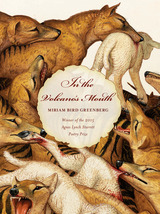 In the Volcano's Mouth
Miriam Bird Greenberg
University of Pittsburgh Press, 2016 Winner of the 2015 Agnes Lynch Starrett Poetry Prize
Winner of the 2017 Bob Bush Memorial Award for Best First Book of Poetry from the Texas Institute of Letters
Miriam Bird Greenberg’s stunning first collection, which roves across a lush, haunting rural America both real and imagined, observed from railyards and roadsides, evokes the world of myth (“I’d spent my childhood / in a house made of bees; on hot days honey // dripped through cracks in the ceiling,” she writes). Yet these capacious, exquisitely tensioned poems are rooted in Greenberg’s experiences hitchhiking and hopping freight trains across North America, or draw from her informal interviews with contemporary nomads, hobos, and others living on society’s edges. Beneath their surface runs a current of violence, whether at the hands of fate or men: she writes “Everyone knows // what happens to women // who hitchhike, constantly // trying a door to the other world made of lake / bottom or low forest, abandoned house // even wild animals / have rejected.” The result is a queering of On the Road, a feminist Frank Stanford at once vulnerable and canny. Richly textured, In the Volcano’s Mouth is an extraordinary portrait of life on the enchanted margins.
In the Wake of Chaos: Unpredictable Order in Dynamical Systems
Stephen H. Kellert
University of Chicago Press, 1993 Chaos theory has captured scientific and popular attention. What began as the discovery of randomness in simple physical systems has become a widespread fascination with "chaotic" models of everything from business cycles to brainwaves to heart attacks. But what exactly does this explosion of new research into chaotic phenomena mean for our understanding of the world? In this timely book, Stephen Kellert takes the first sustained look at the broad intellectual and philosophical questions raised by recent advances in chaos theory—its implications for science as a source of knowledge and for the very meaning of that knowledge itself.
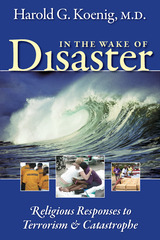 In the Wake of Disaster: Religious Responses to Terrorism and Catastrophe
Harold G Koenig
Templeton Press, 2006 In a timely book with a powerful and persuasive message, Dr. Harold G. Koenig addresses federal, state, and local government policy leaders, urging them to more fully integrate religious organizations into the formal disaster response system, and he then provides recommendations on how this can effectively be done. Koenig also advocates faith communities and organizations to learn more about the role they can play in responding to disasters and terrorism. The chaotic aftermath of Hurricane Katrina made extraordinarily clear the gaps in the United States' disaster policies. At the same time, the contributions of organized faith communities were highlights amidst the bungled federal, state, and local responses. One example is the New York Times, September 9, 2005, headline: "A New Meaning for 'Organized Religion': It Helps the Needy Quickly." But as faith-based organizations look for ways to help, there are few, if any, guidelines for them. This book provides information on the psychological, social, and spiritual responses to trauma. It addresses how the emergency response system works, and the role that religious communities can play in disaster response and recovery in terms of providing emotional and spiritual care for victims. It advocates integrating mental health into emergency response systems directed at those affected by hurricanes, floods, earthquakes, and terrorism. "The aim is to help victims of disaster to better cope with the stresses they face, as well as help direct care workers (firefighters, police, health care providers, etc.) to deal better emotionally with the trauma to which they are exposed so they can remain effective and functional on the job," explains Dr. Koenig, whose research on the healing power of faith has been published worldwide. Increasing the resiliency of our communities in the face of disaster is crucial. Religious communities have tremendous potential to contribute to this. Here are guidelines on how to do that more effectively, alongside data on how to facilitate the integration of these contributions with the formal disaster-response system.
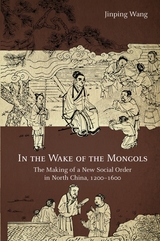 In the Wake of the Mongols: The Making of a New Social Order in North China, 1200–1600
Jinping Wang
Harvard University Press, 2018 The Mongol conquest of north China between 1211 and 1234 inflicted terrible wartime destruction, wiping out more than one-third of the population and dismantling the existing social order. In the Wake of the Mongols recounts the riveting story of how northern Chinese men and women adapted to these trying circumstances and interacted with their alien Mongol conquerors to create a drastically new social order. To construct this story, the book uses a previously unknown source of inscriptions recorded on stone tablets.
Jinping Wang explores a north China where Mongol patrons, Daoist priests, Buddhist monks, and sometimes single women—rather than Confucian gentry—exercised power and shaped events, a portrait that upends the conventional view of imperial Chinese society. Setting the stage by portraying the late Jin and closing by tracing the Mongol period’s legacy during the Ming dynasty, she delineates the changing social dynamics over four centuries in the northern province of Shanxi, still a poorly understood region.
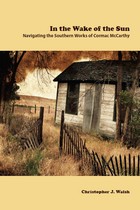 In the Wake of the Sun: Navigating the Southern Works of Cormac McCarthy
J. Christopher Walsh
University of Tennessee Press, 2010
Dr. Chris Walsh’s scholarship has resulted in a new study on one of America’s leading authors. In the Wake of the Sun: Navigating the Southern Works of Cormac McCarthy offers close textual analysis of all of McCarthy’s Southern works along with an overview of the notable critical responses to them. The book is designed for use by scholars, teachers, and students at all levels.
McCarthy’s works set in the desert Southwest have received substantial critical and commercial acclaim. However, his Appalachian texts—which include two short stories written as an undergraduate at the University of Tennessee, five novels (including the Pulitzer Prize winner The Road), a play, and a screenplay—rival the Southwestern works in terms of their aesthetic achievement and complexity. In the Wake of the Sun introduces readers, scholars, and students to the pertinent themes in each text while also walking them through the most significant critical dialogues surrounding the texts.
|
|
